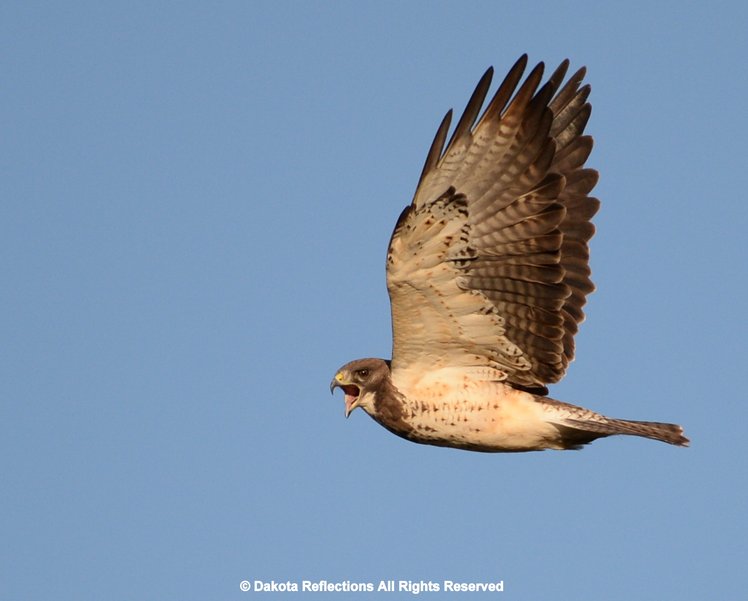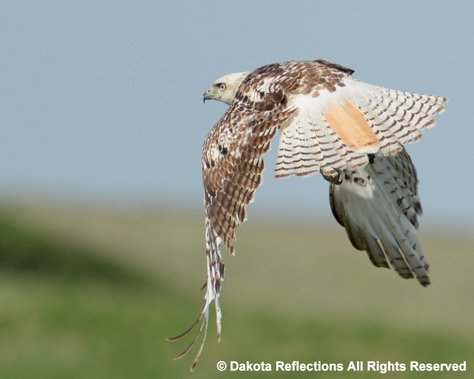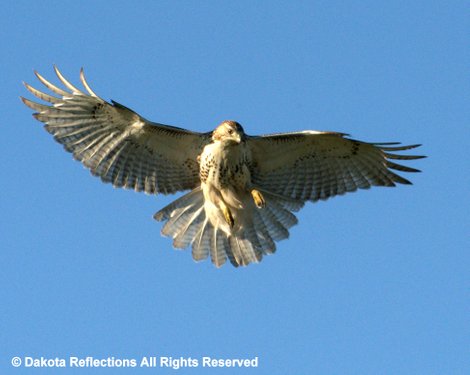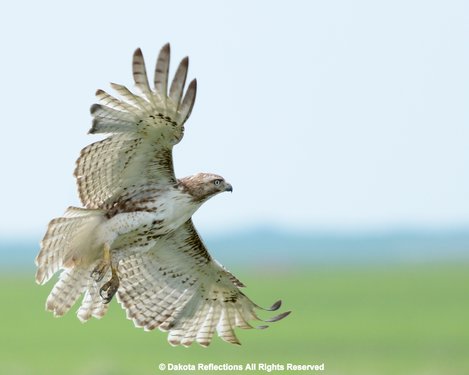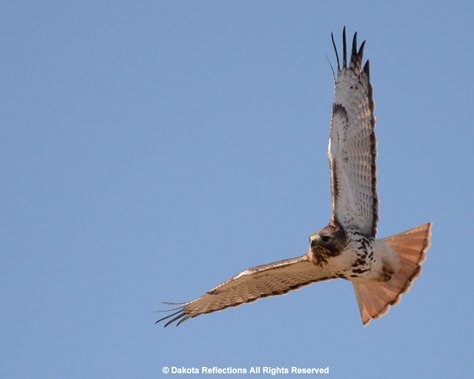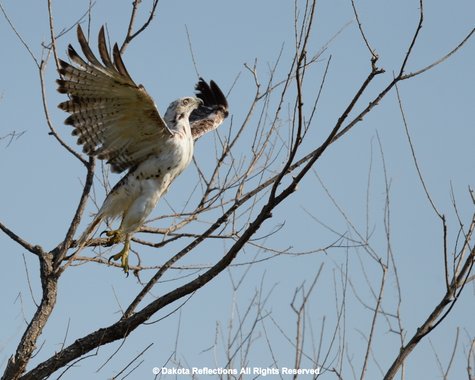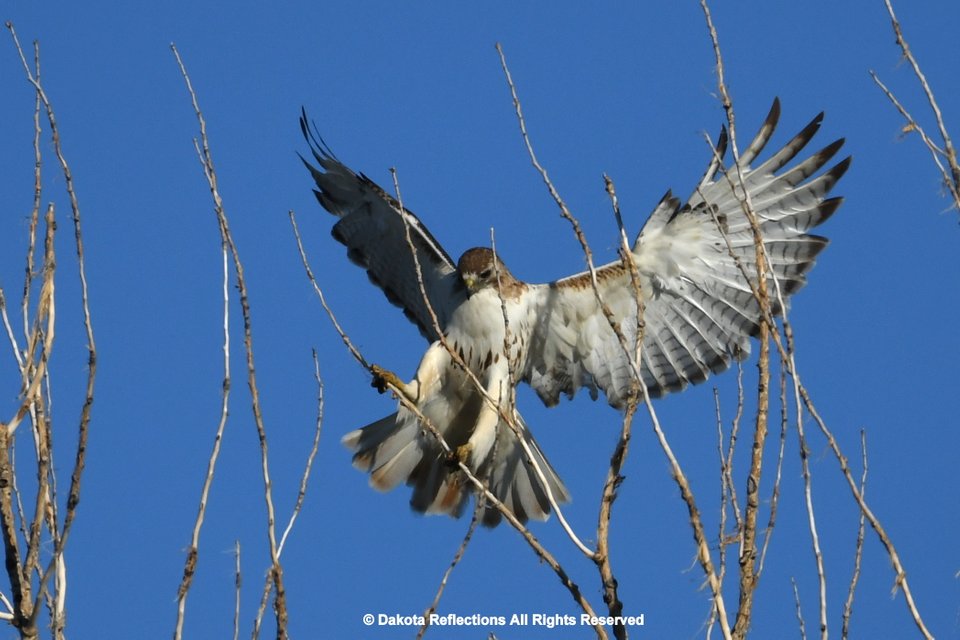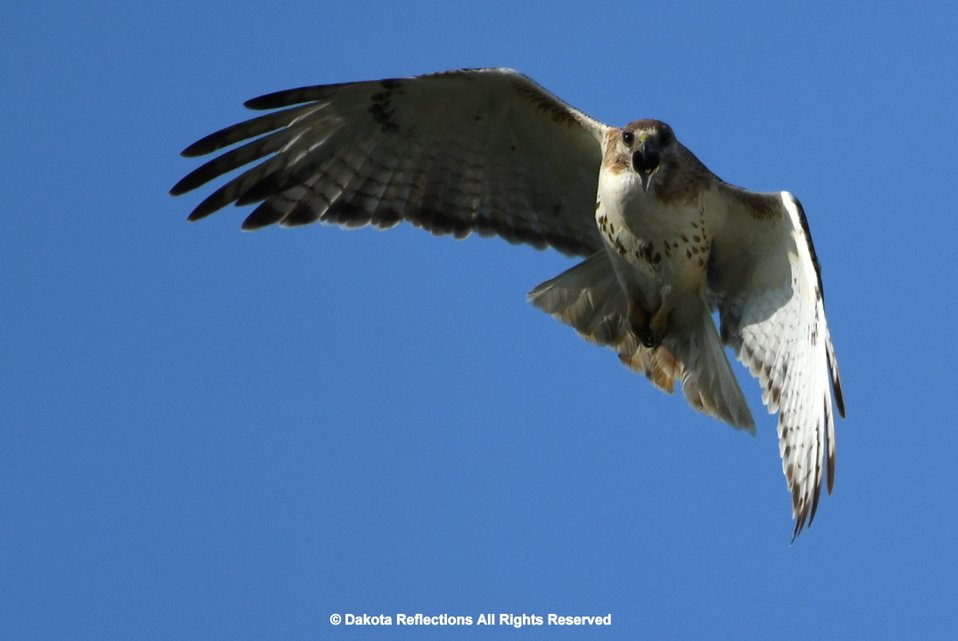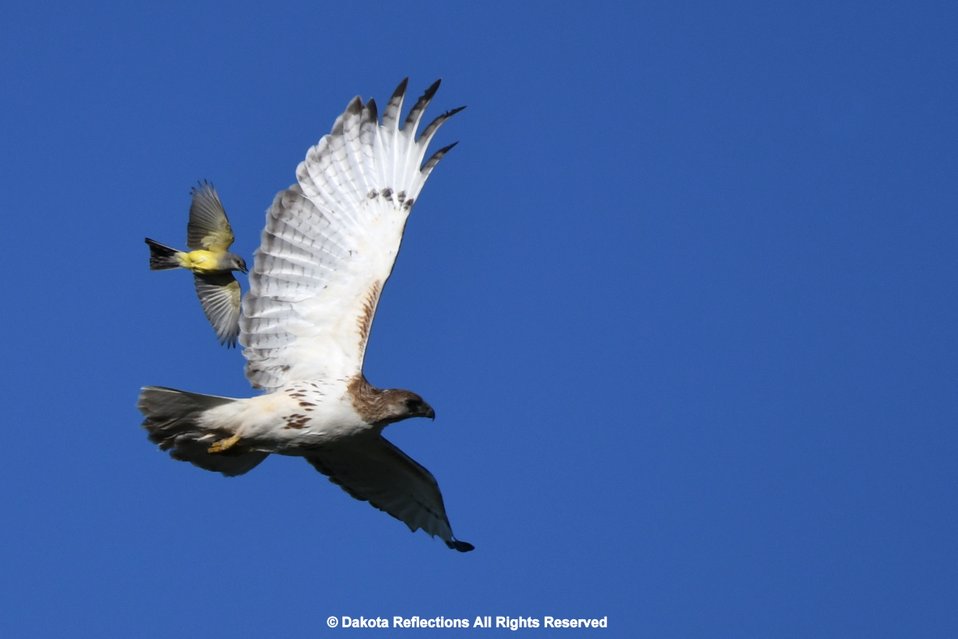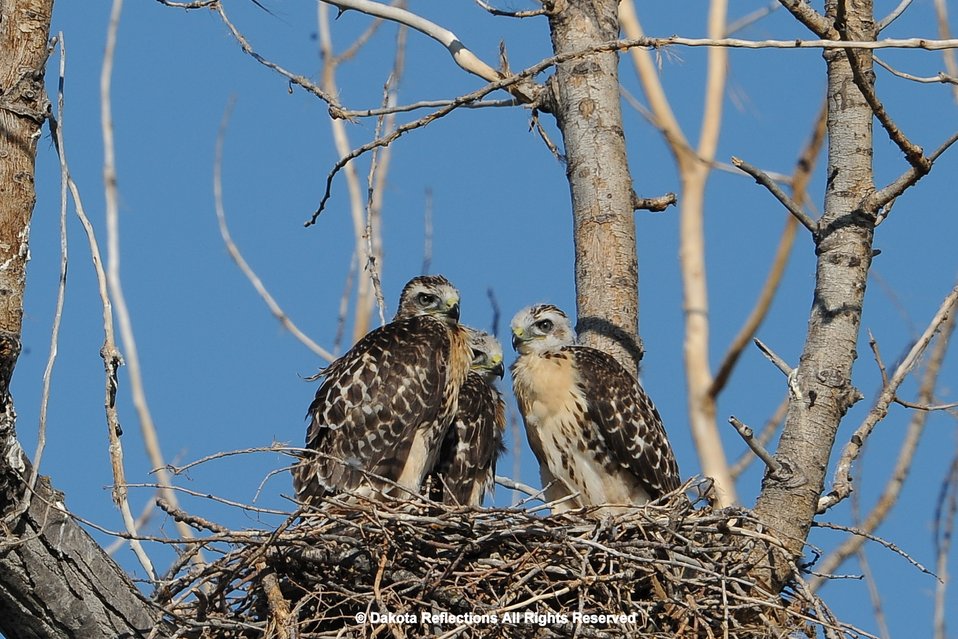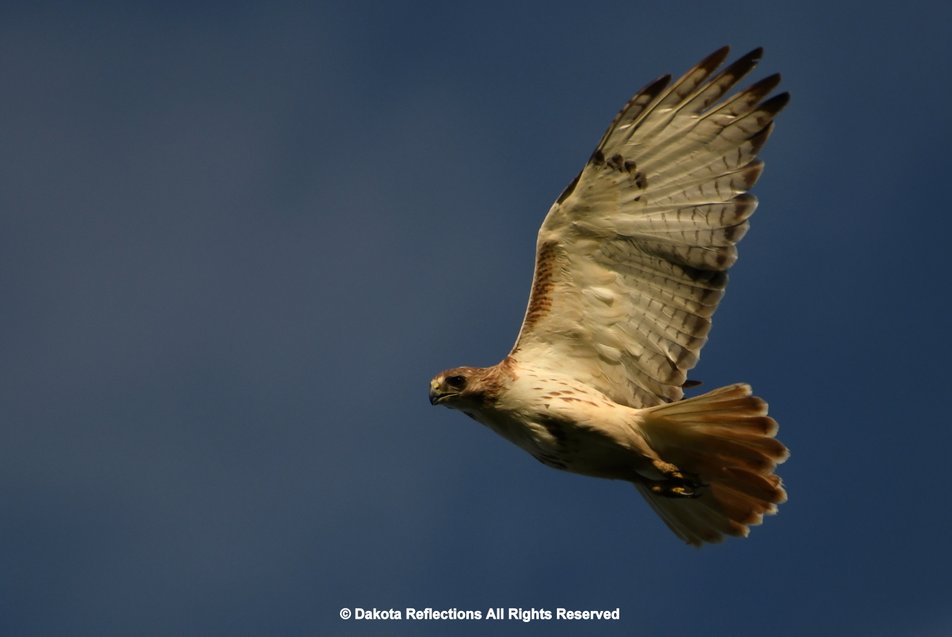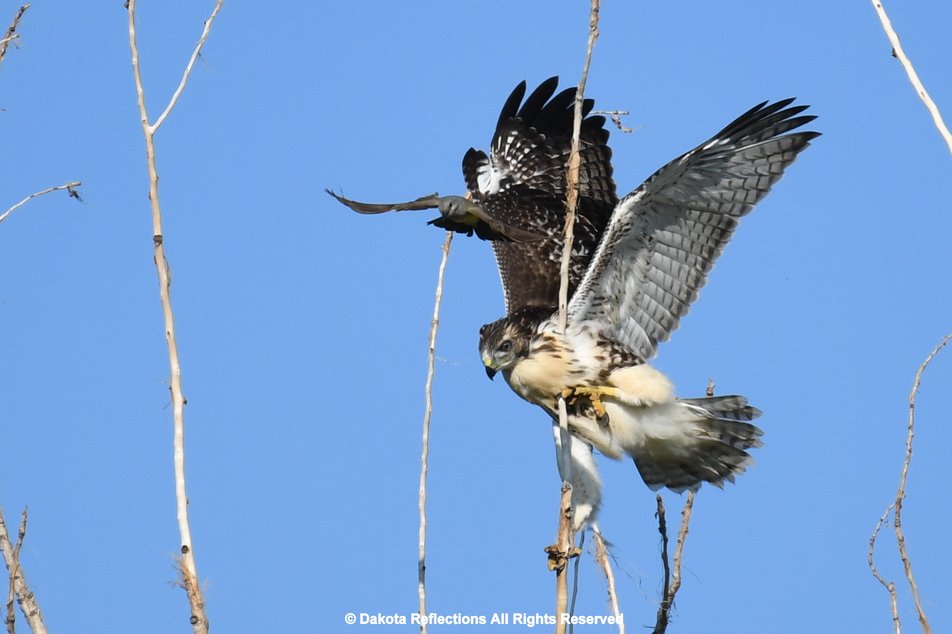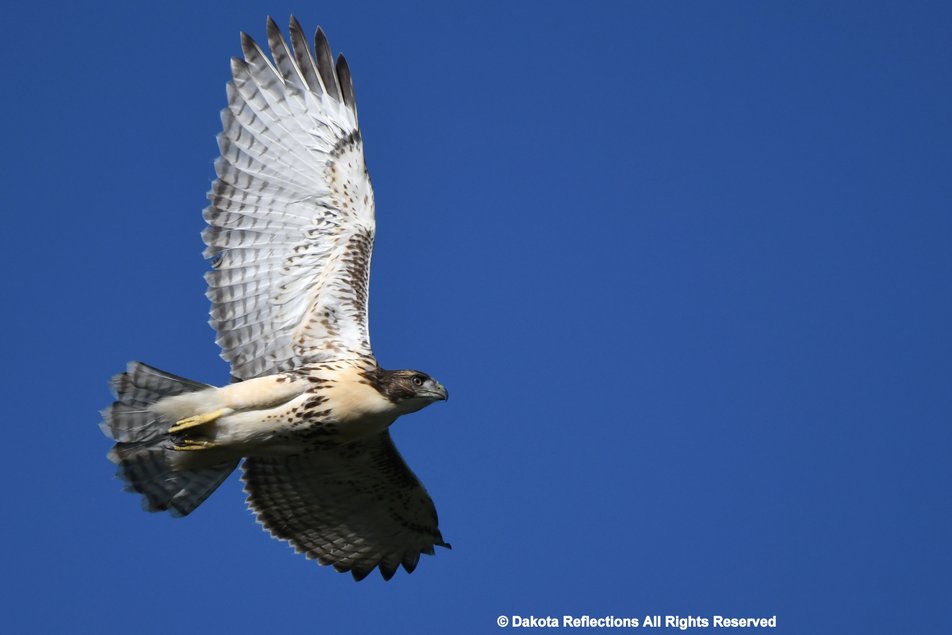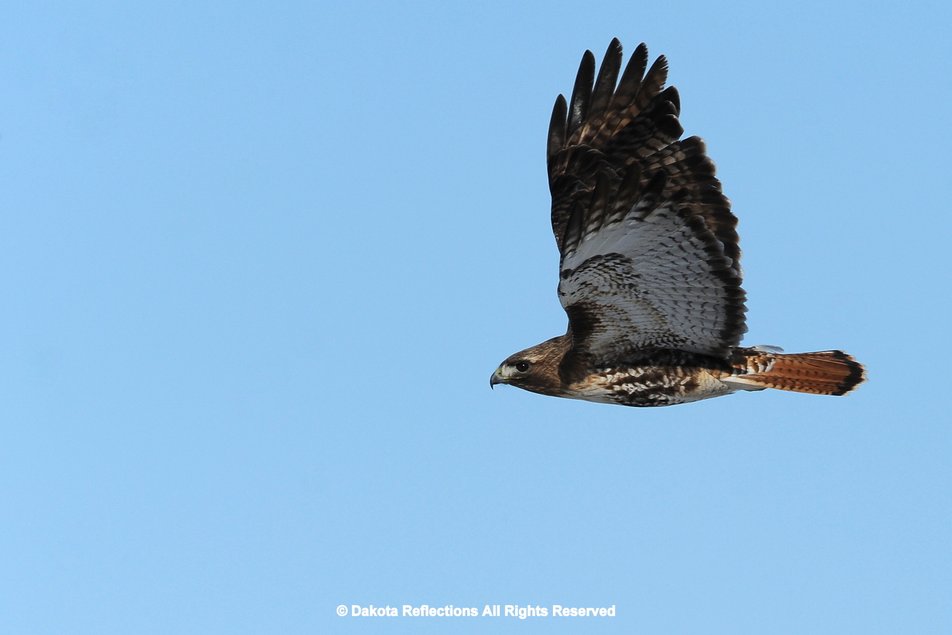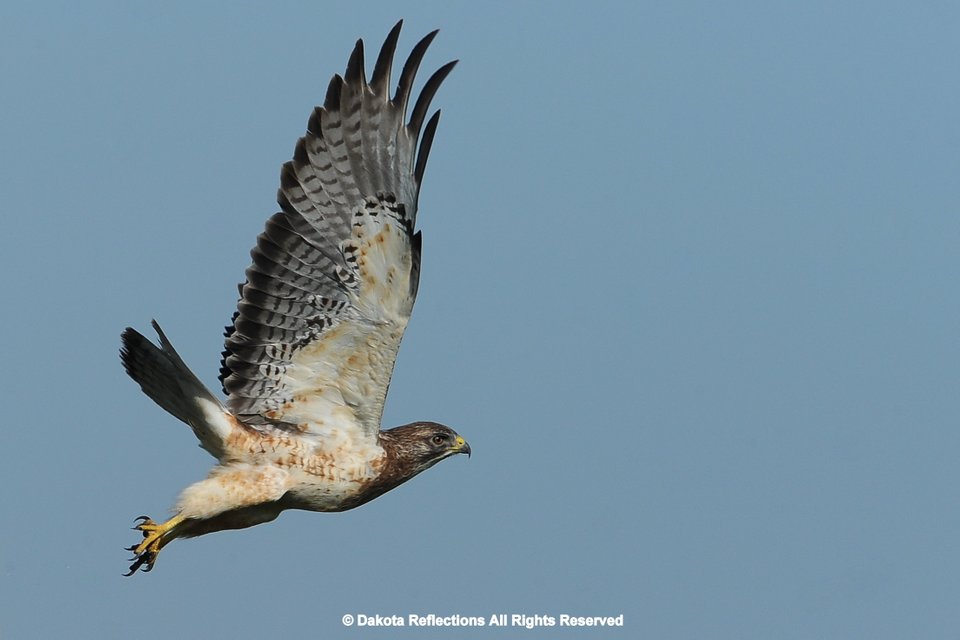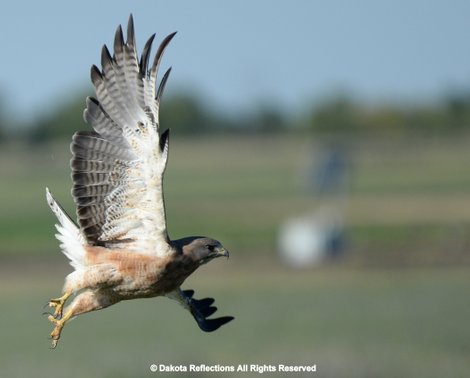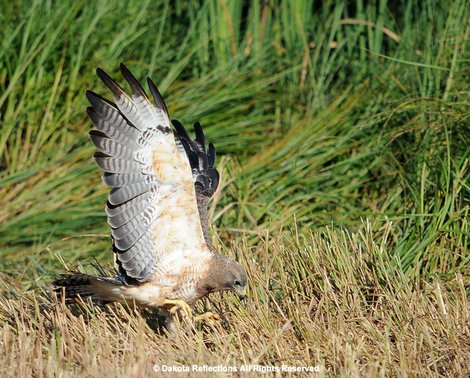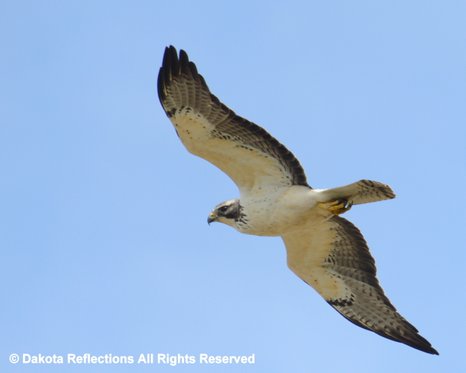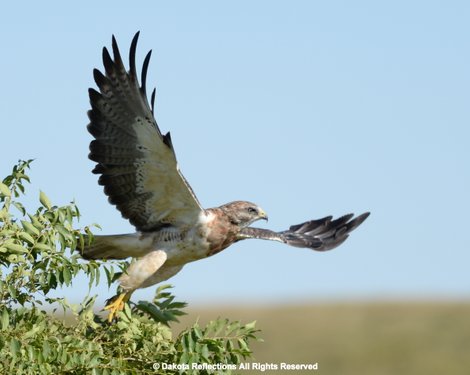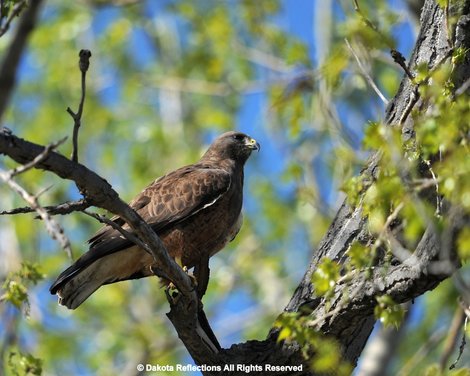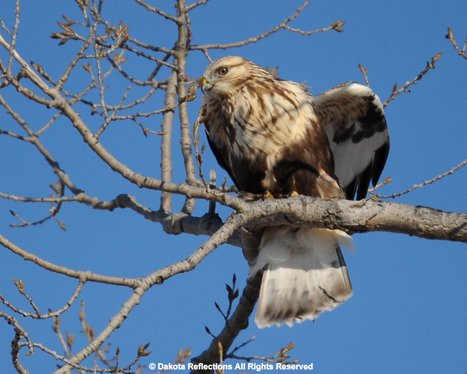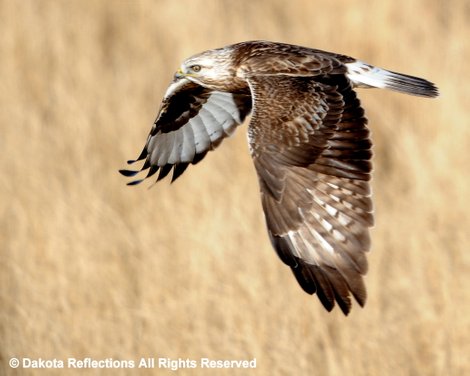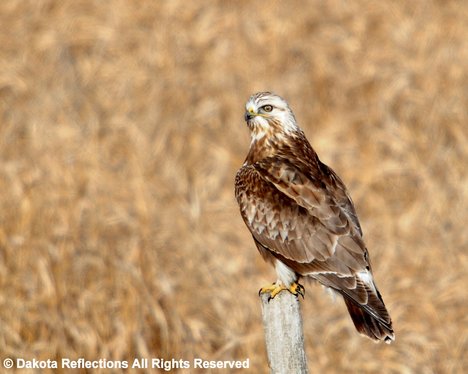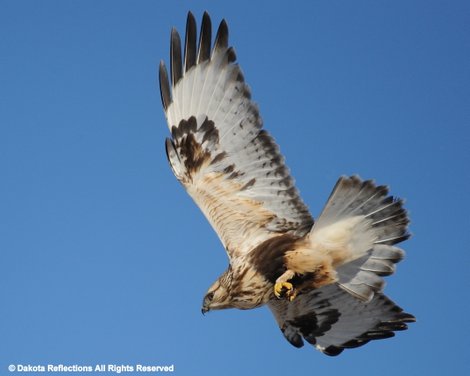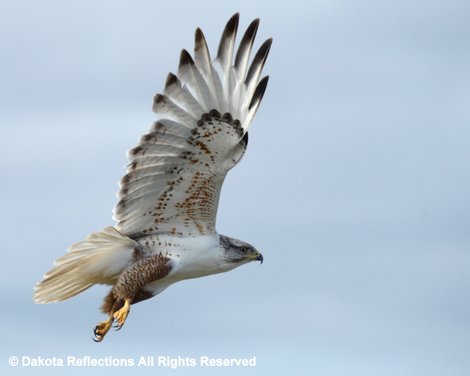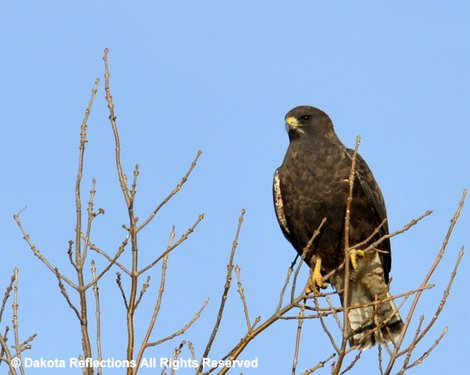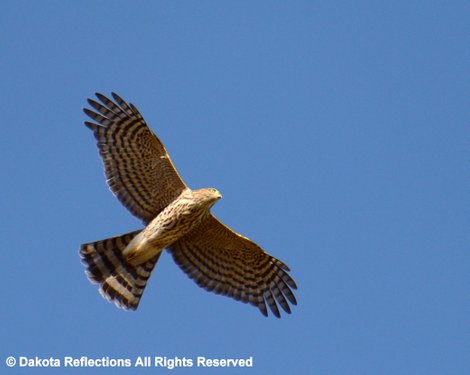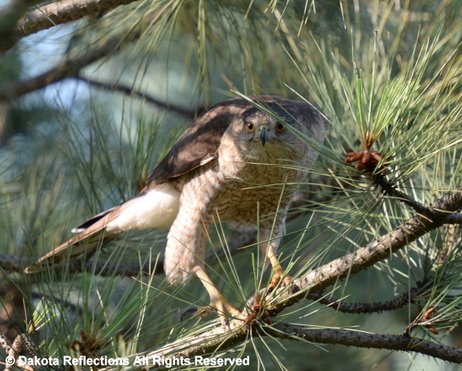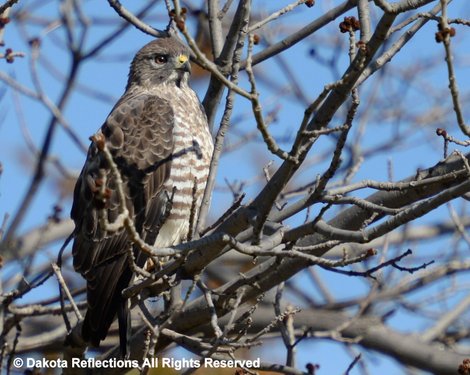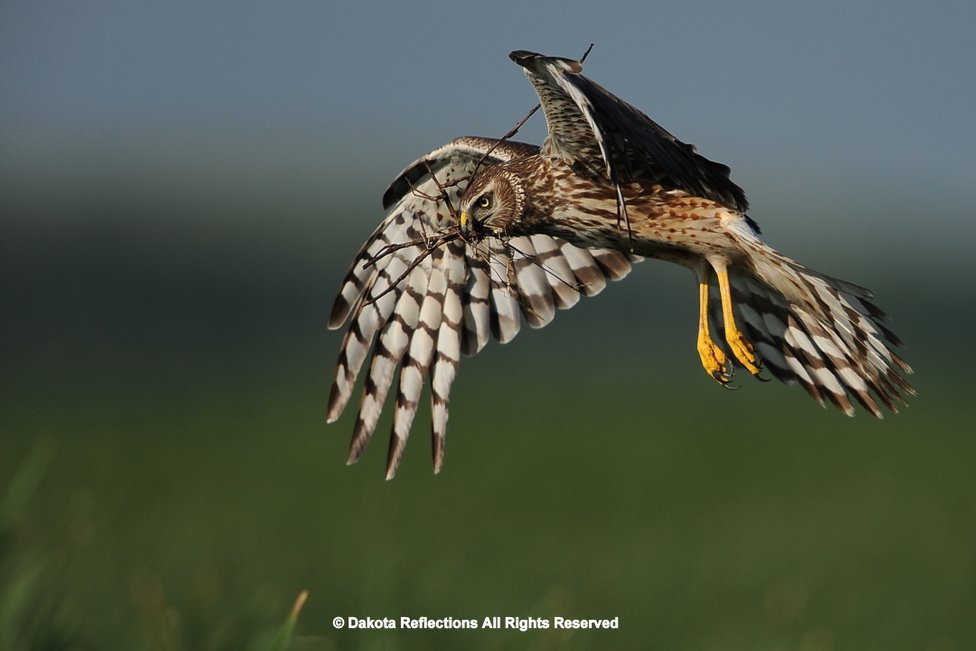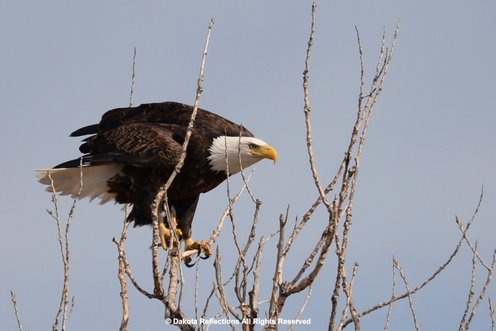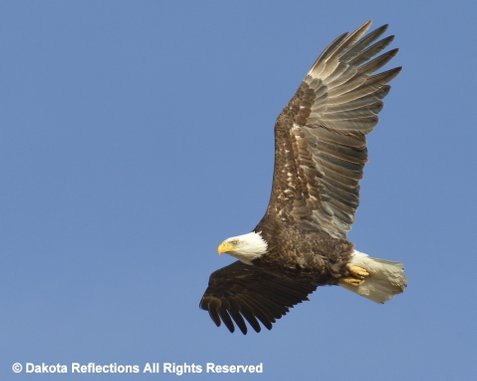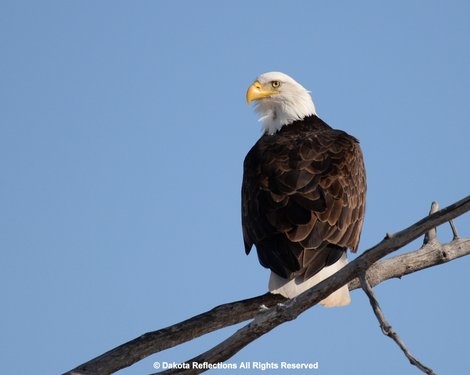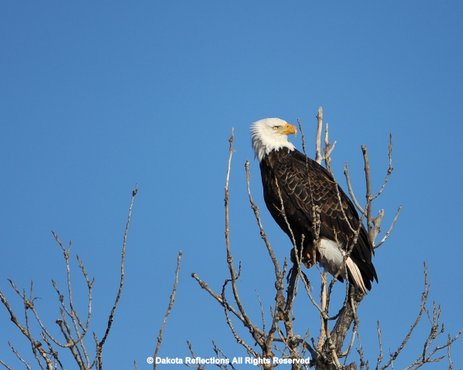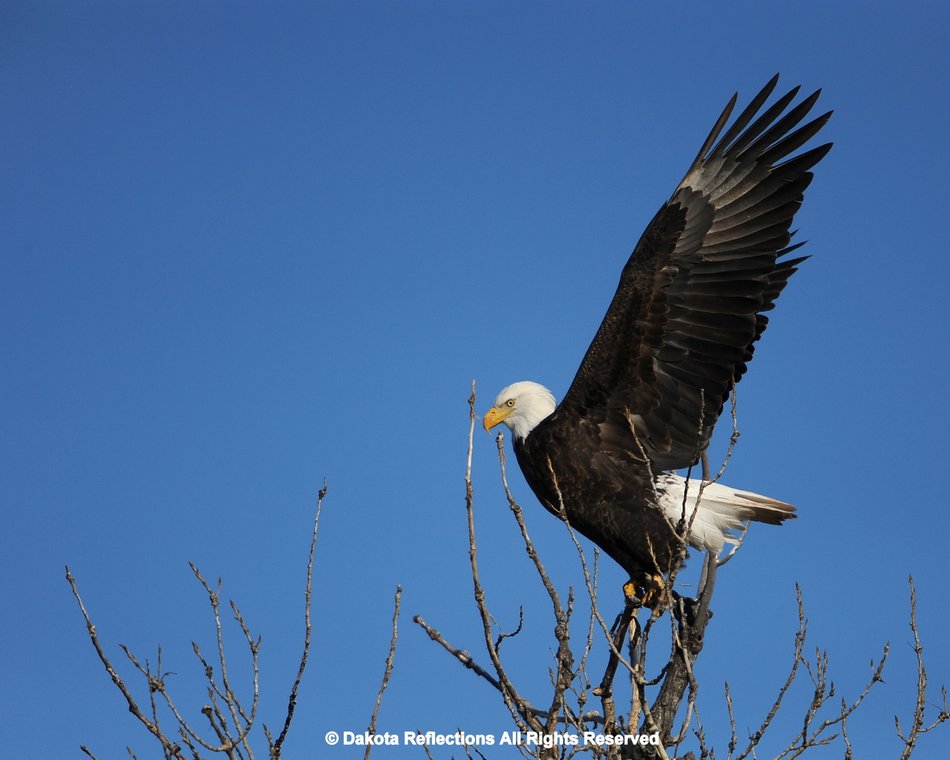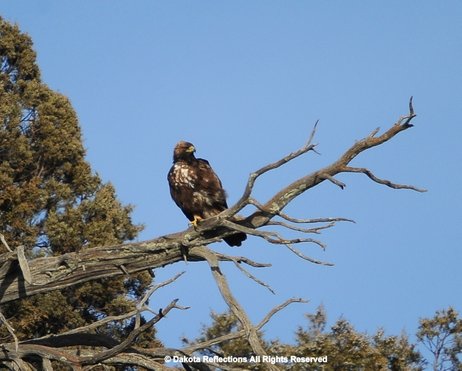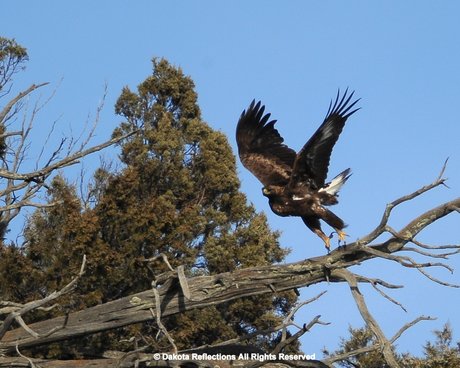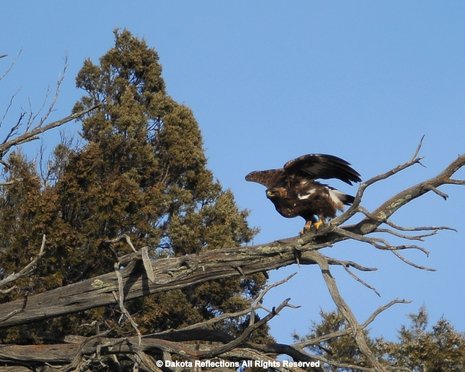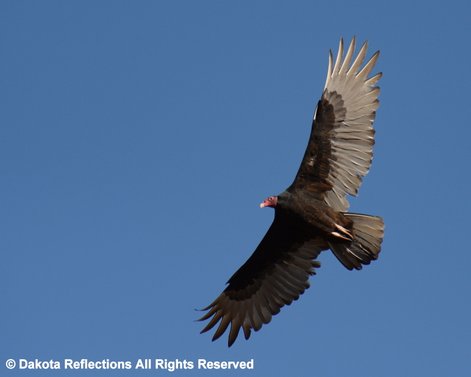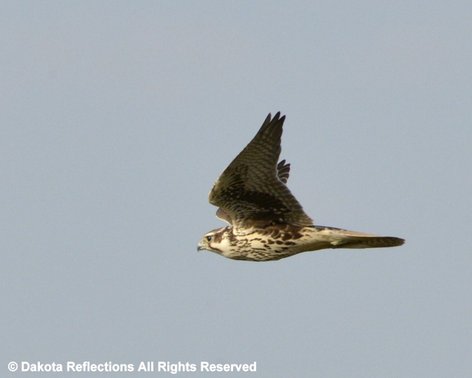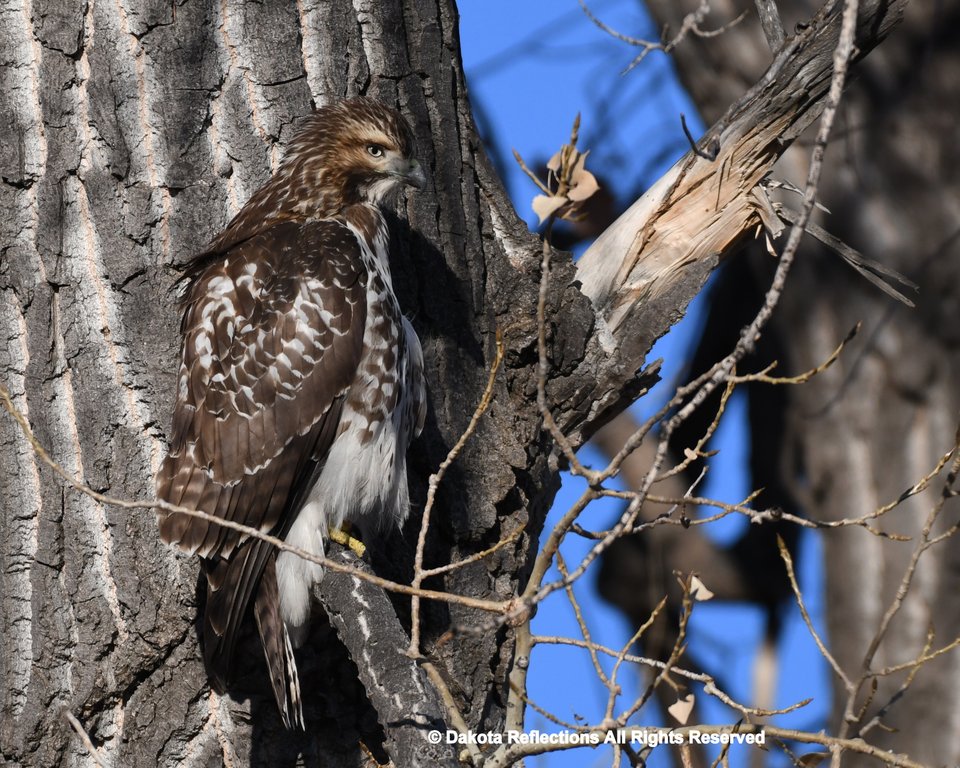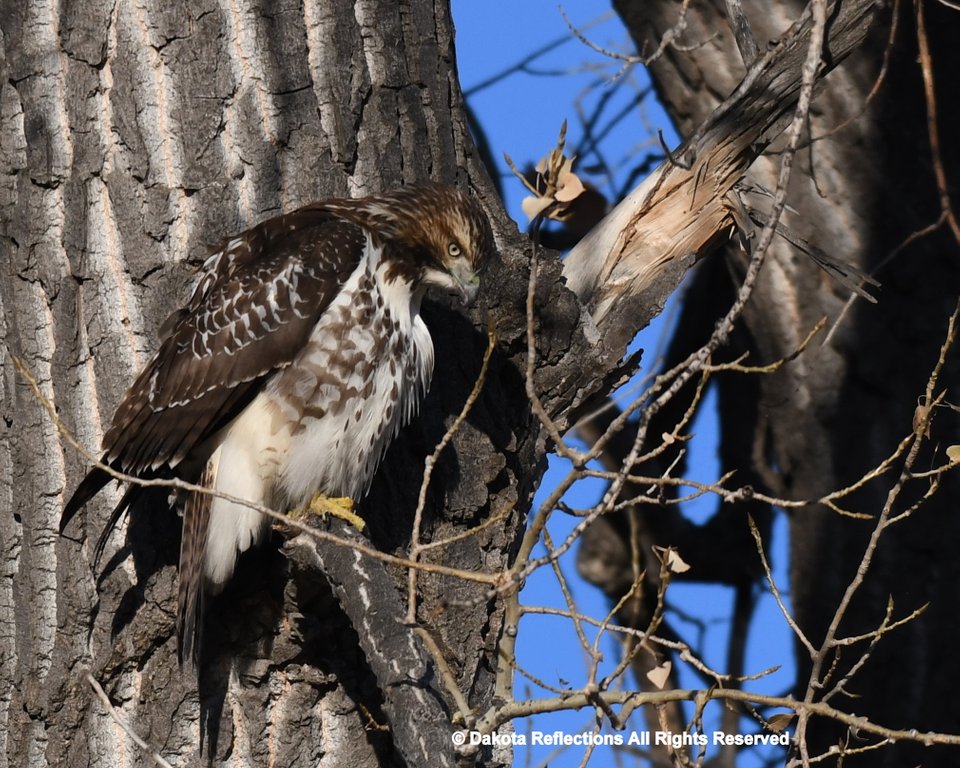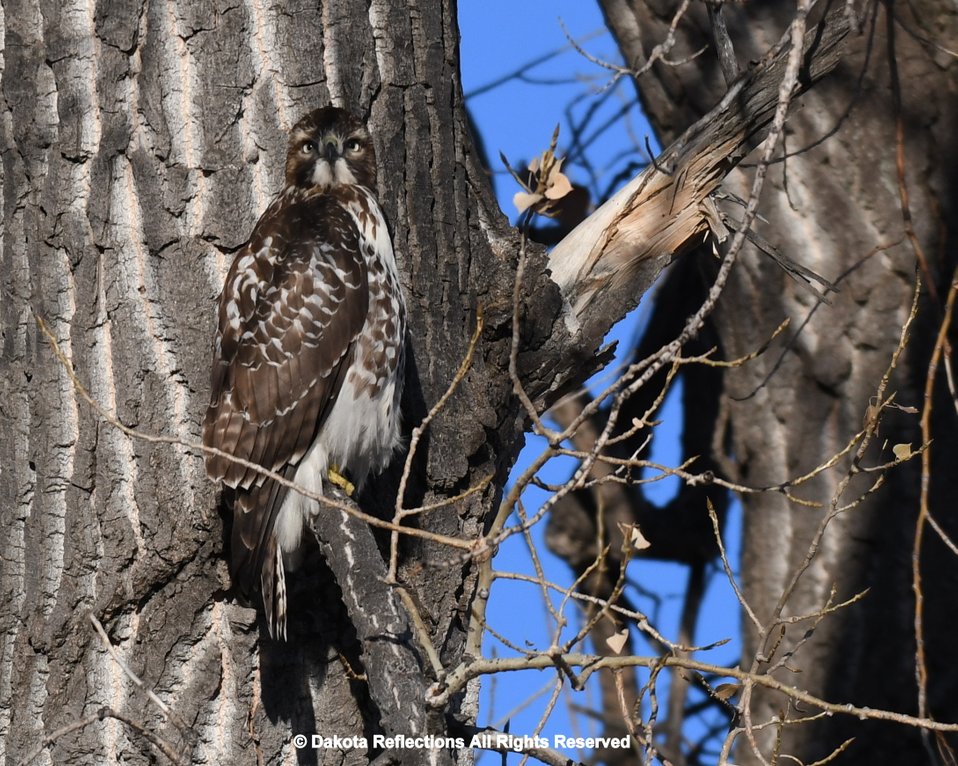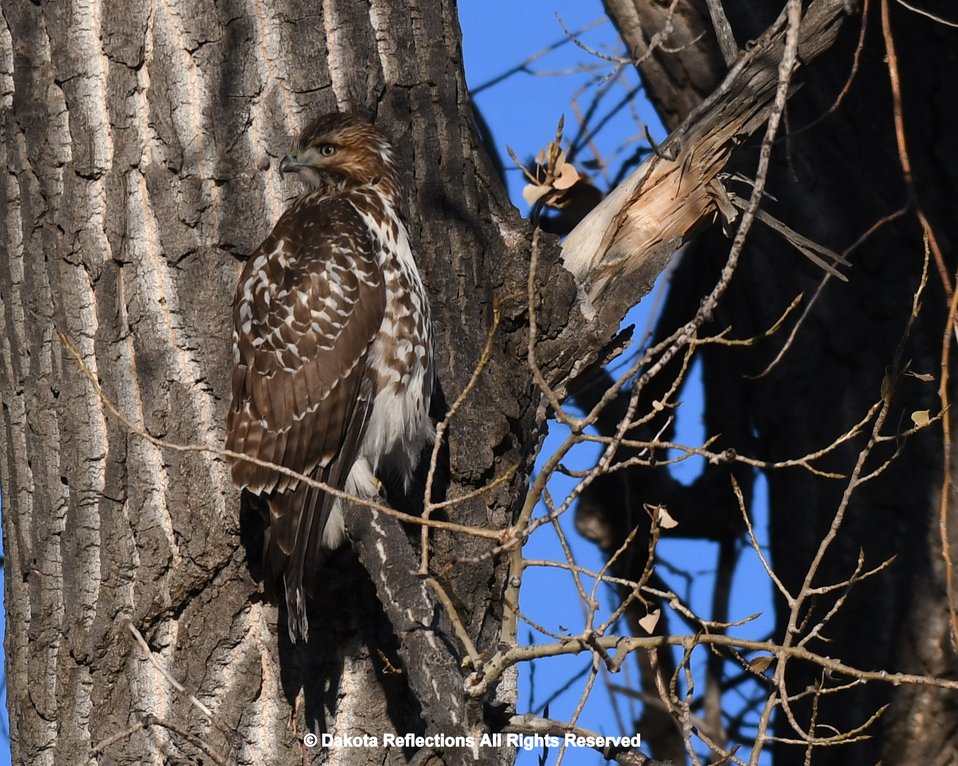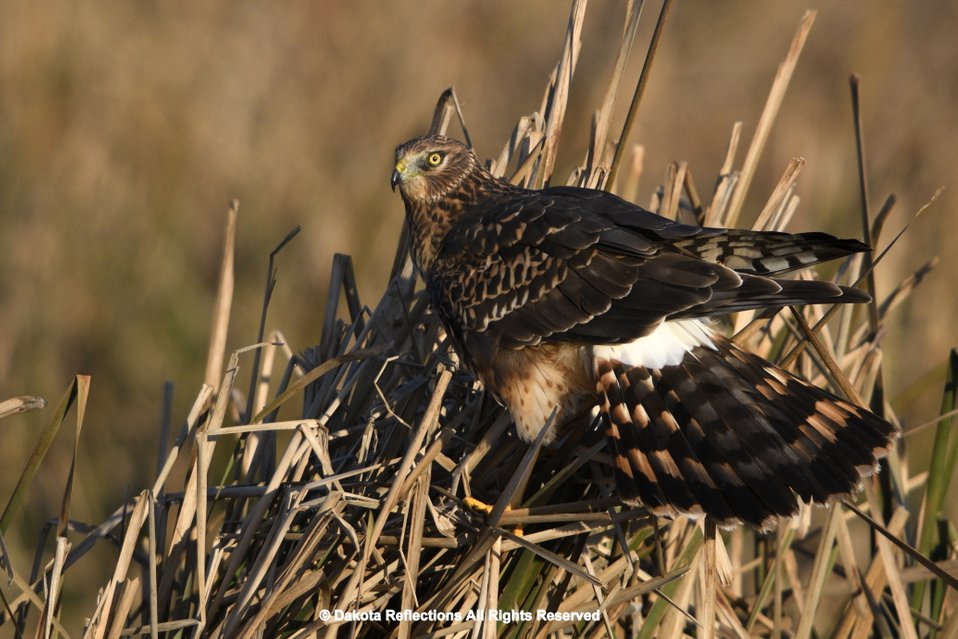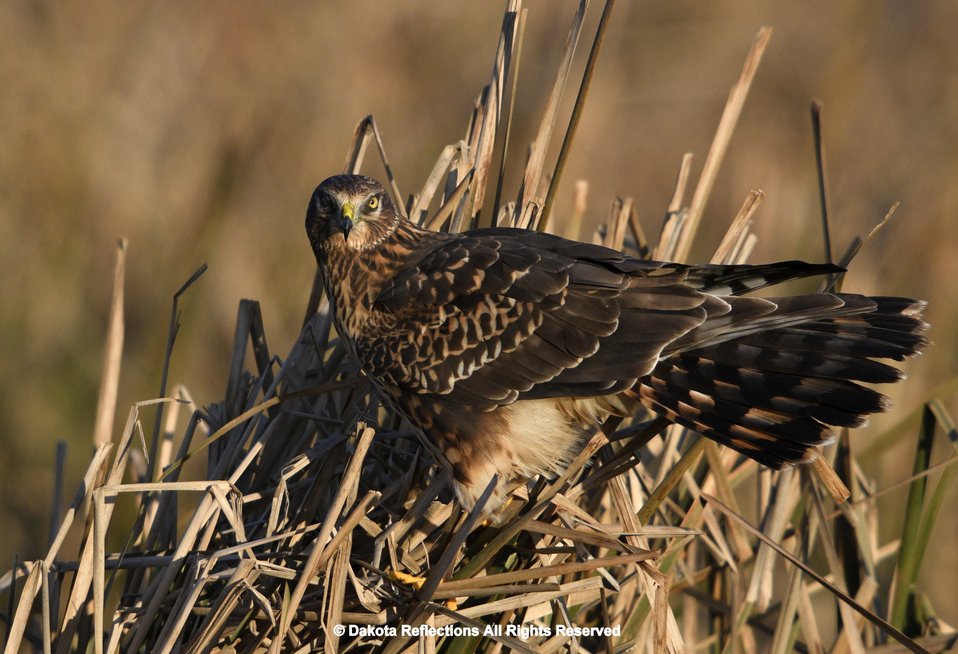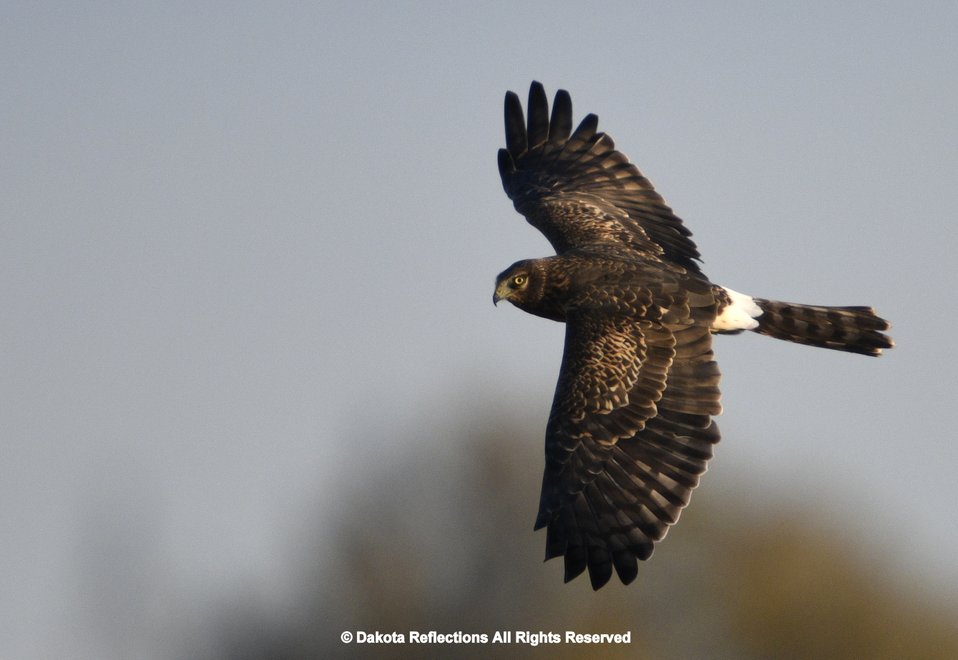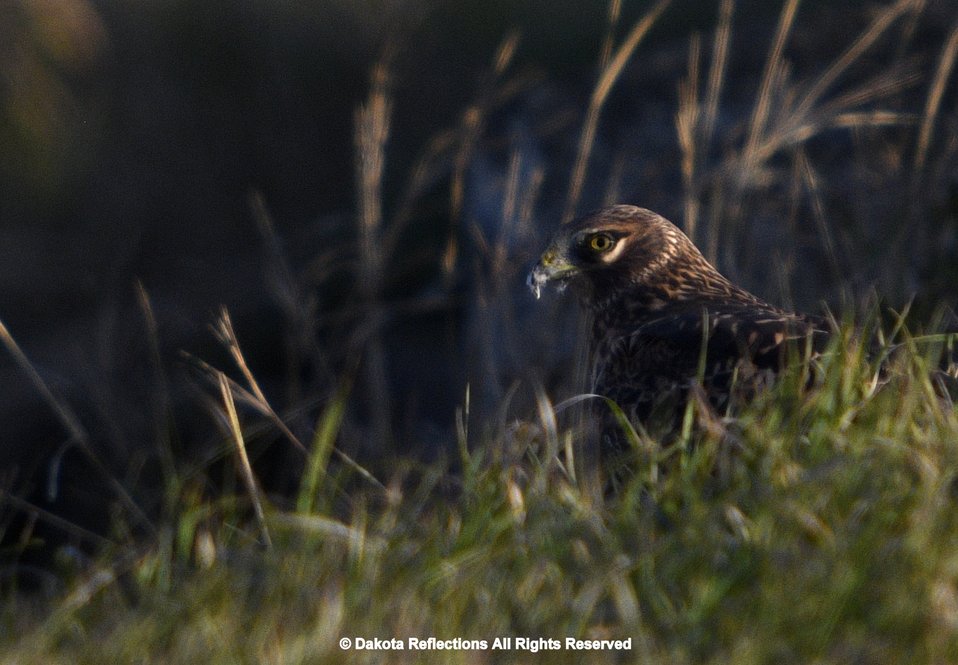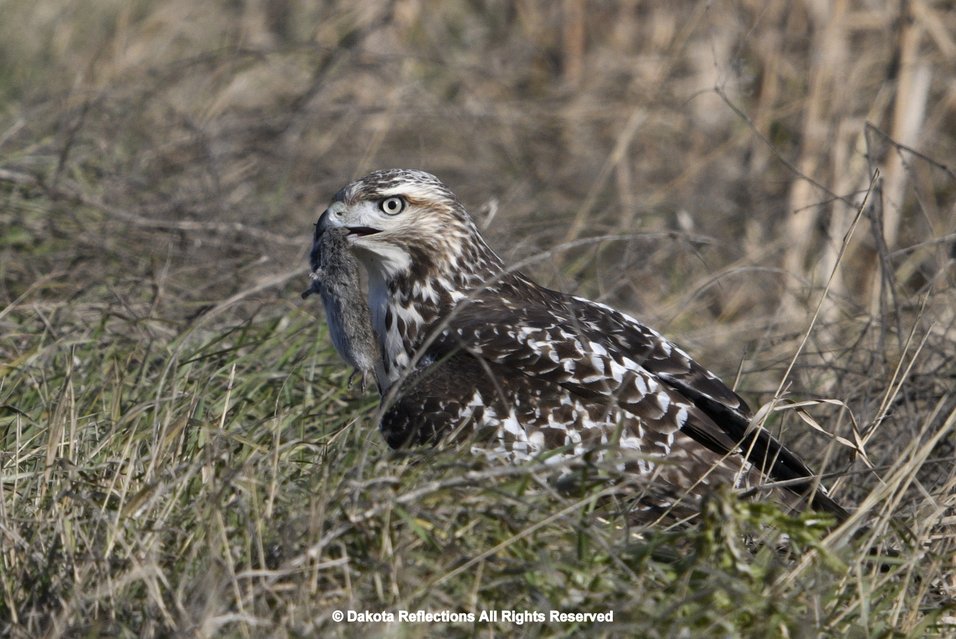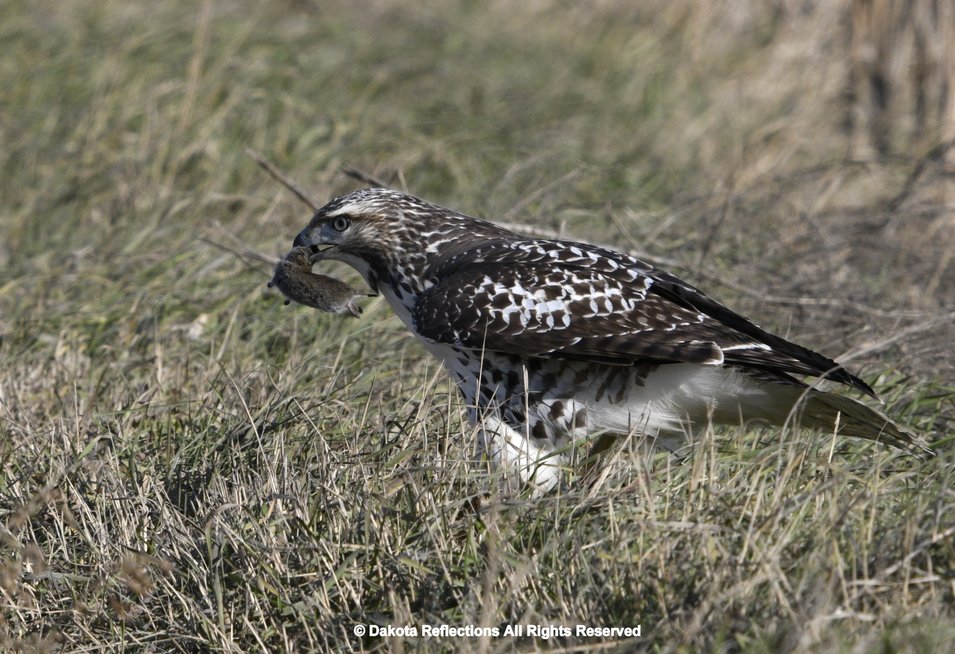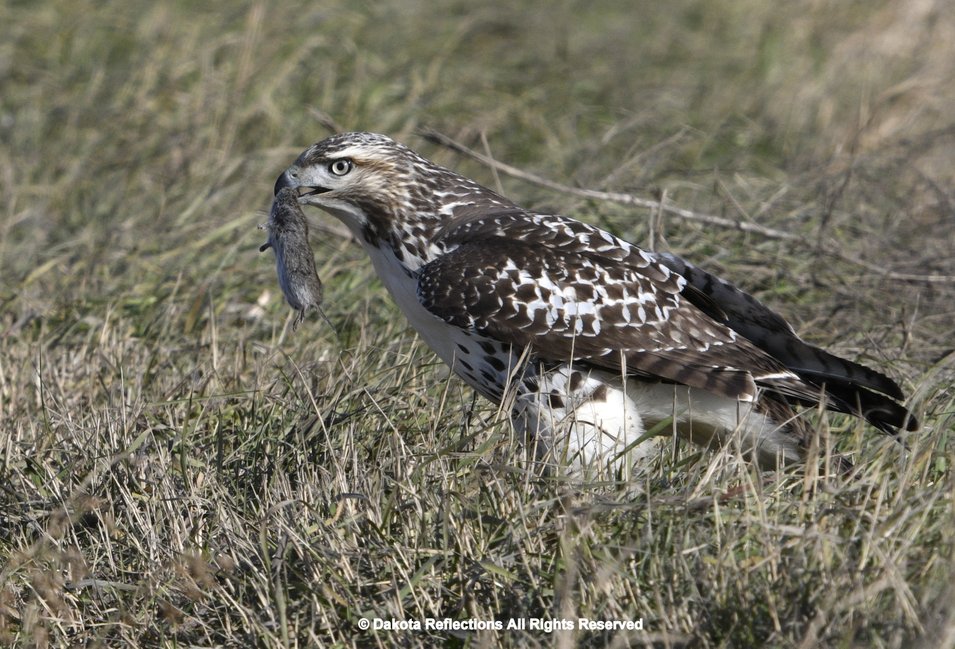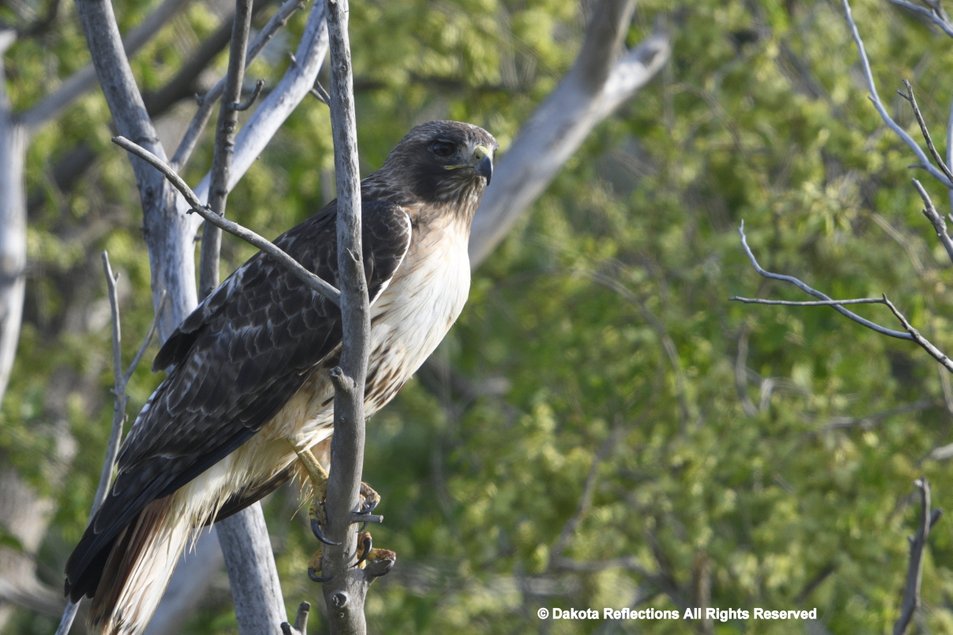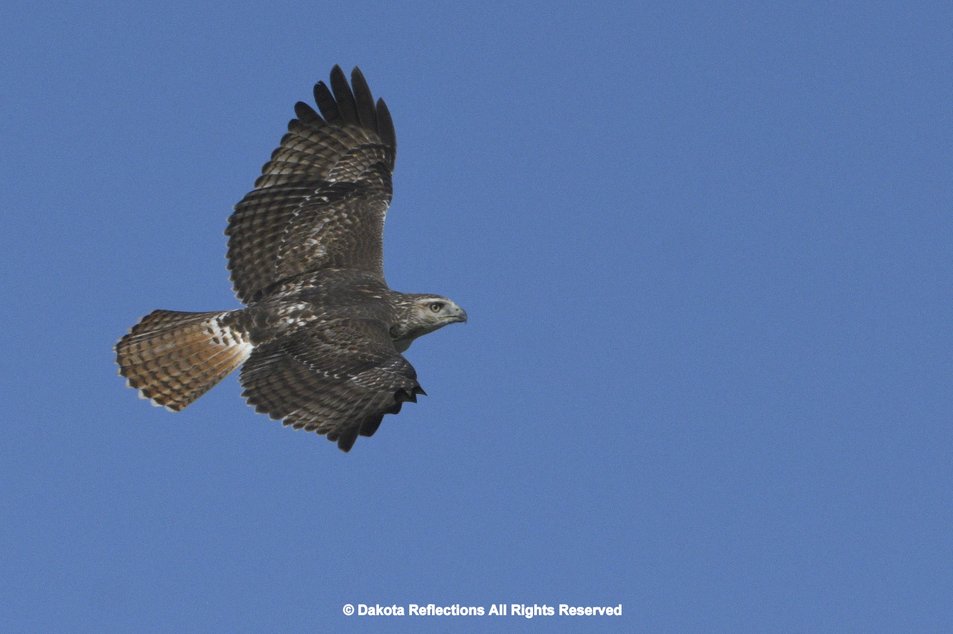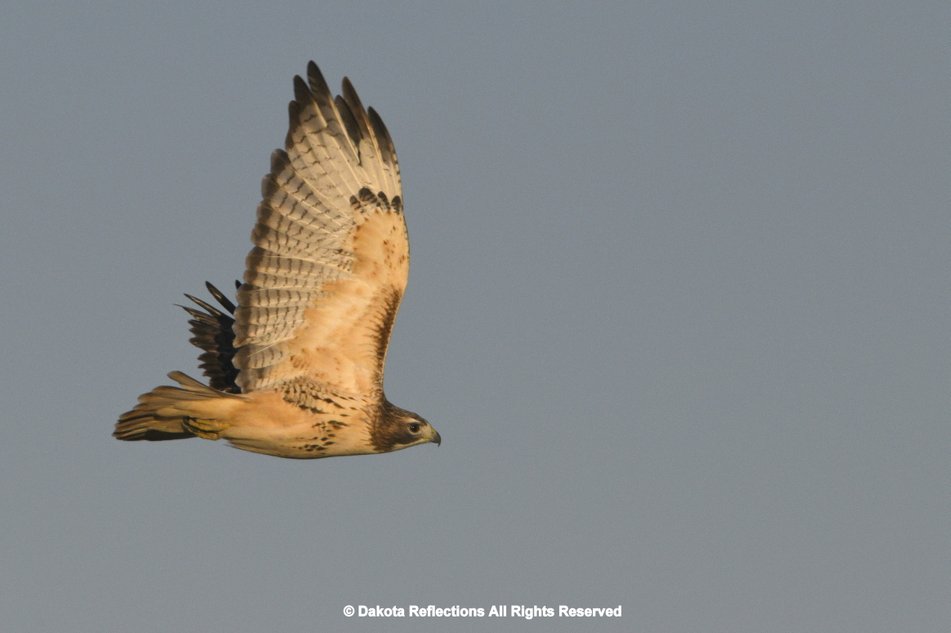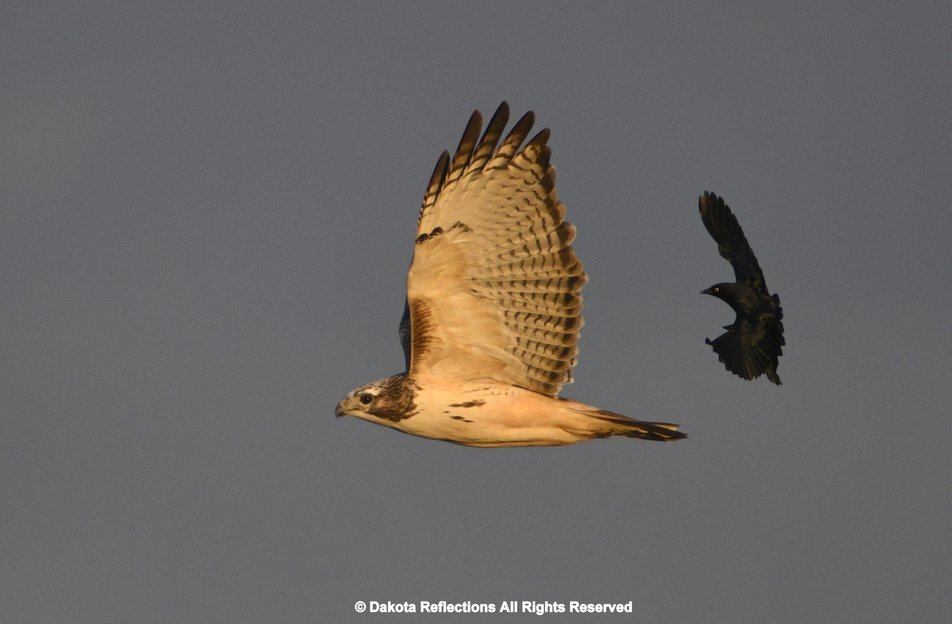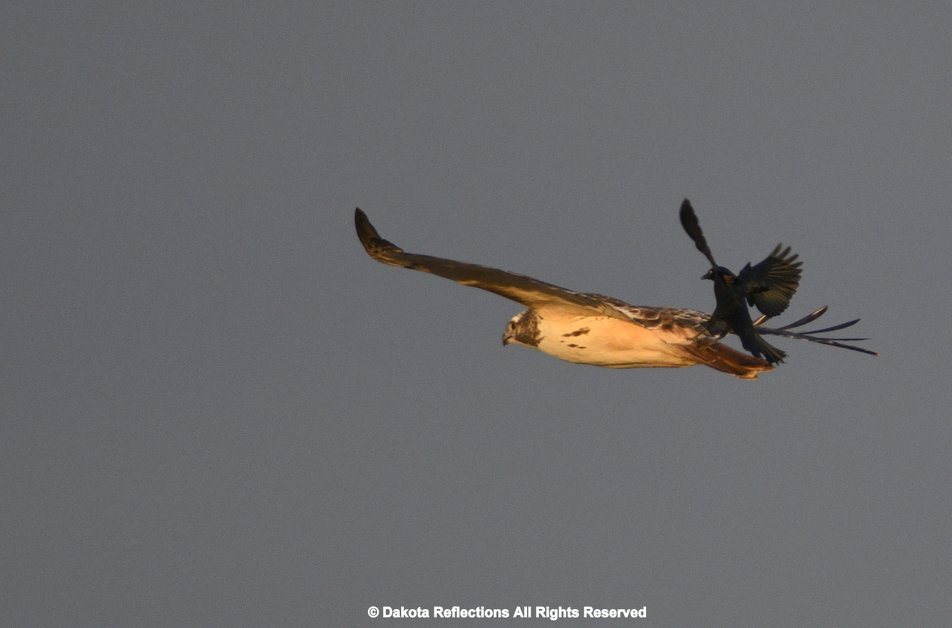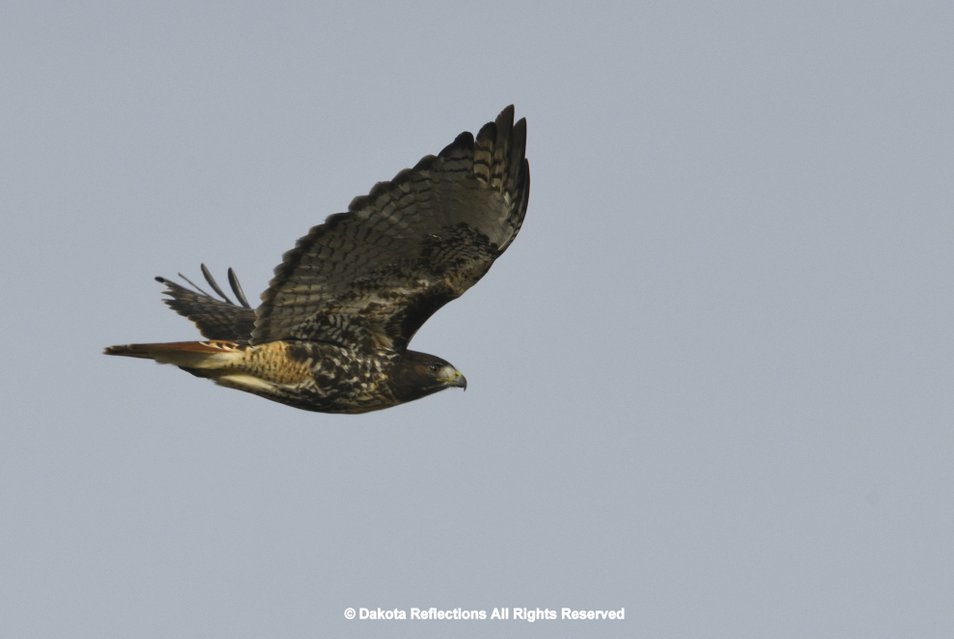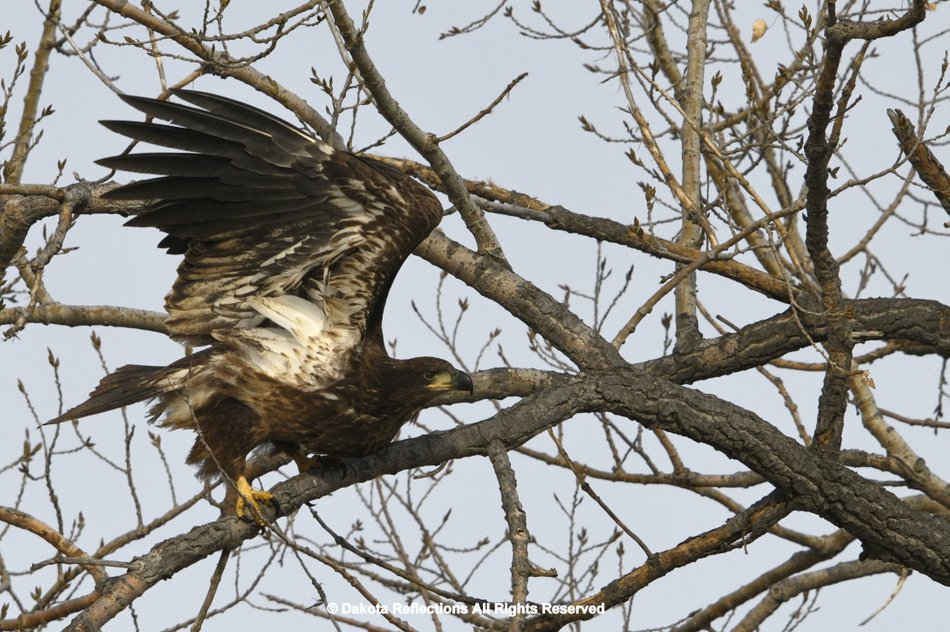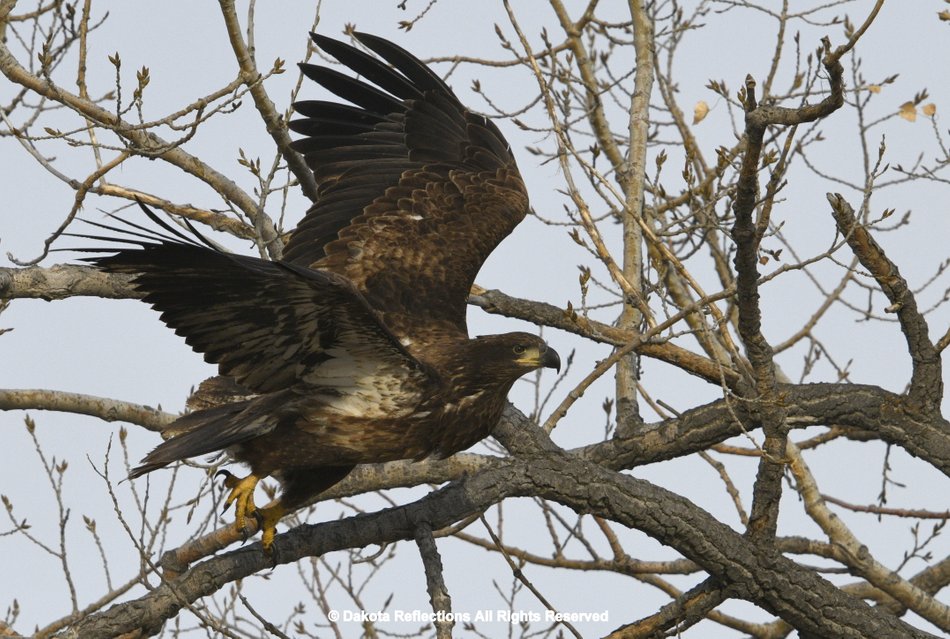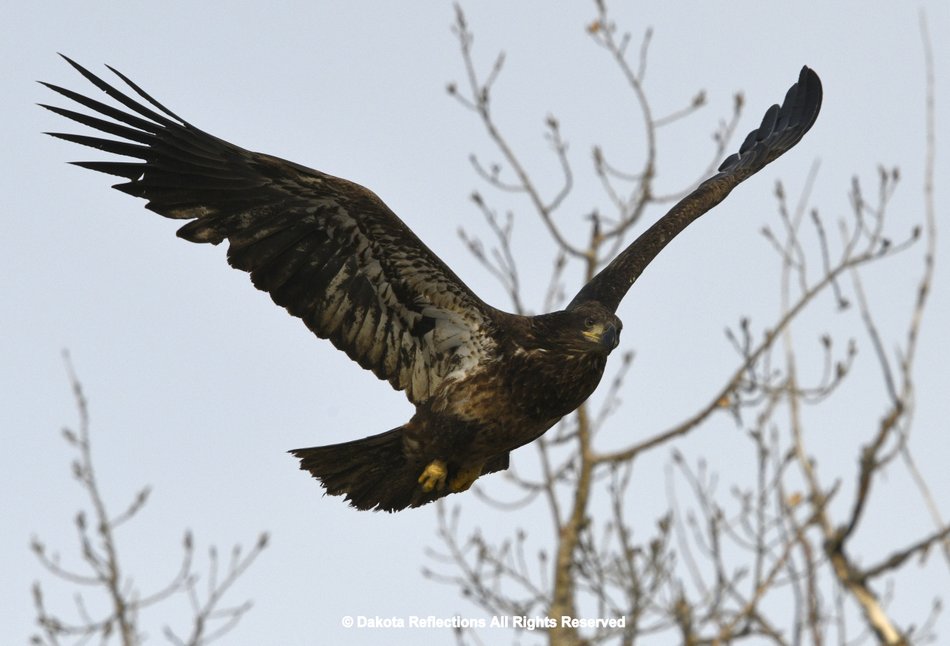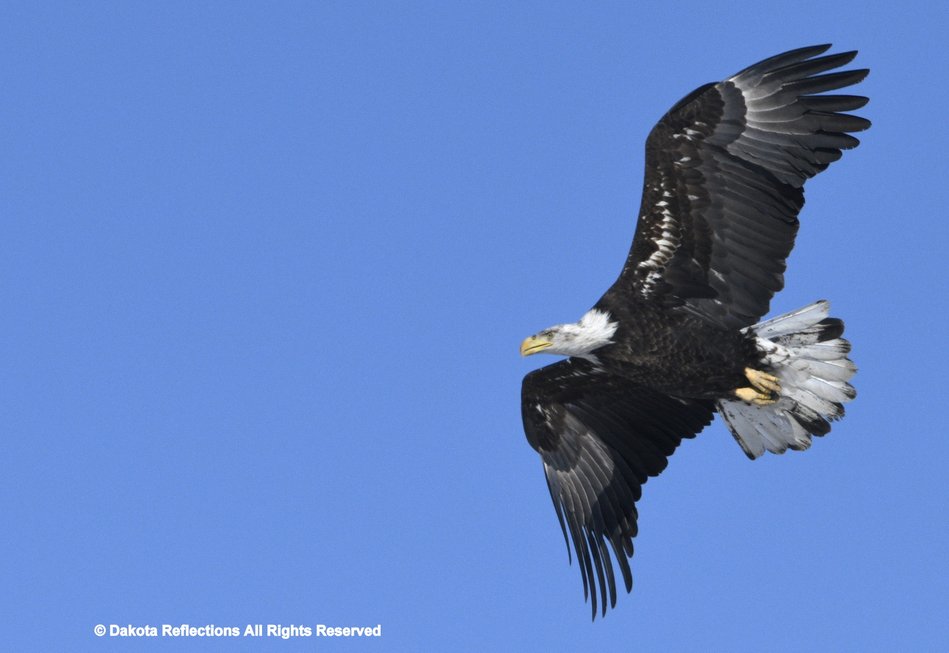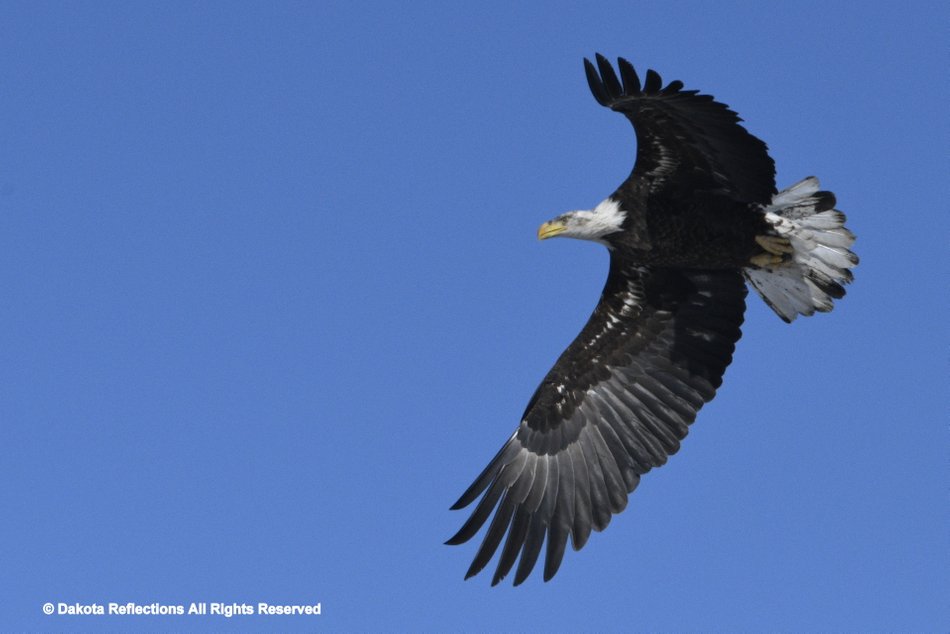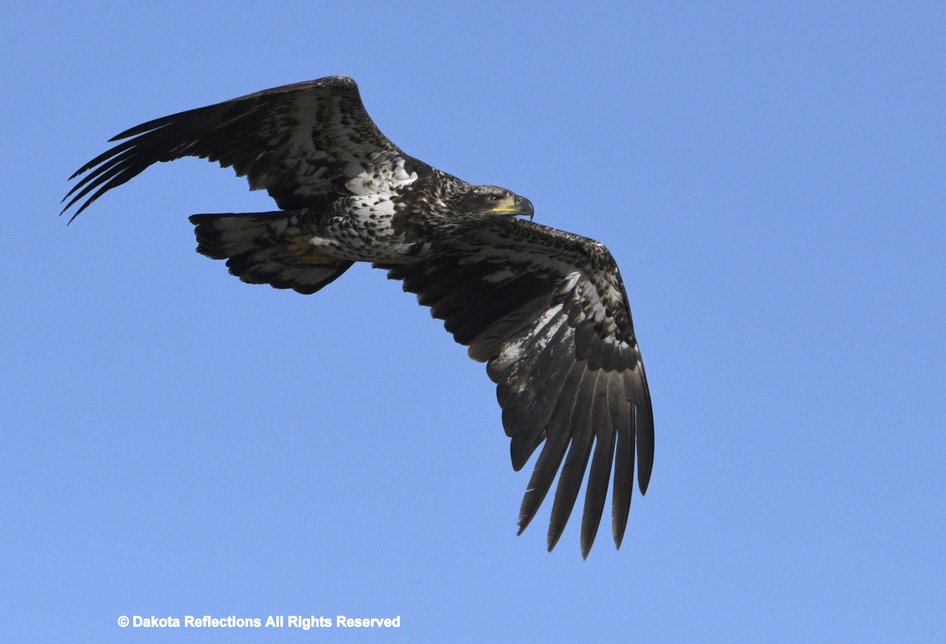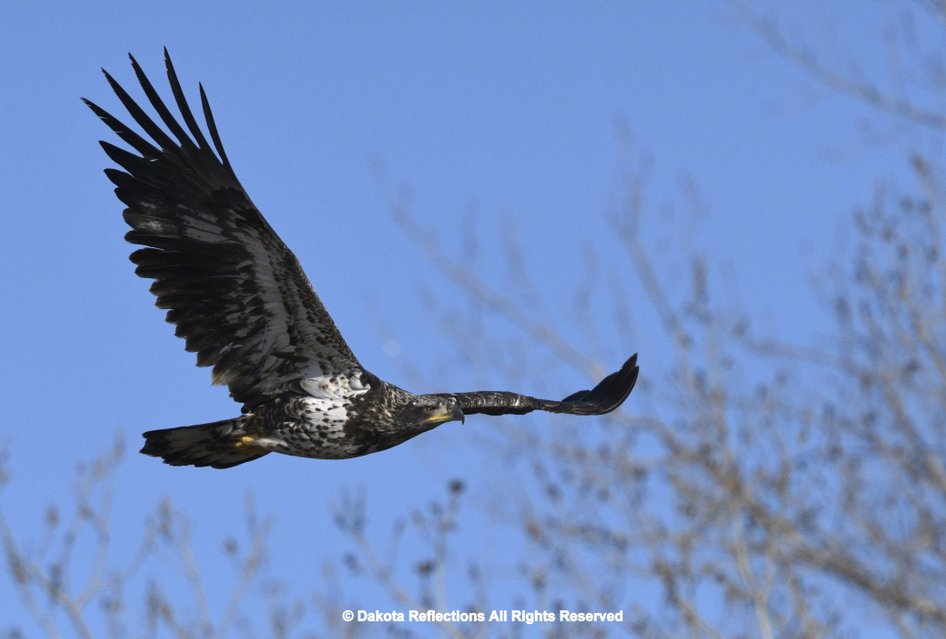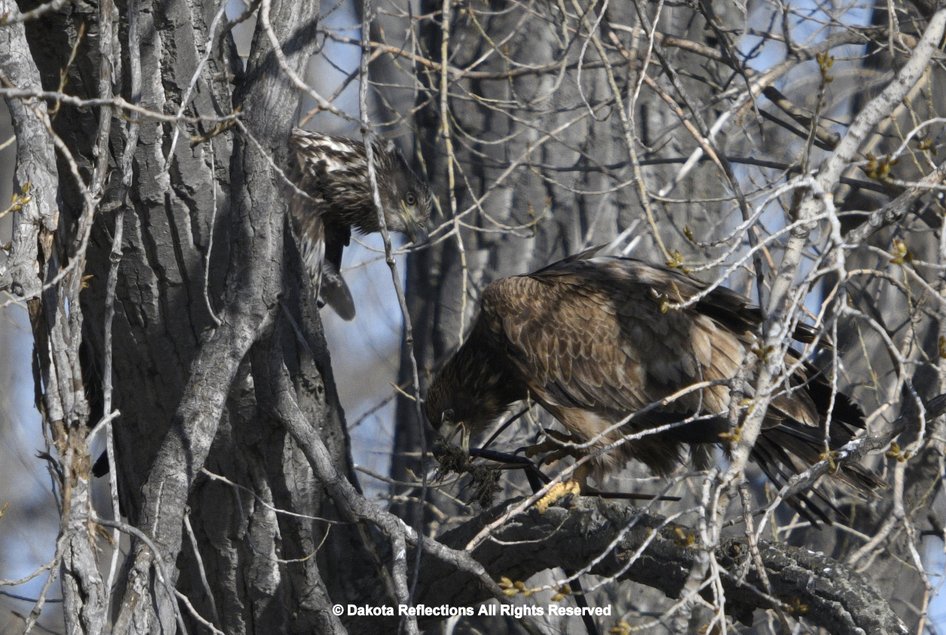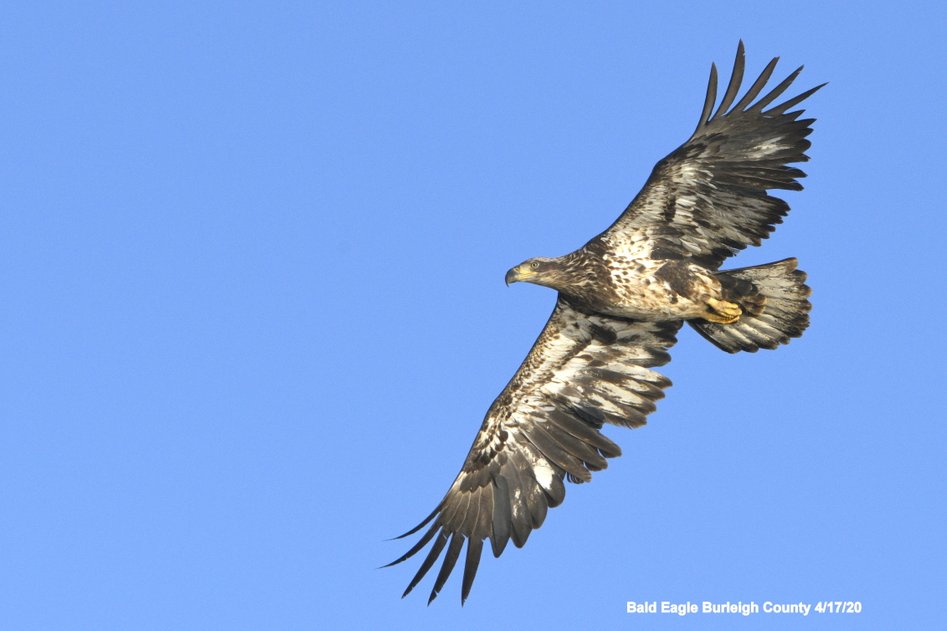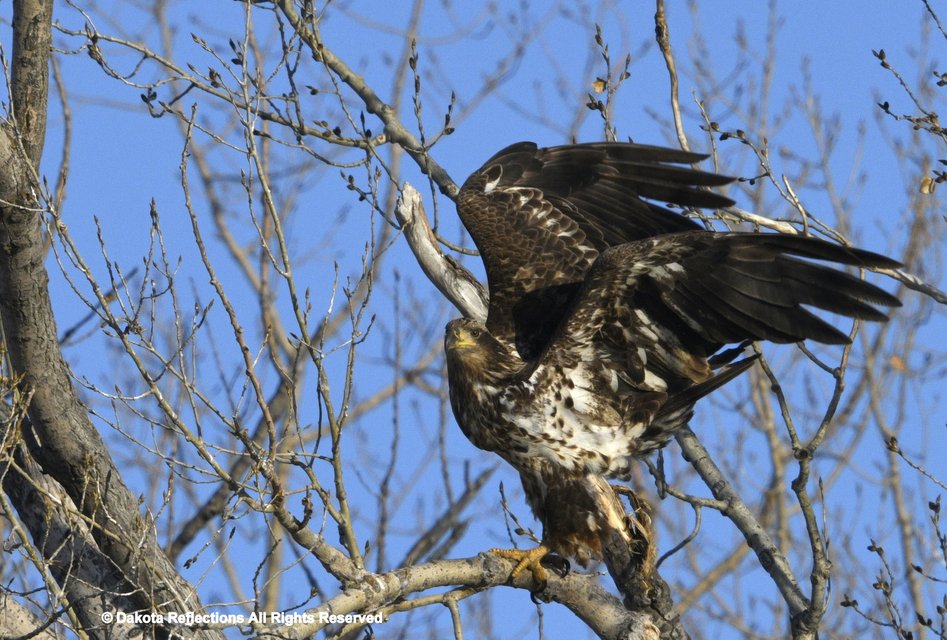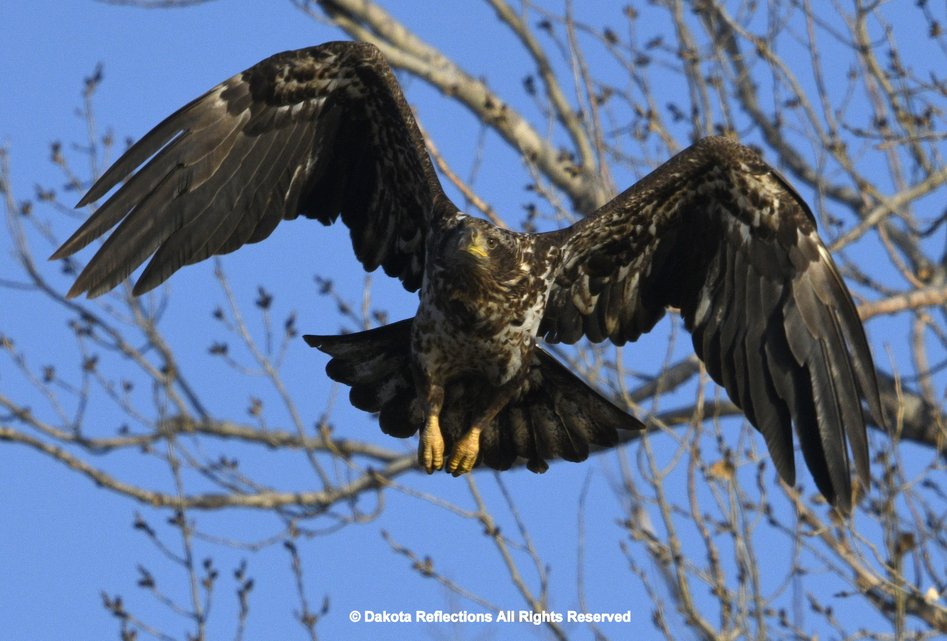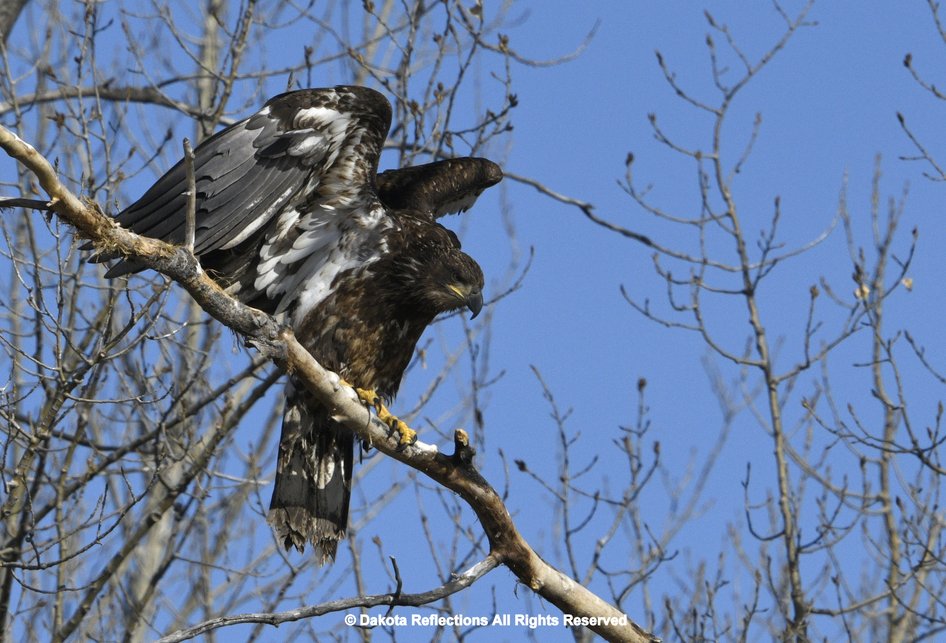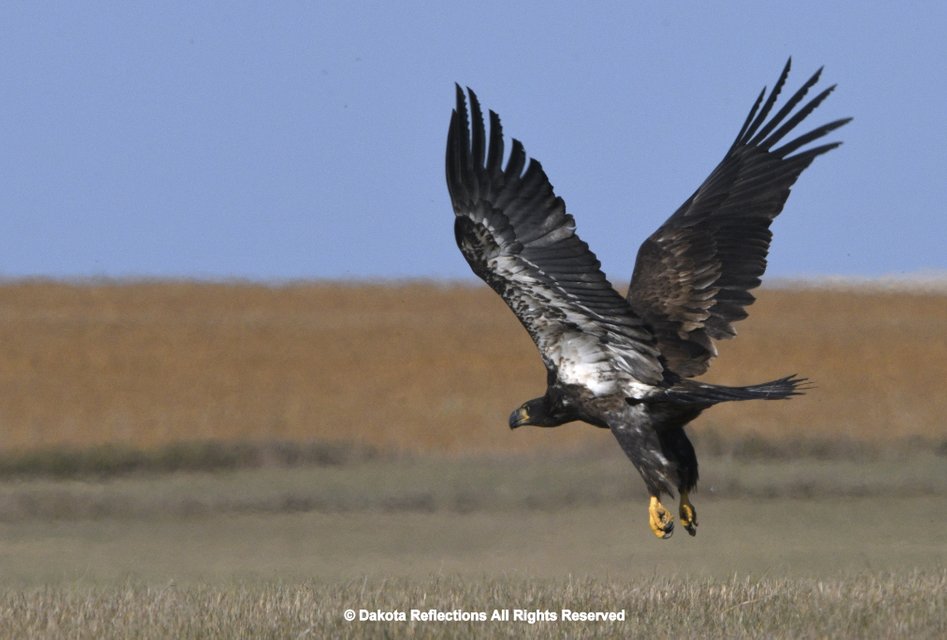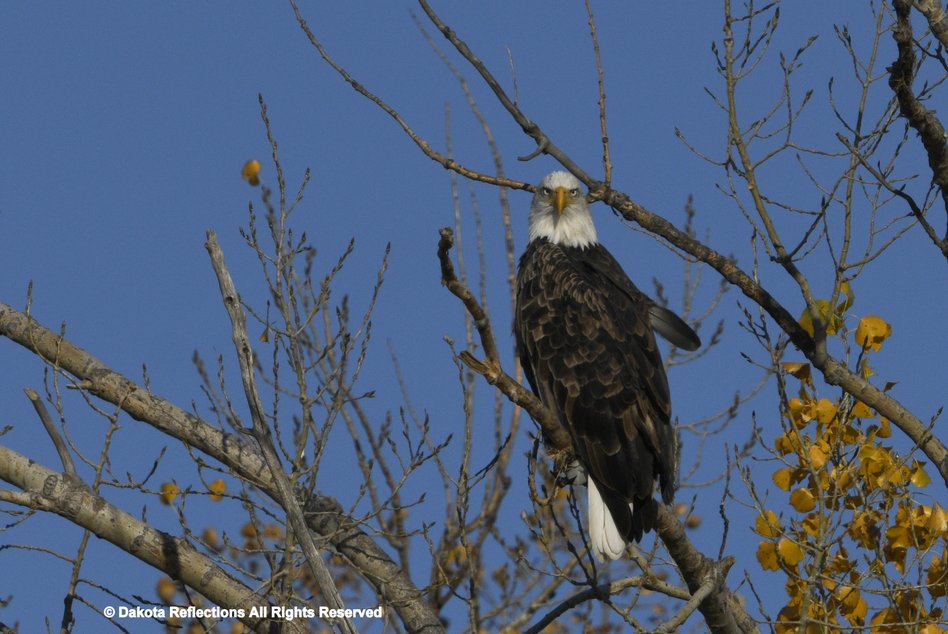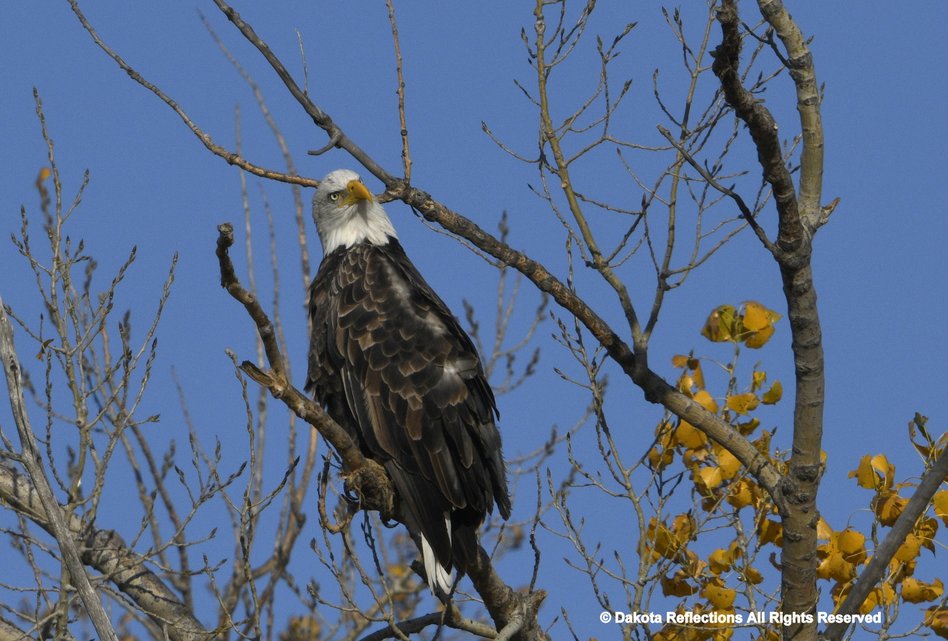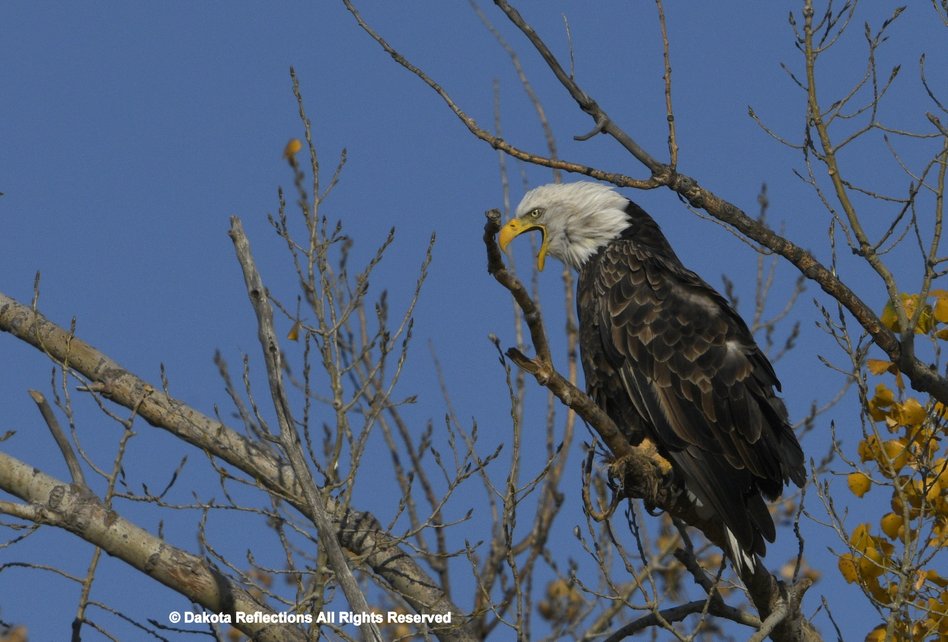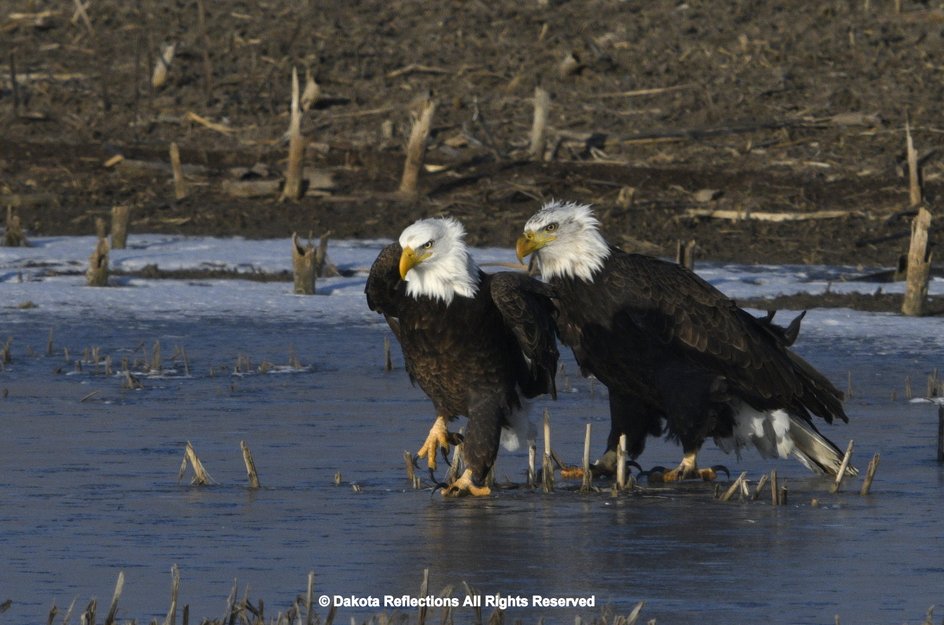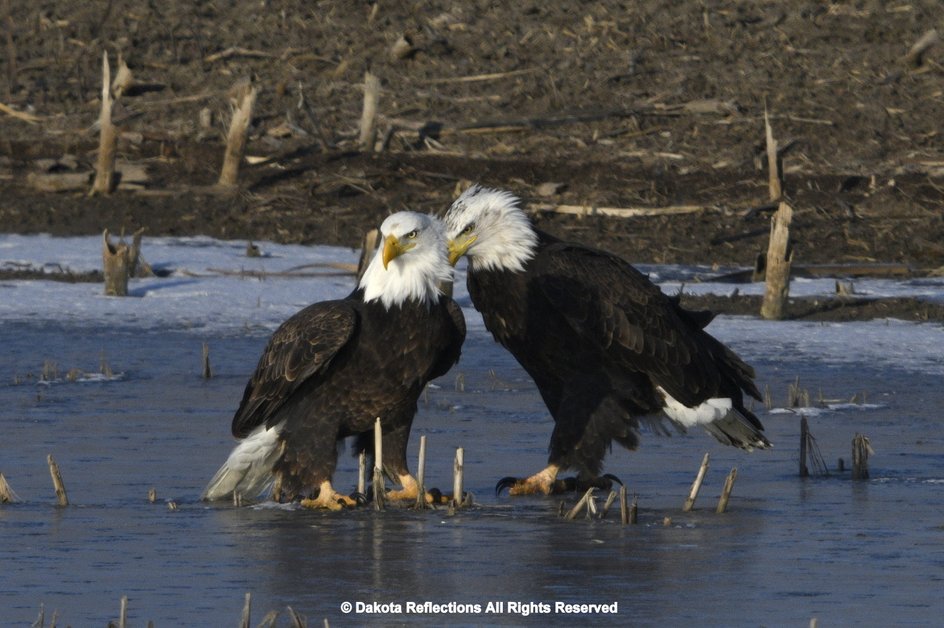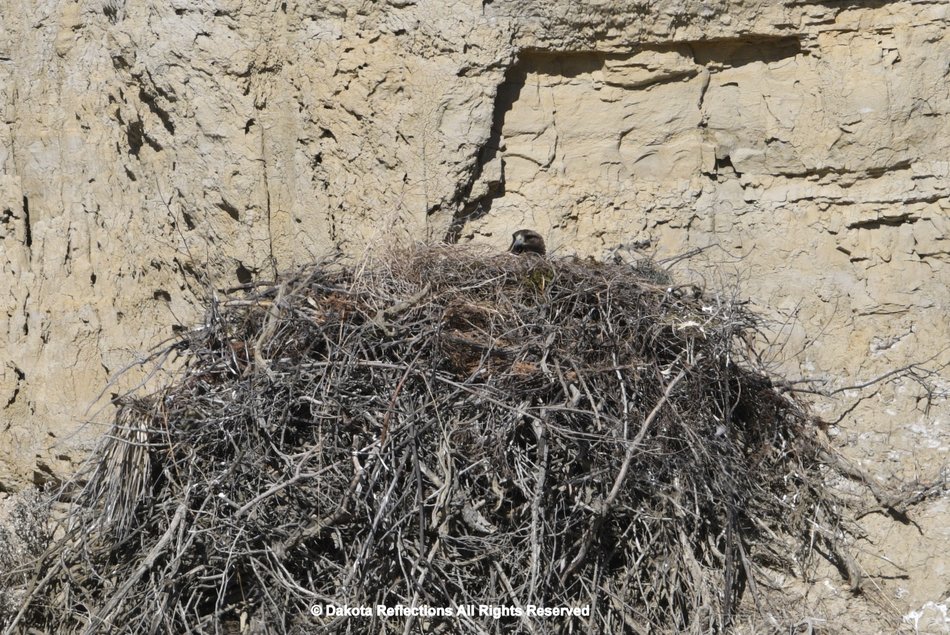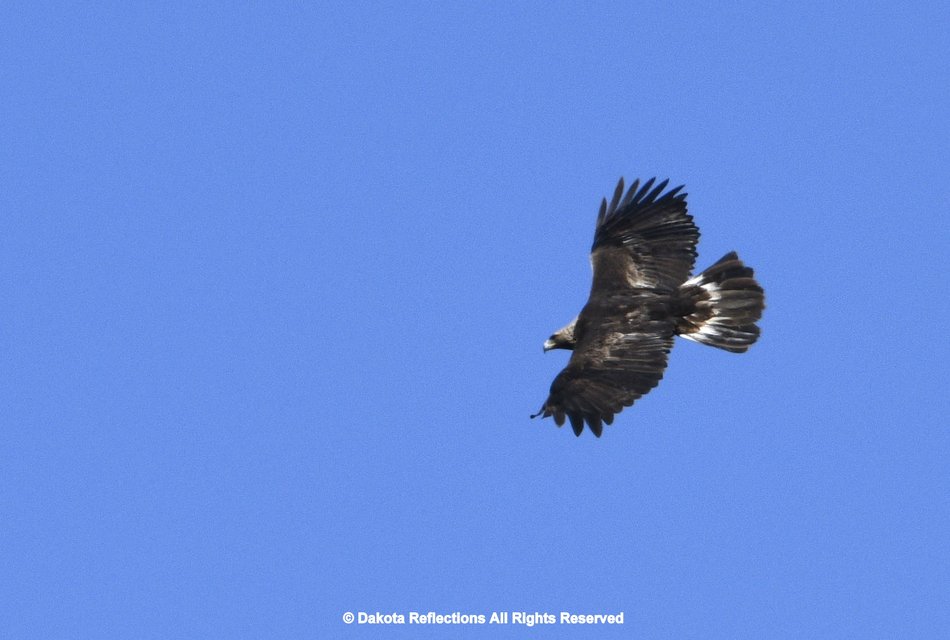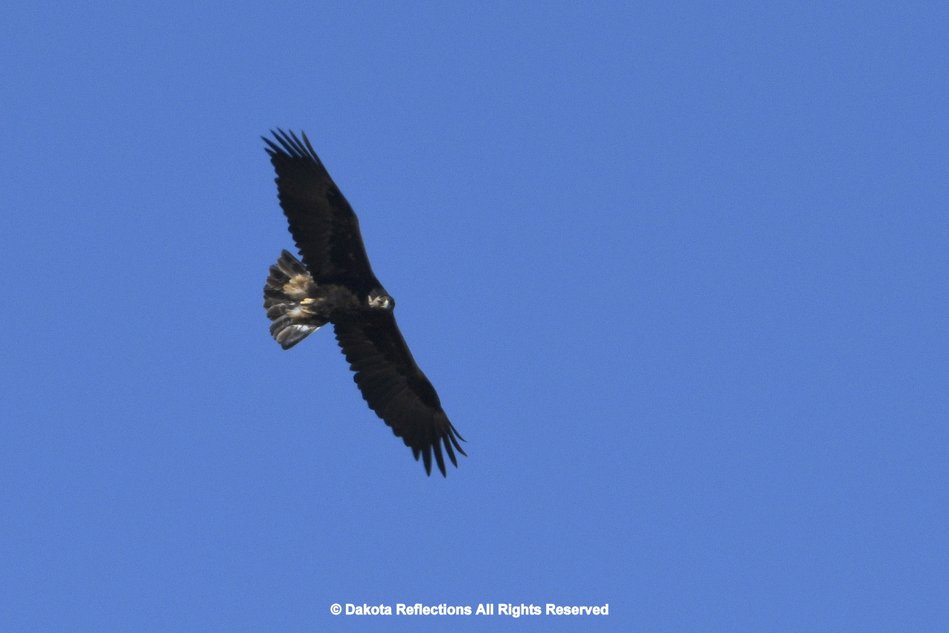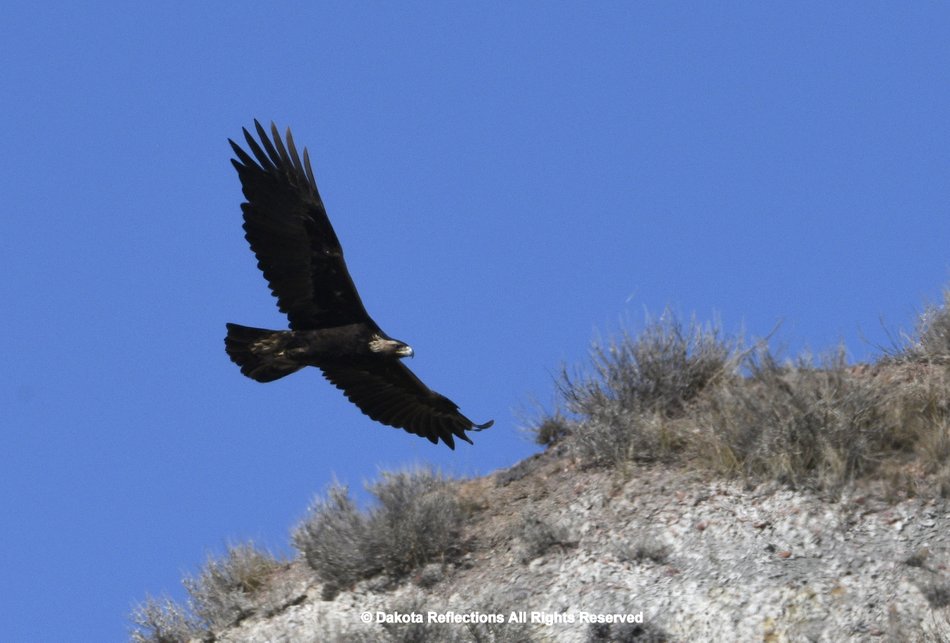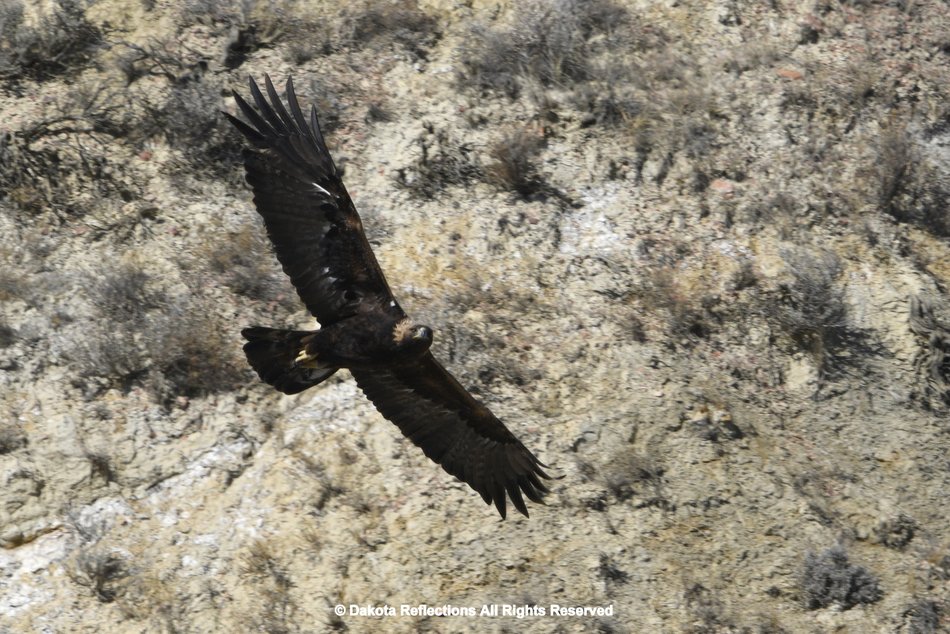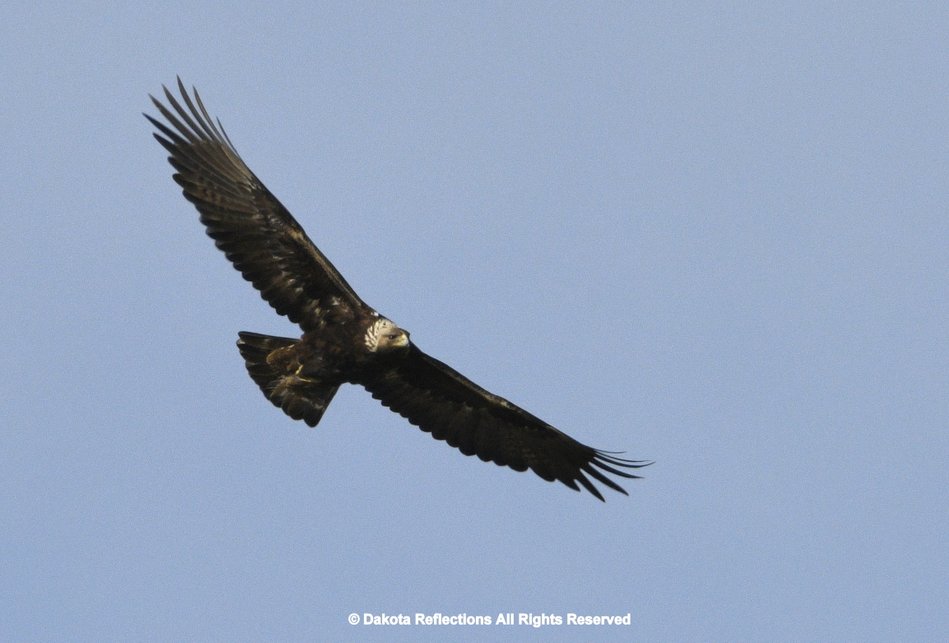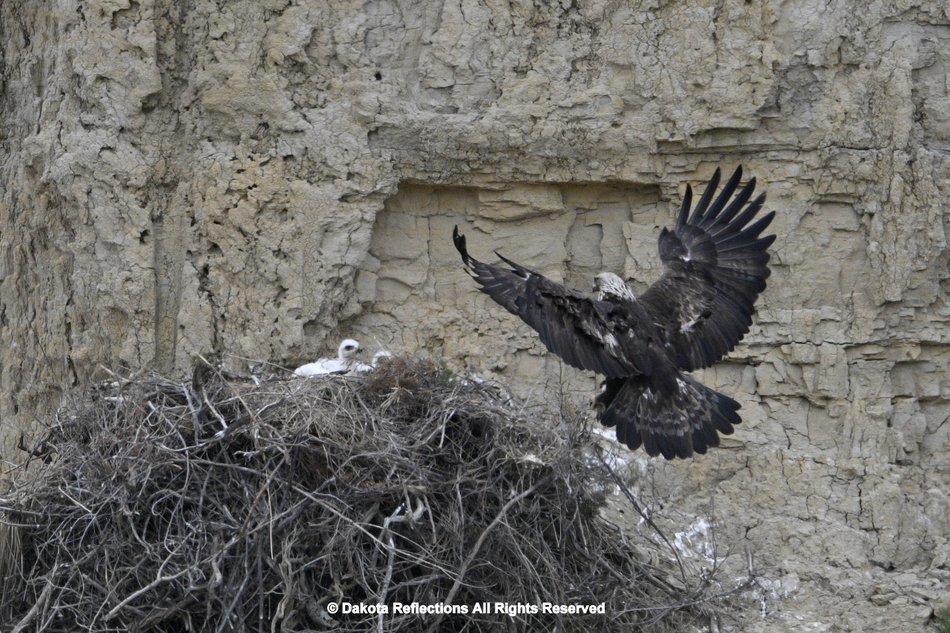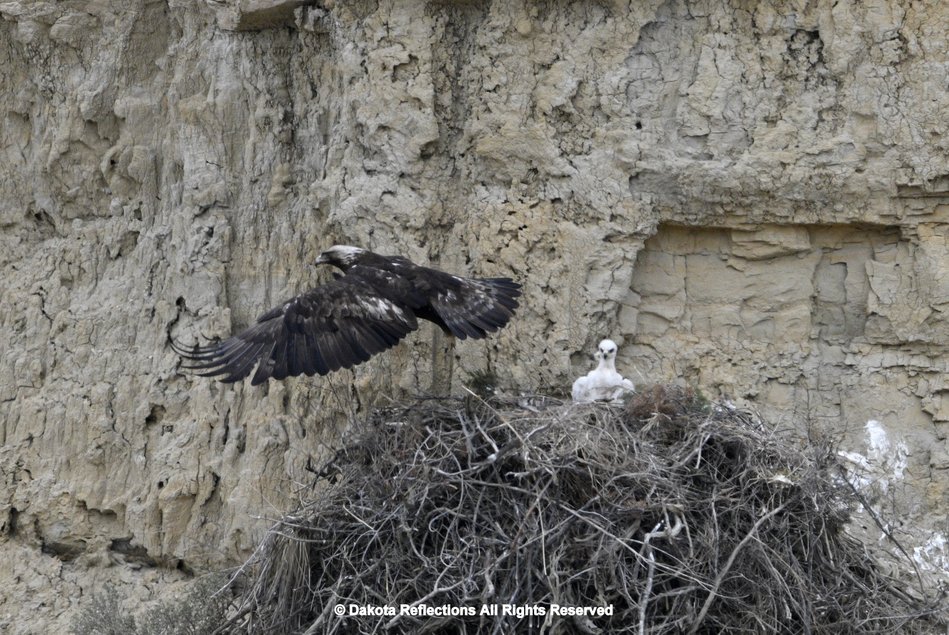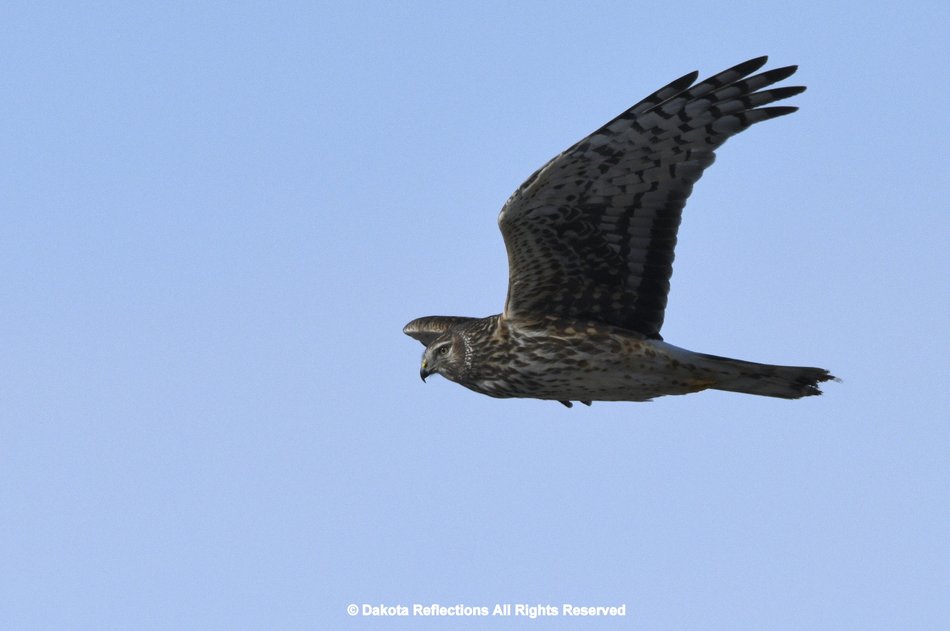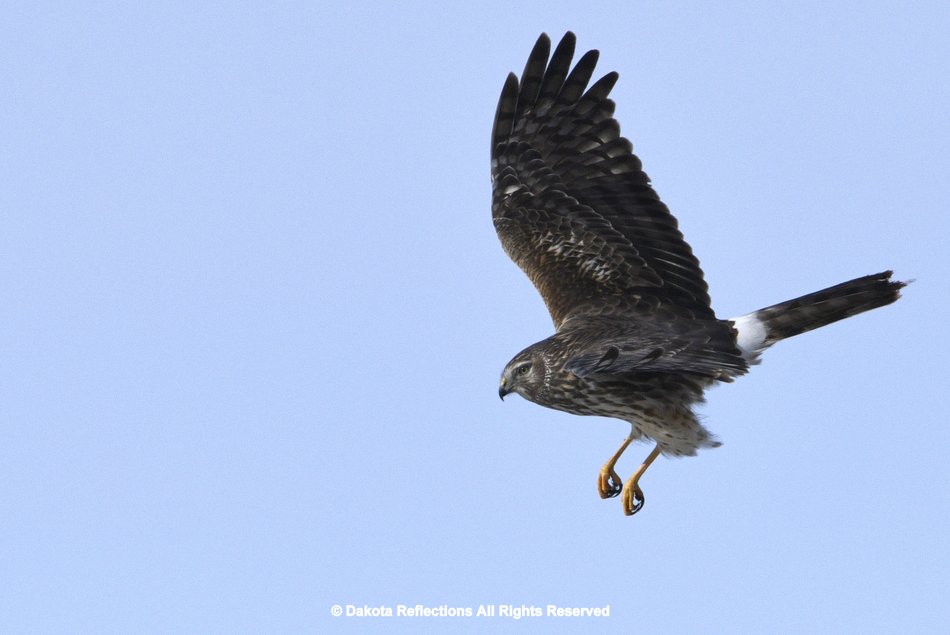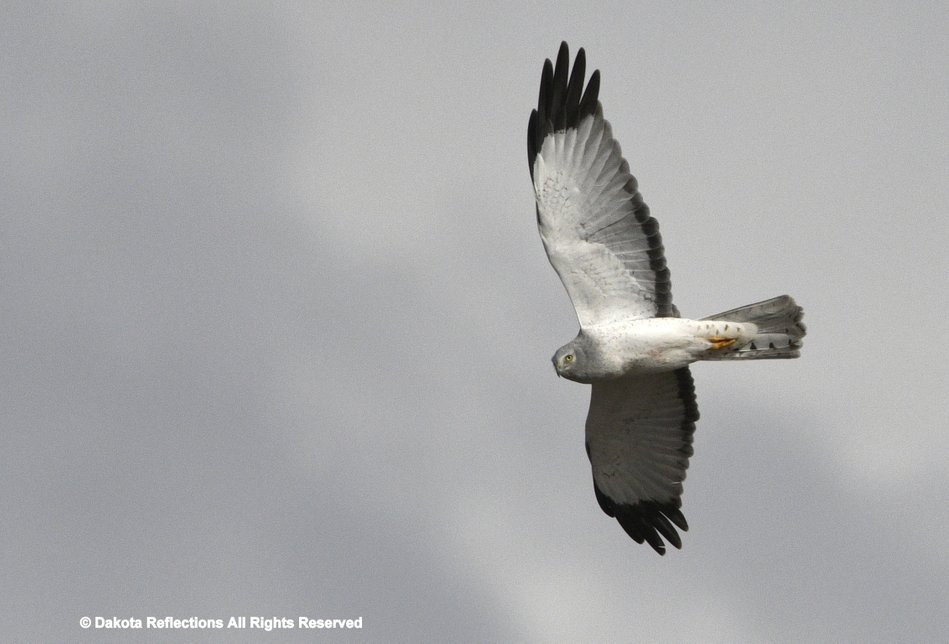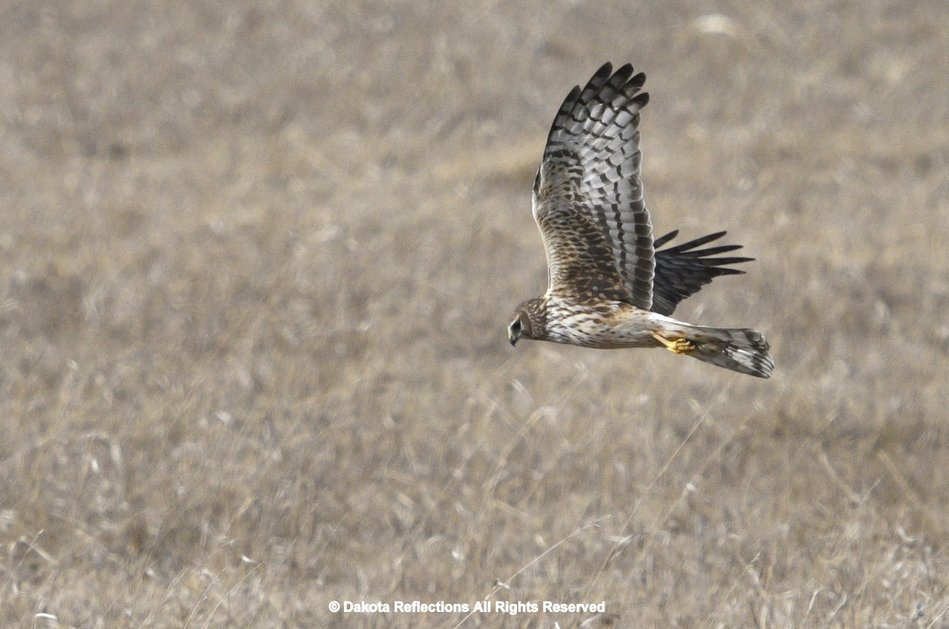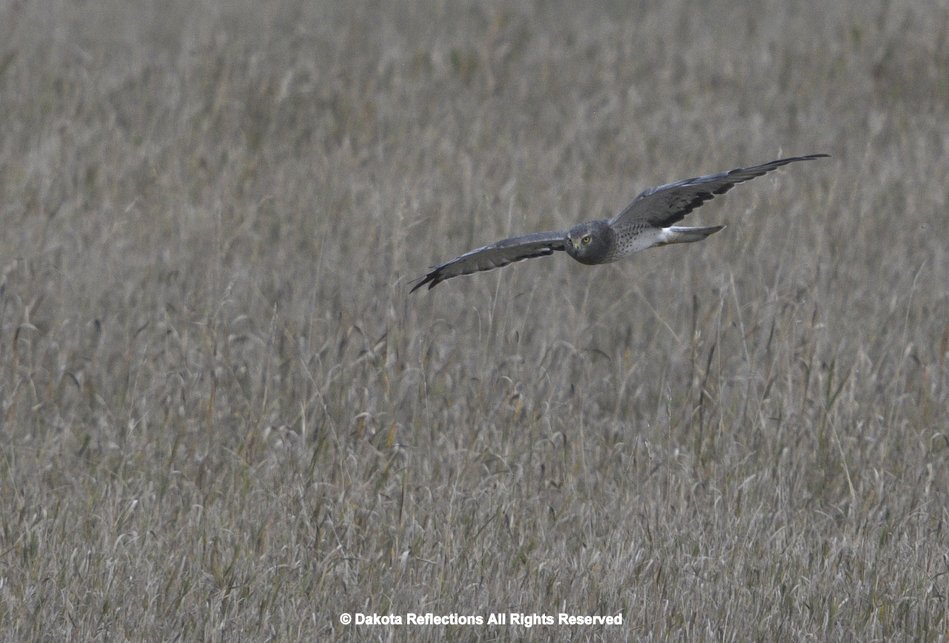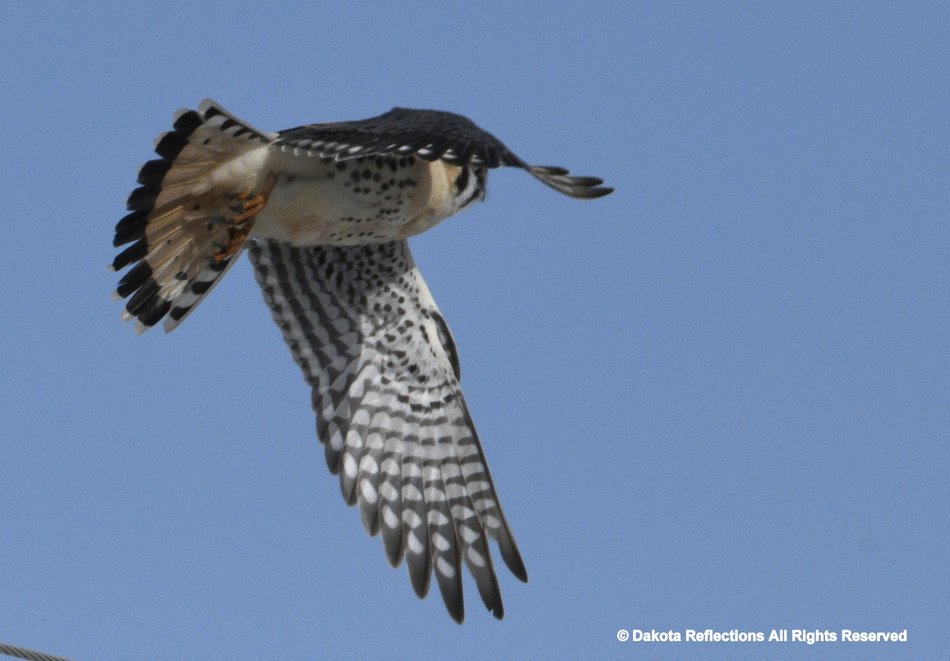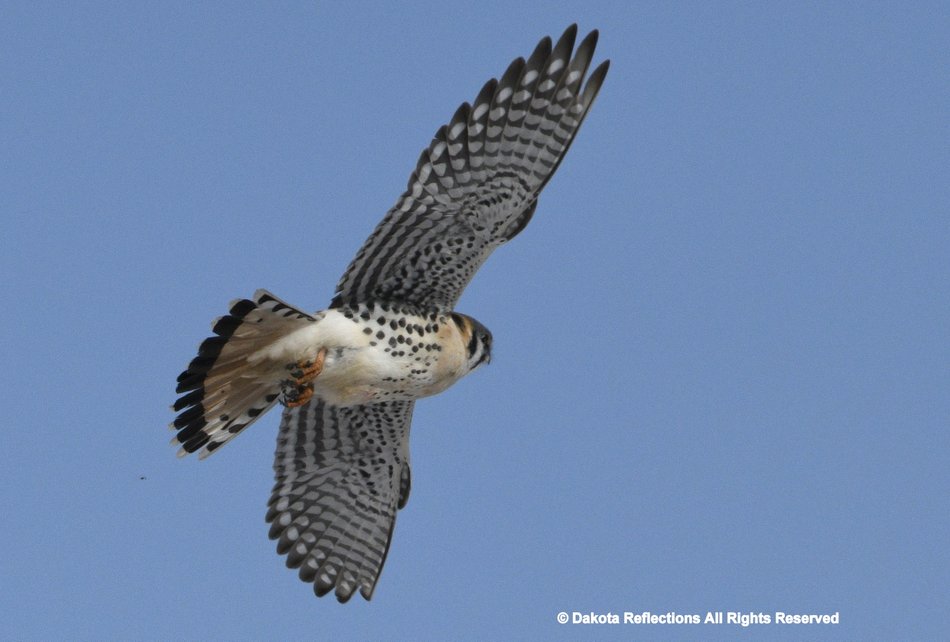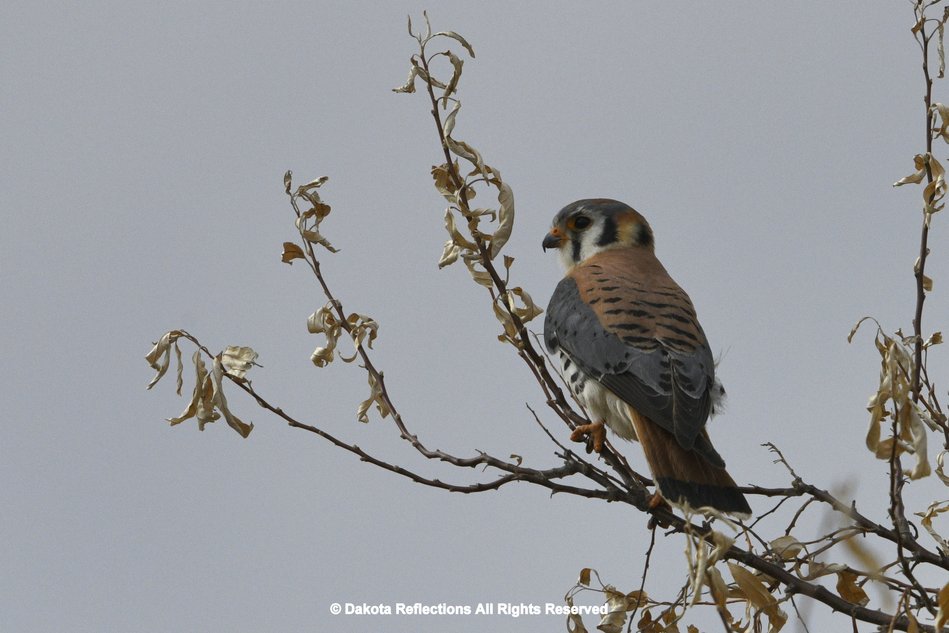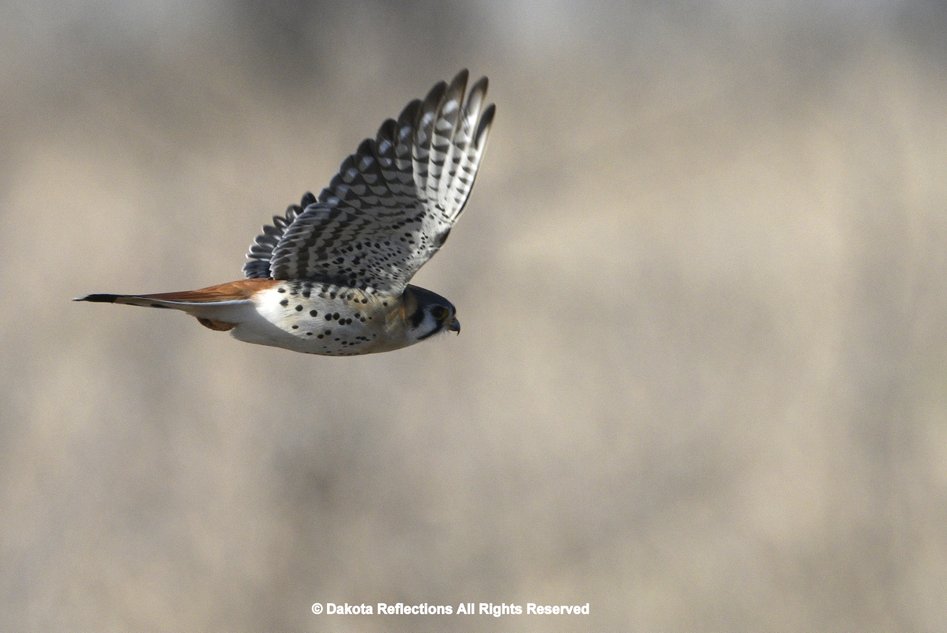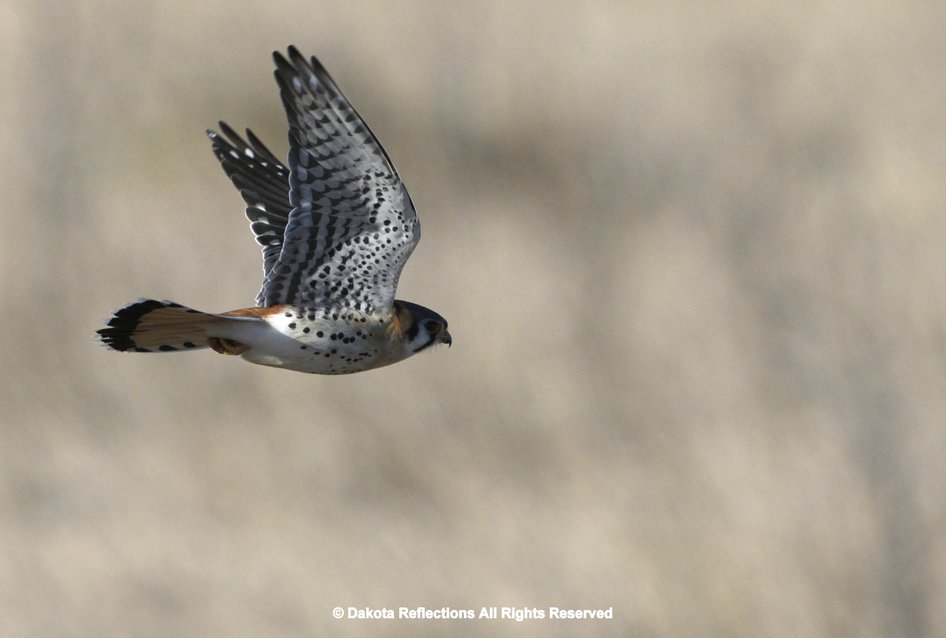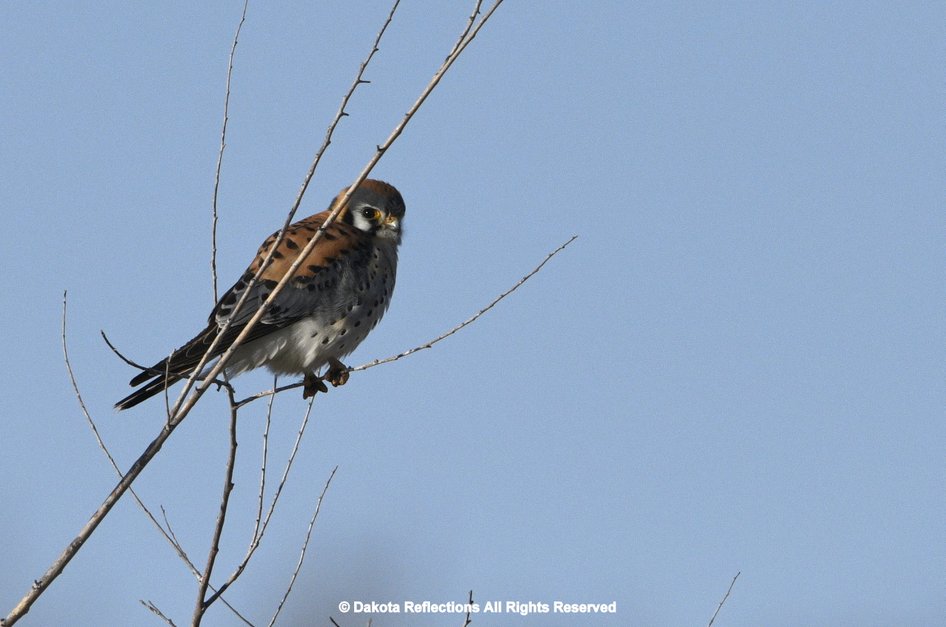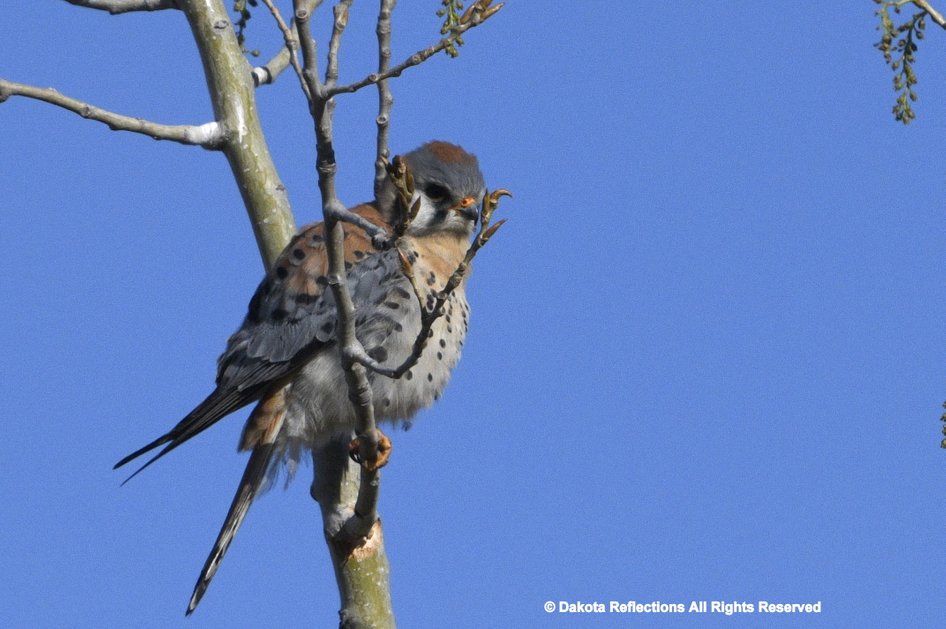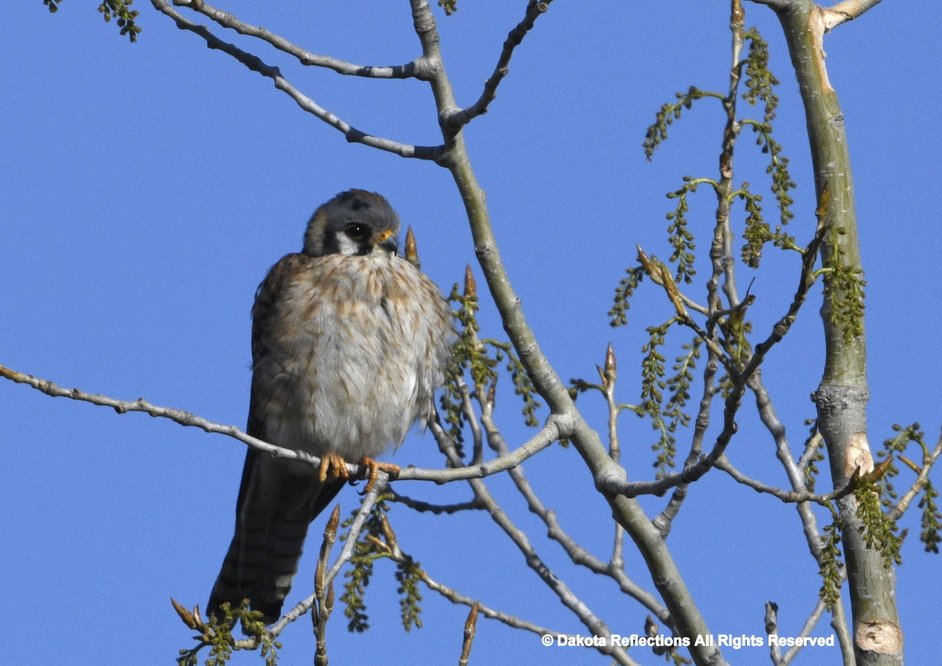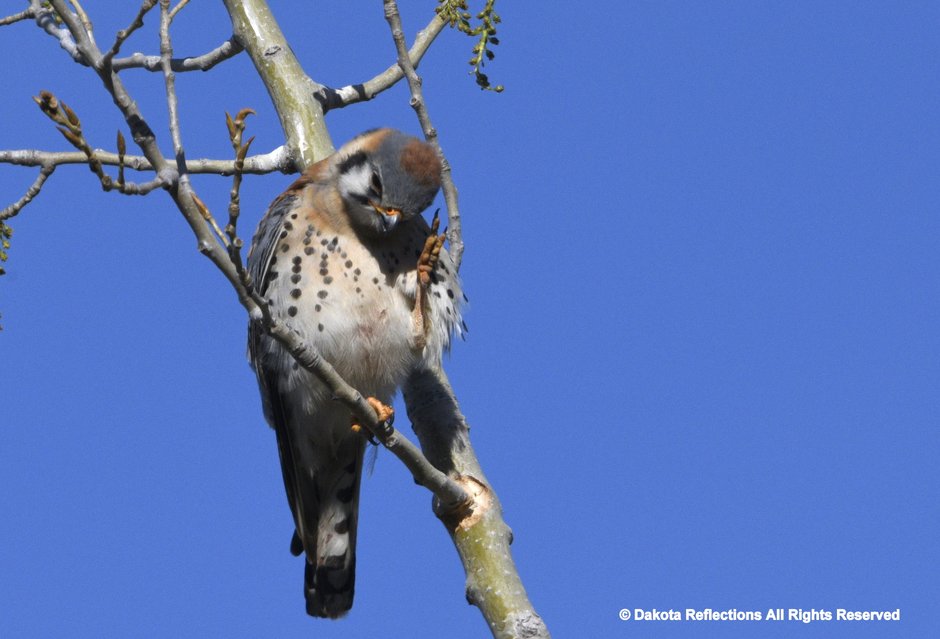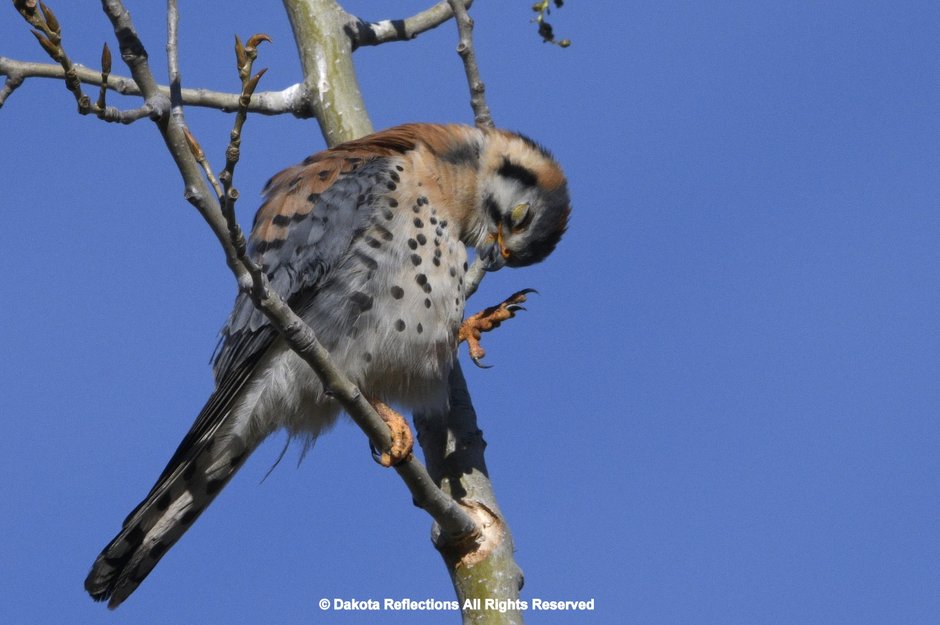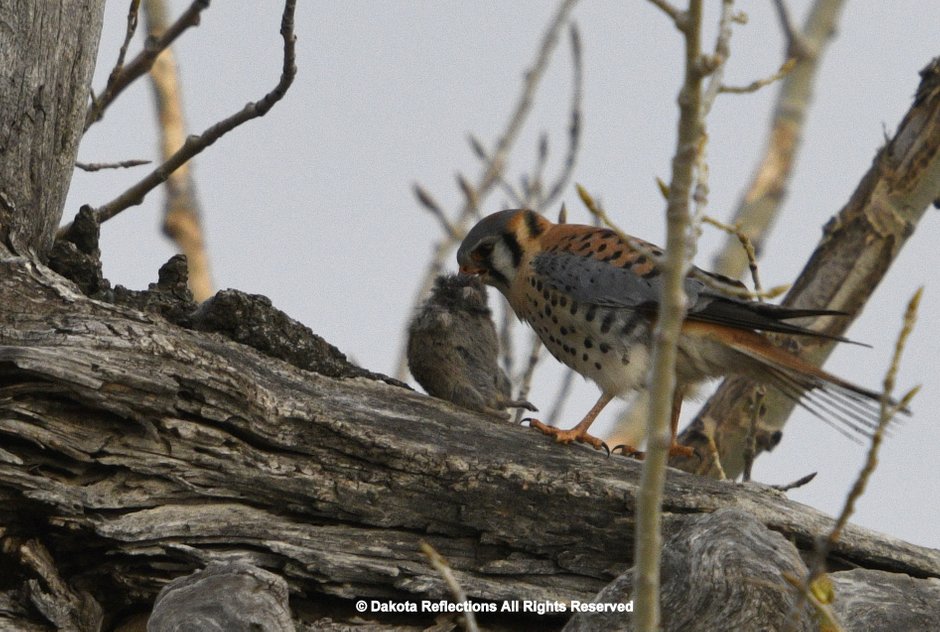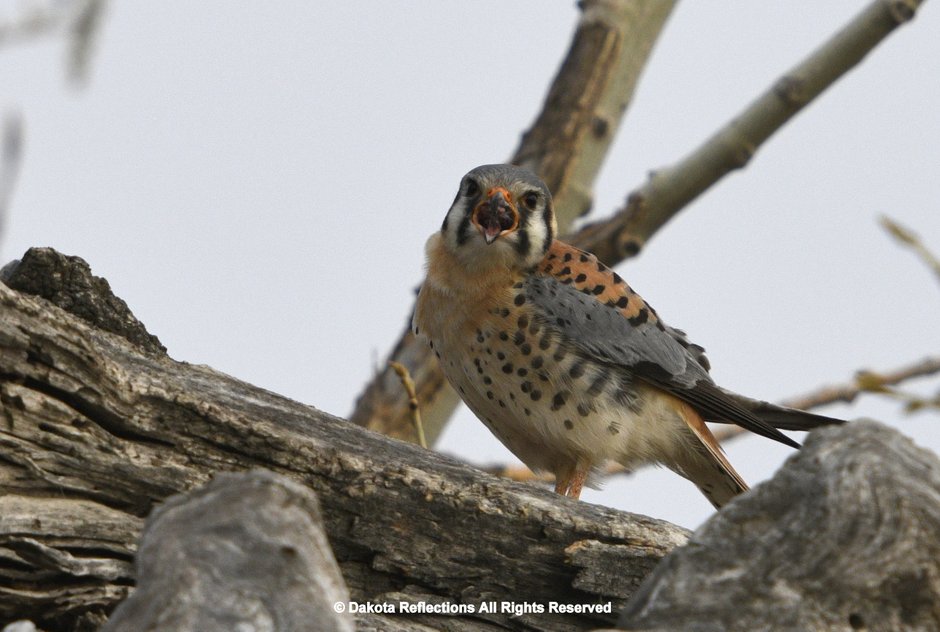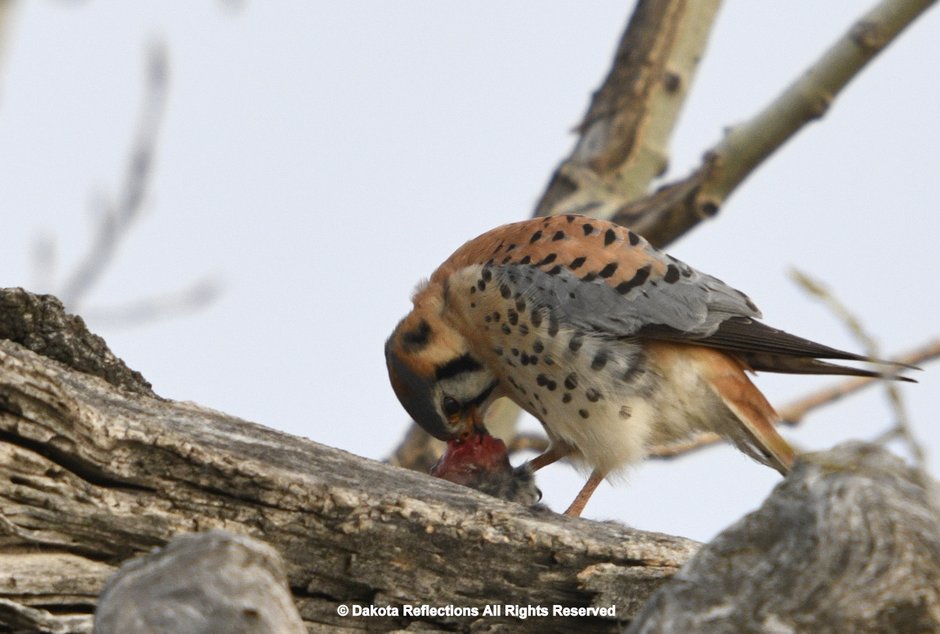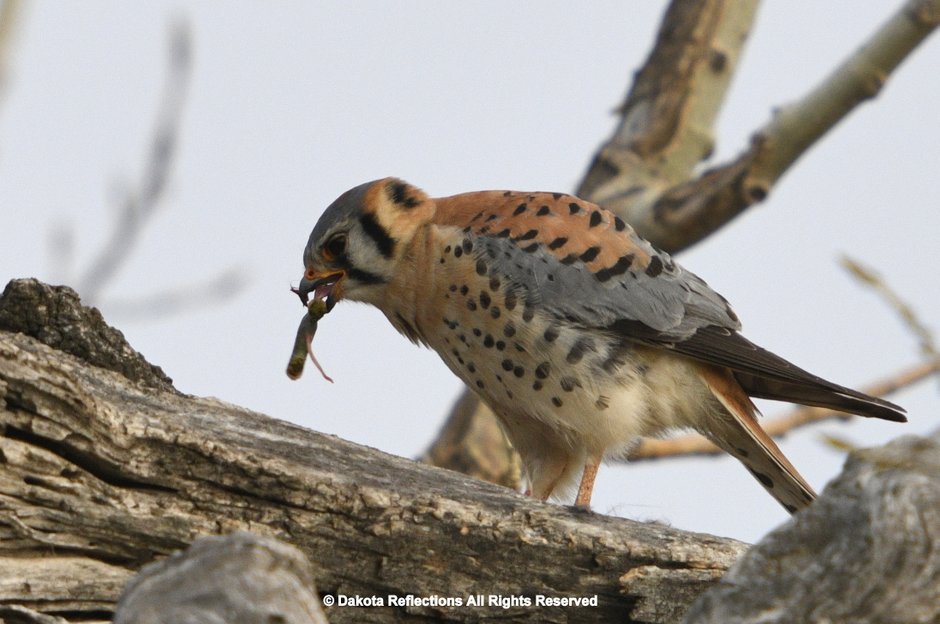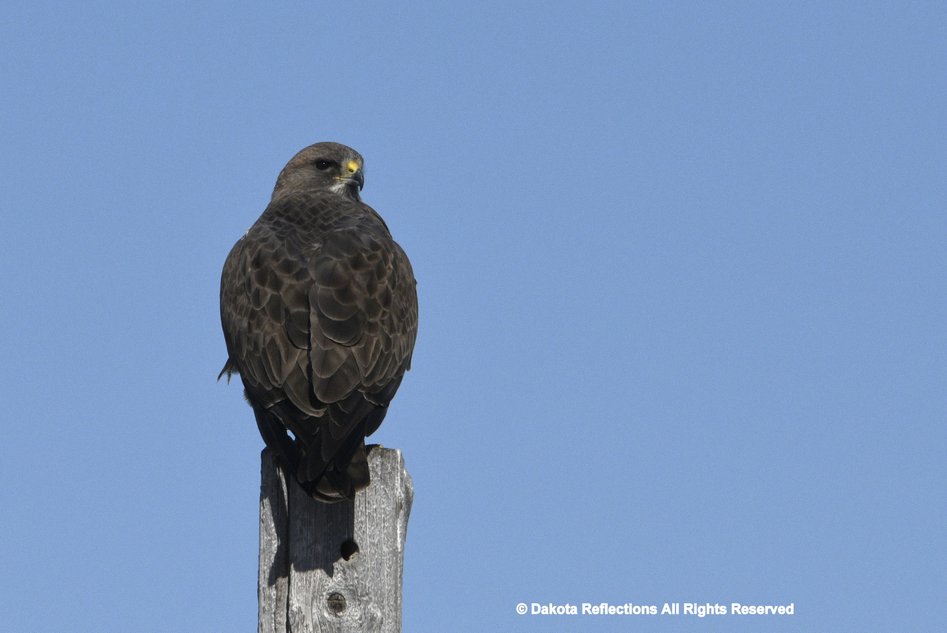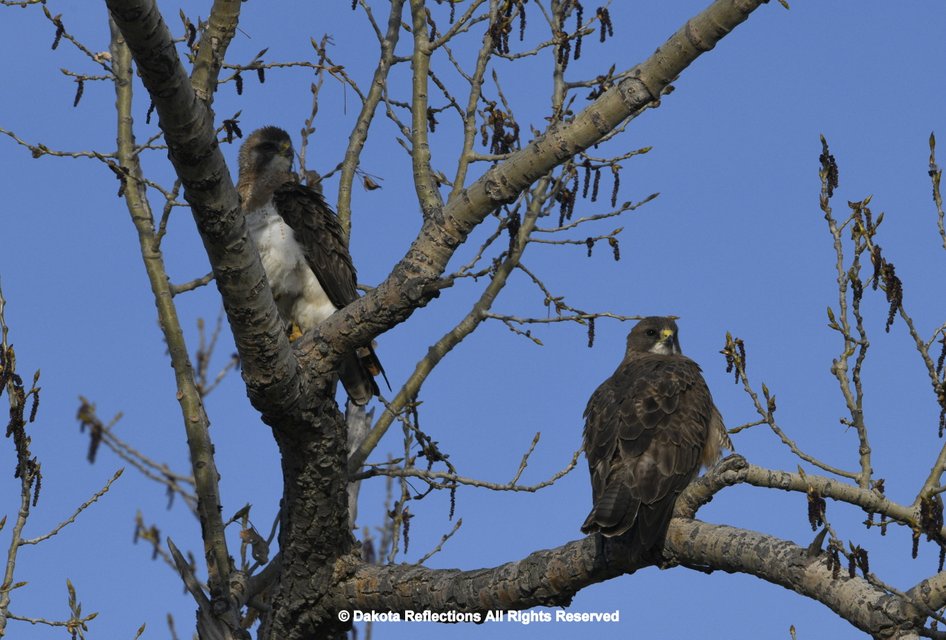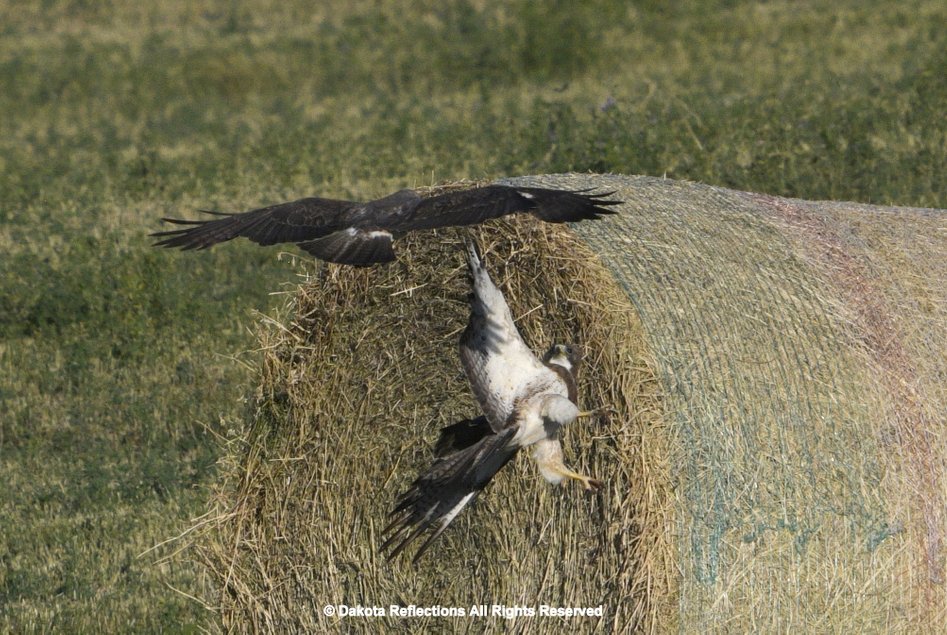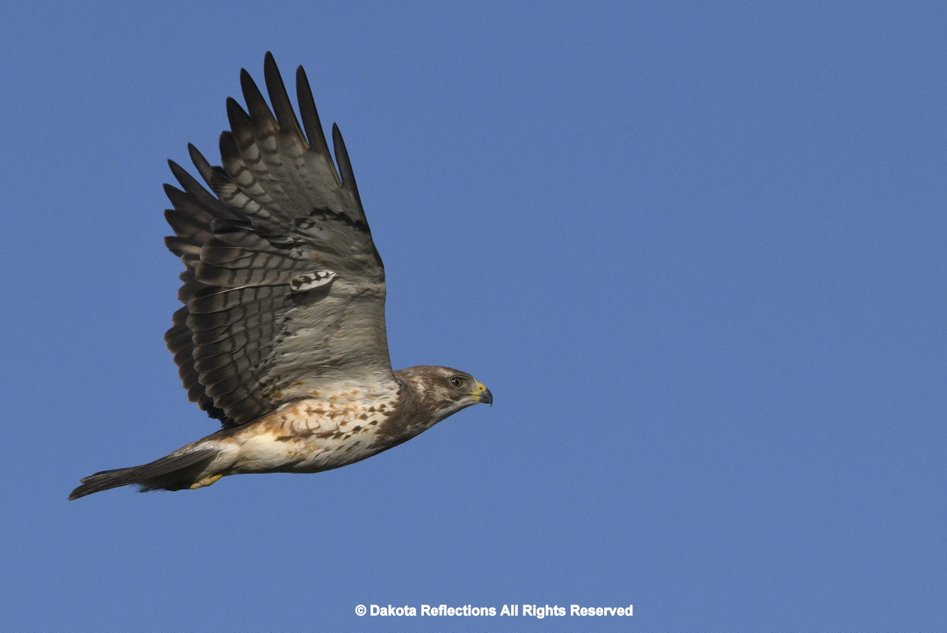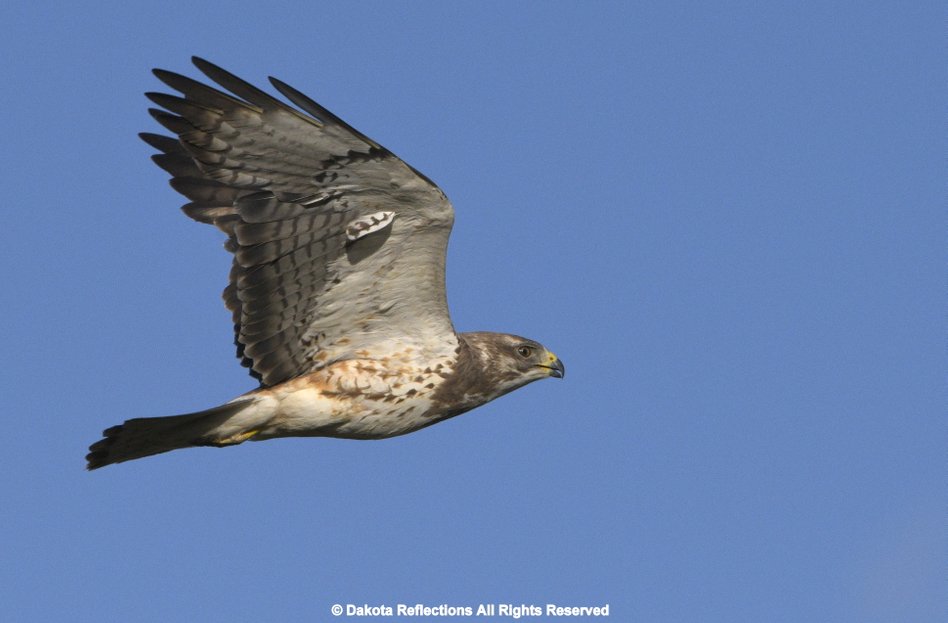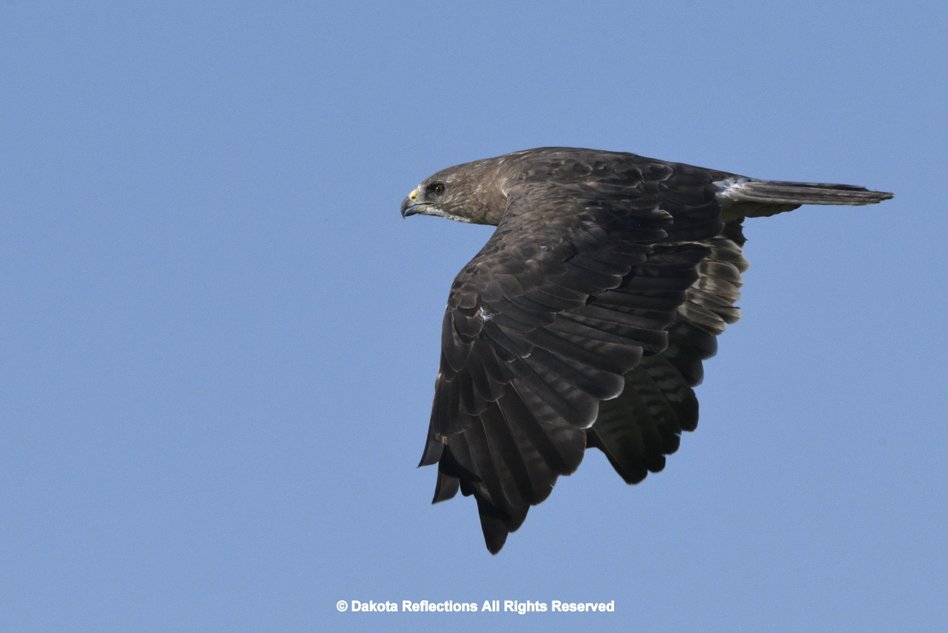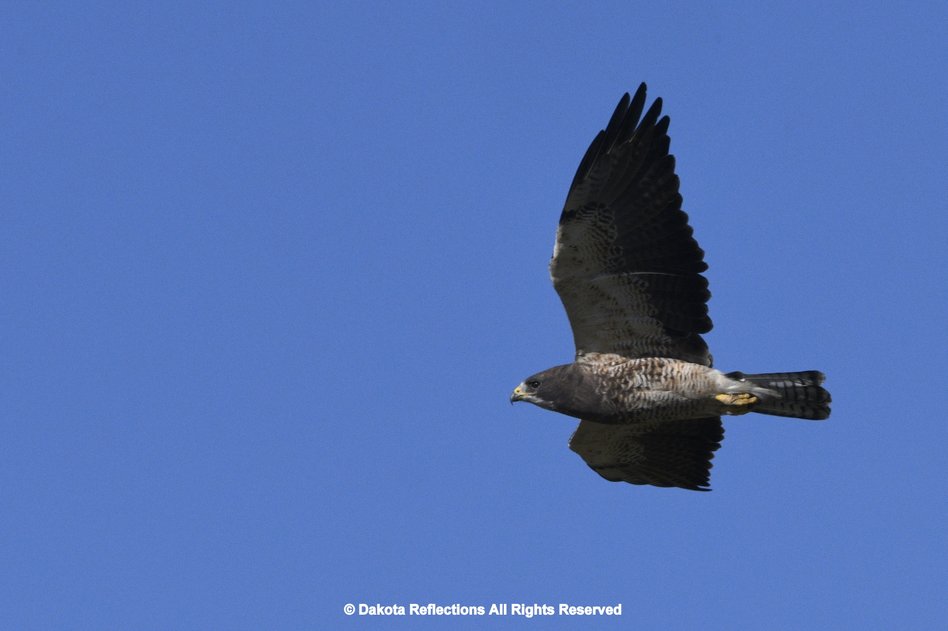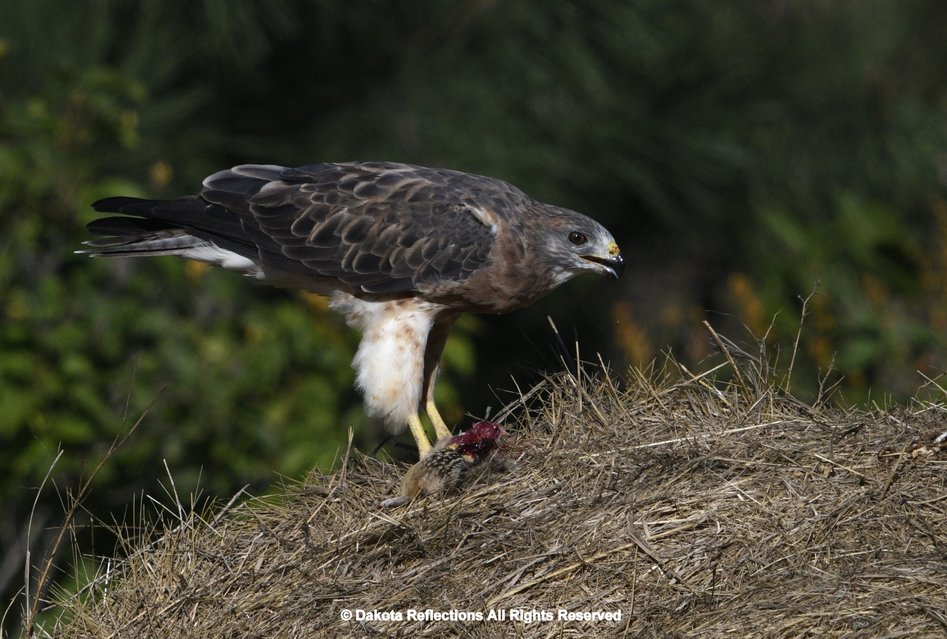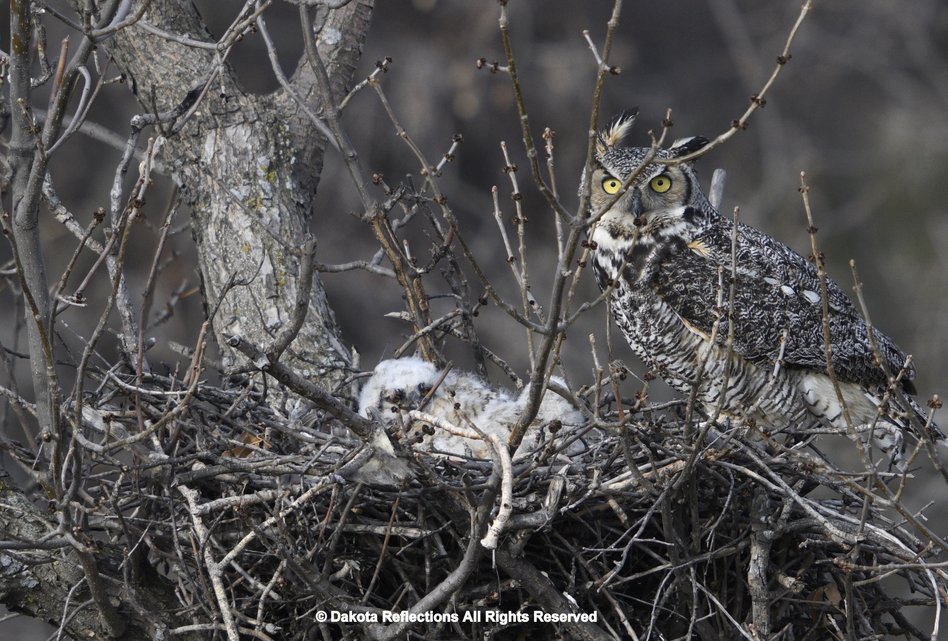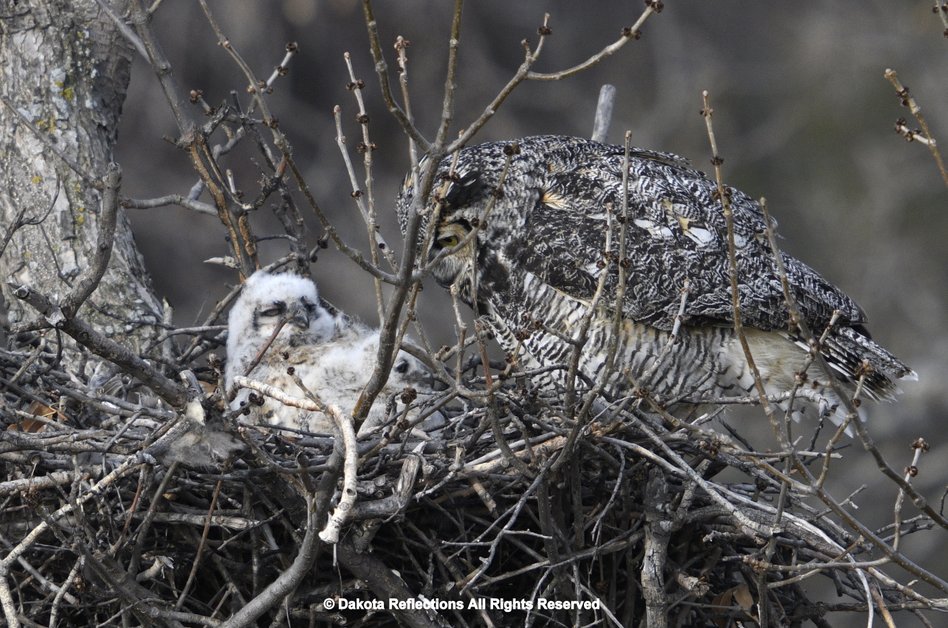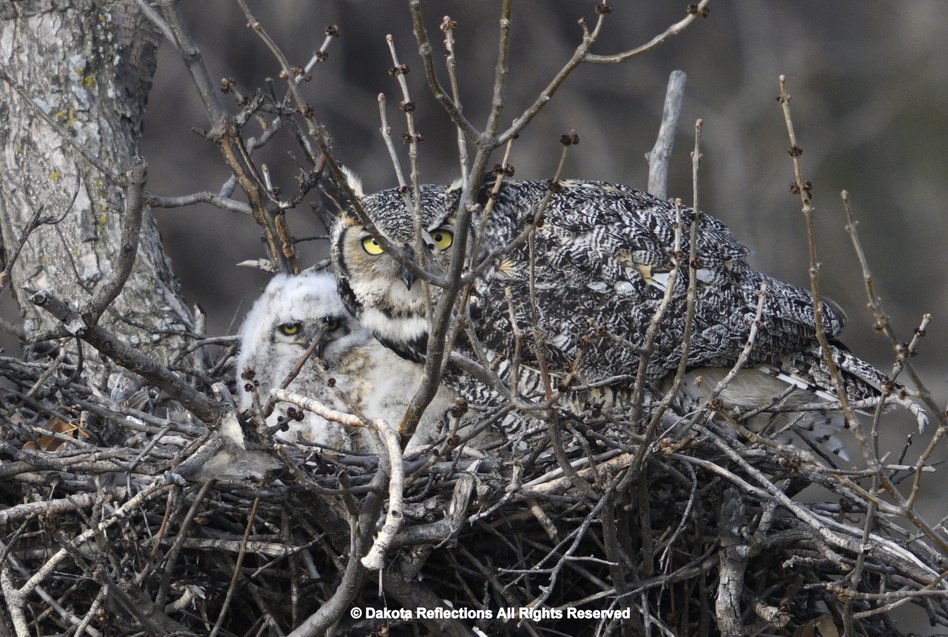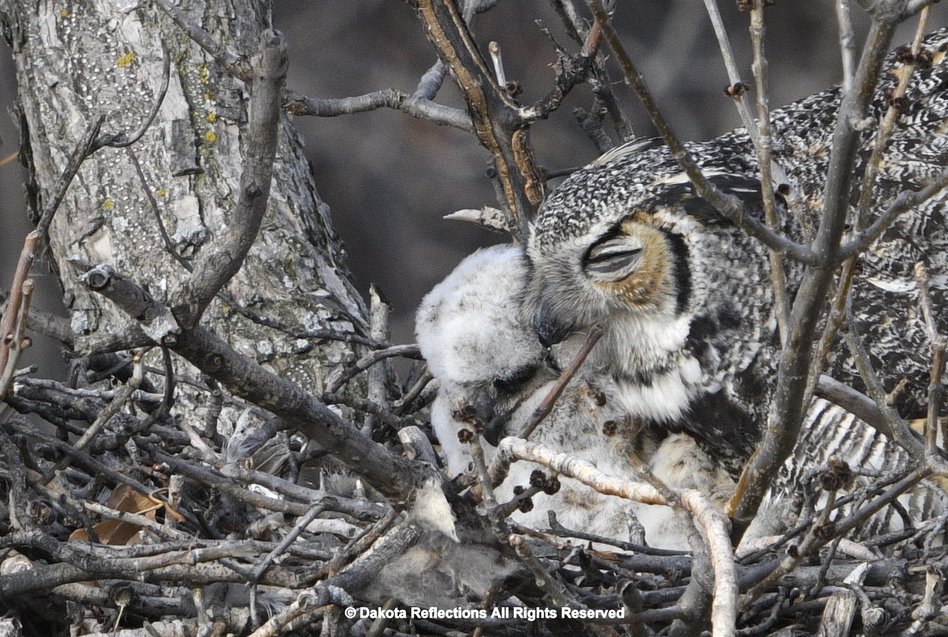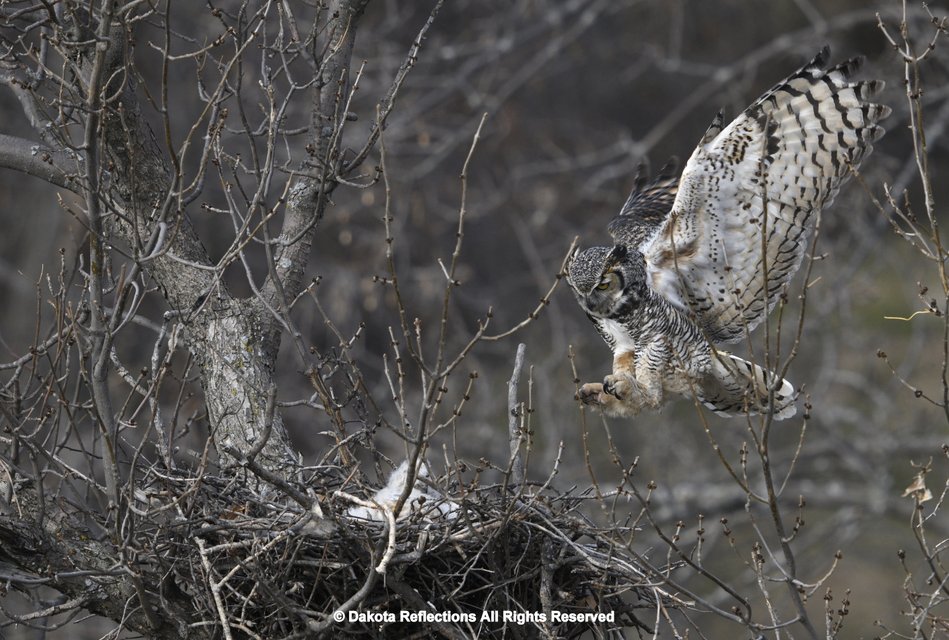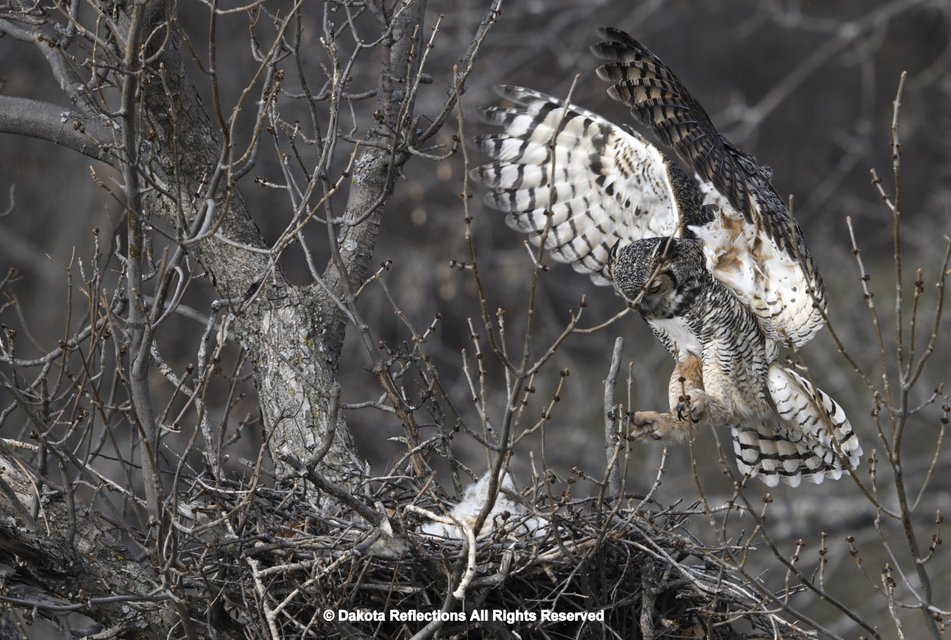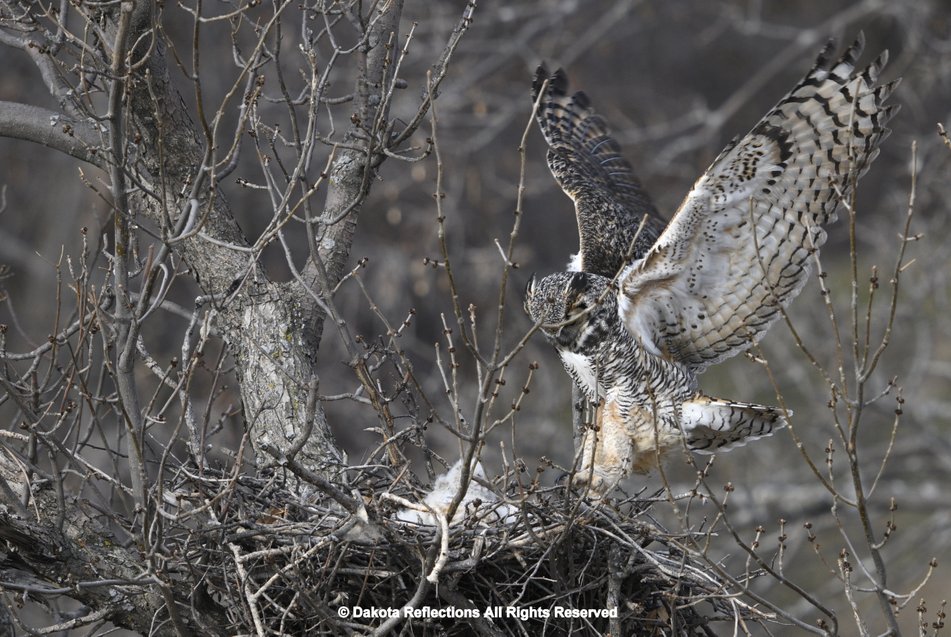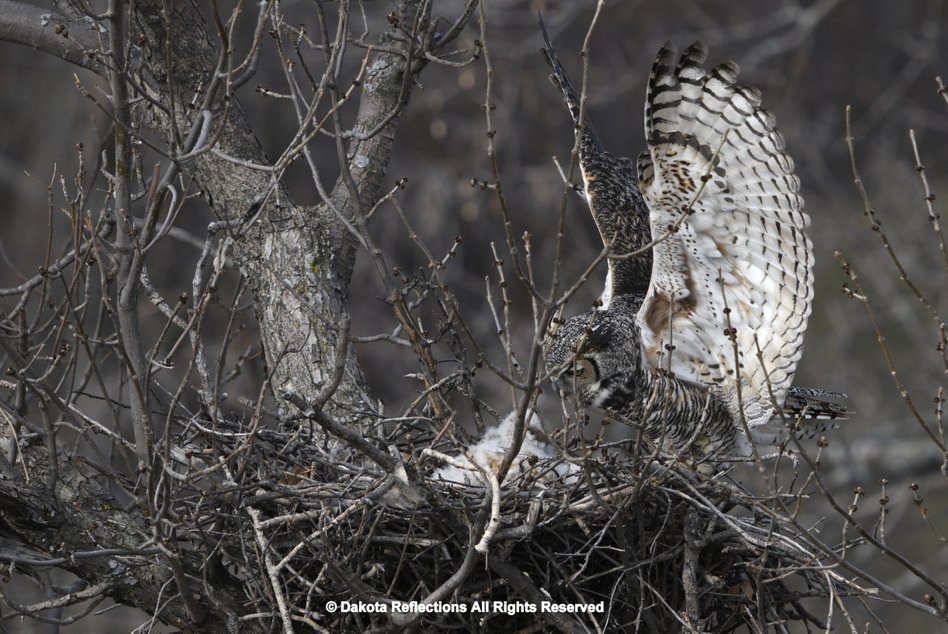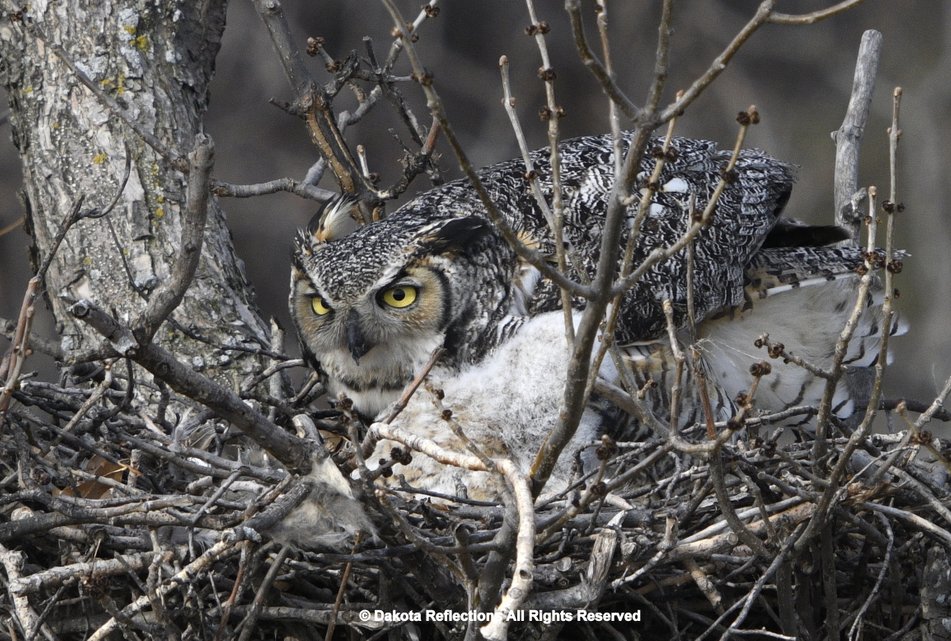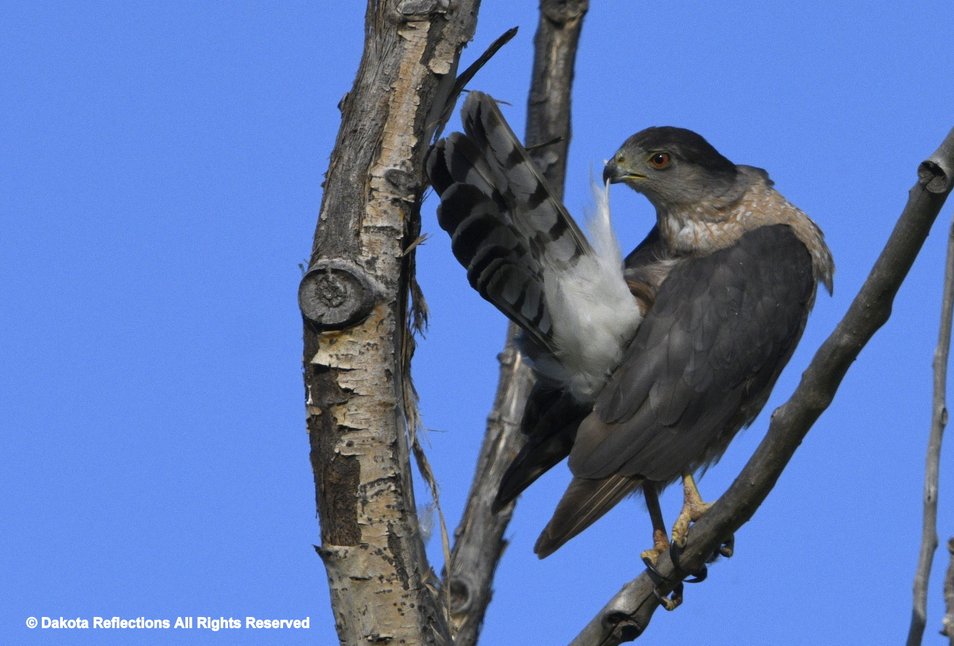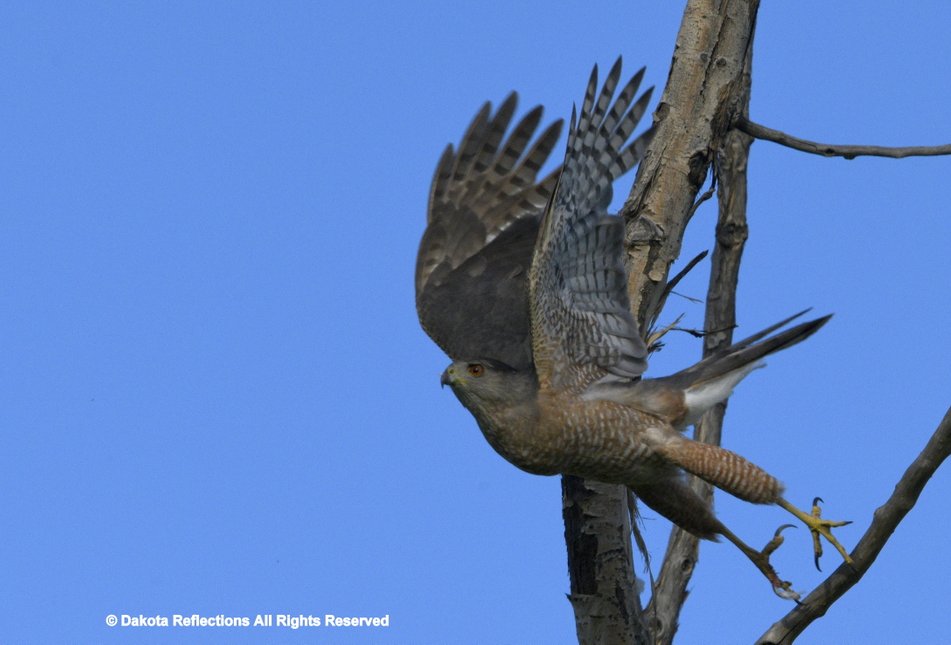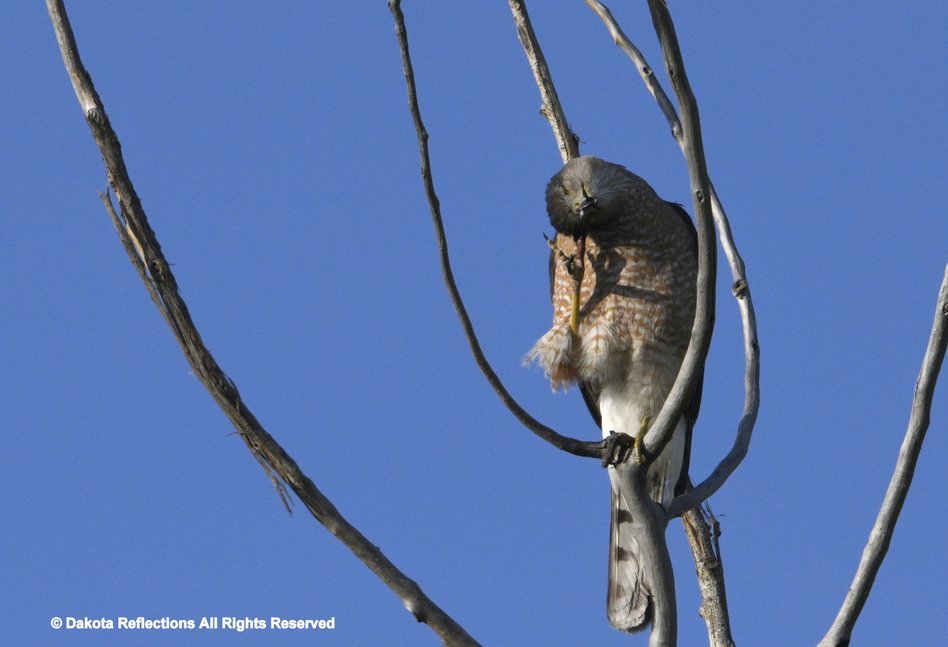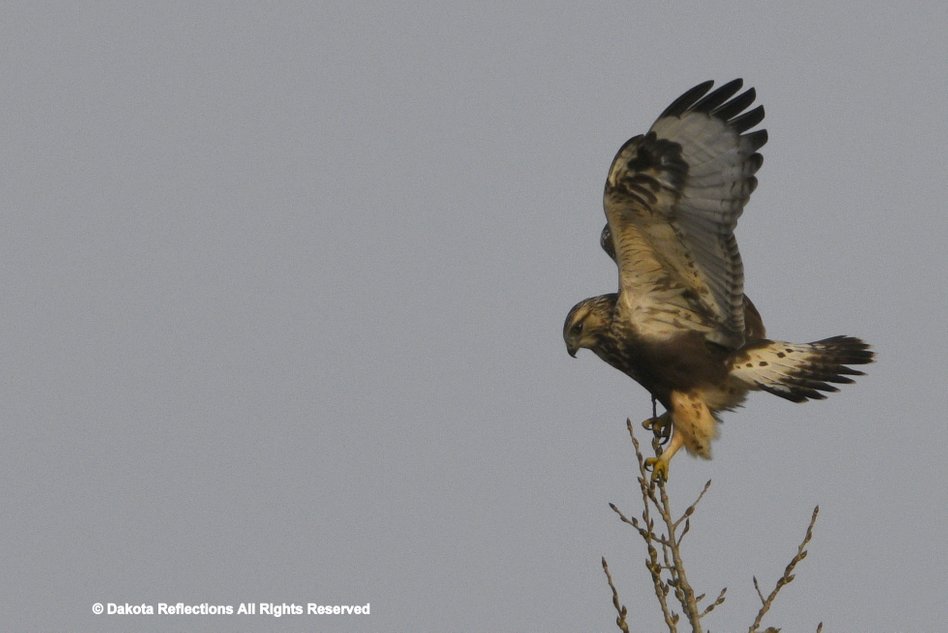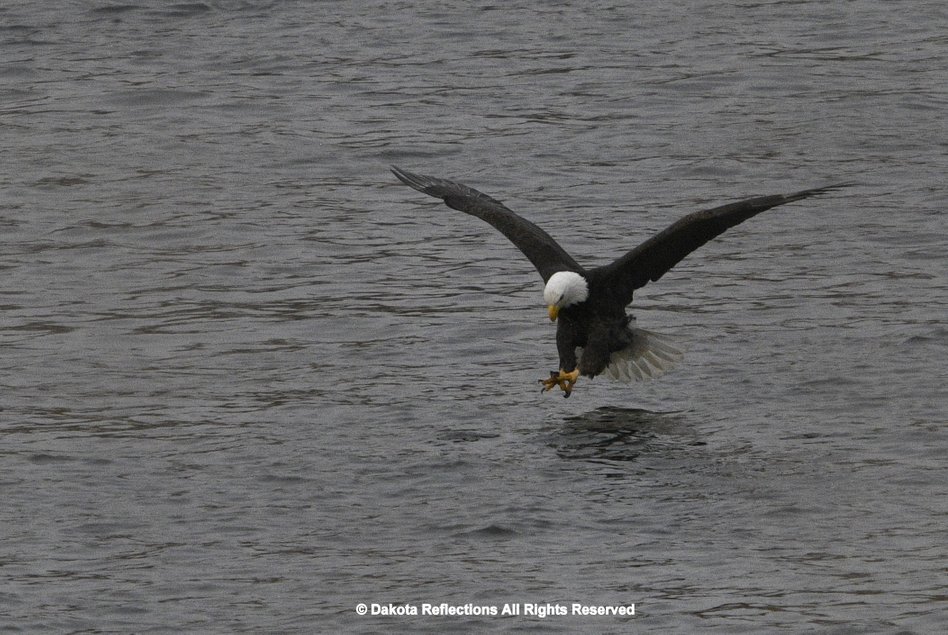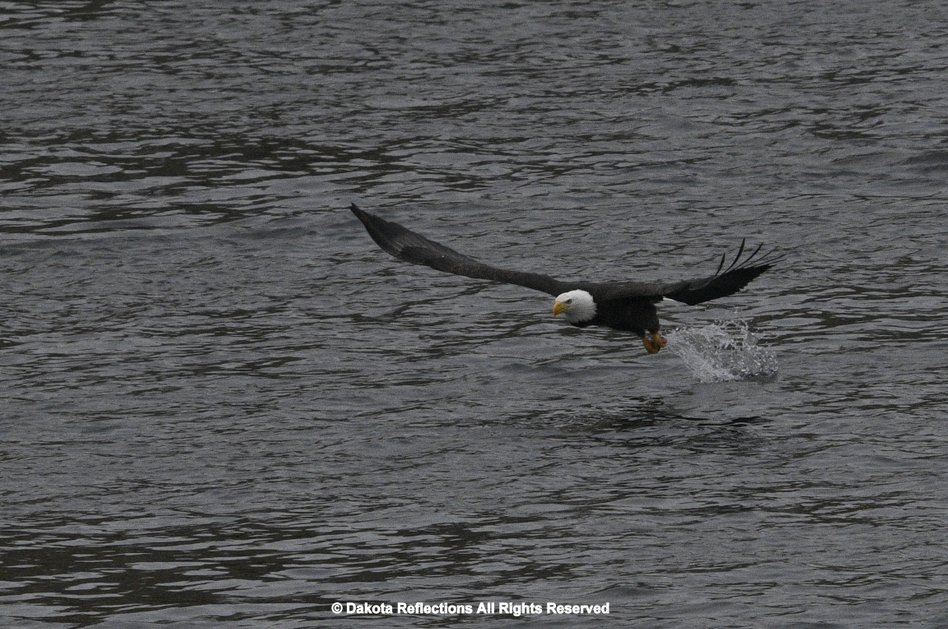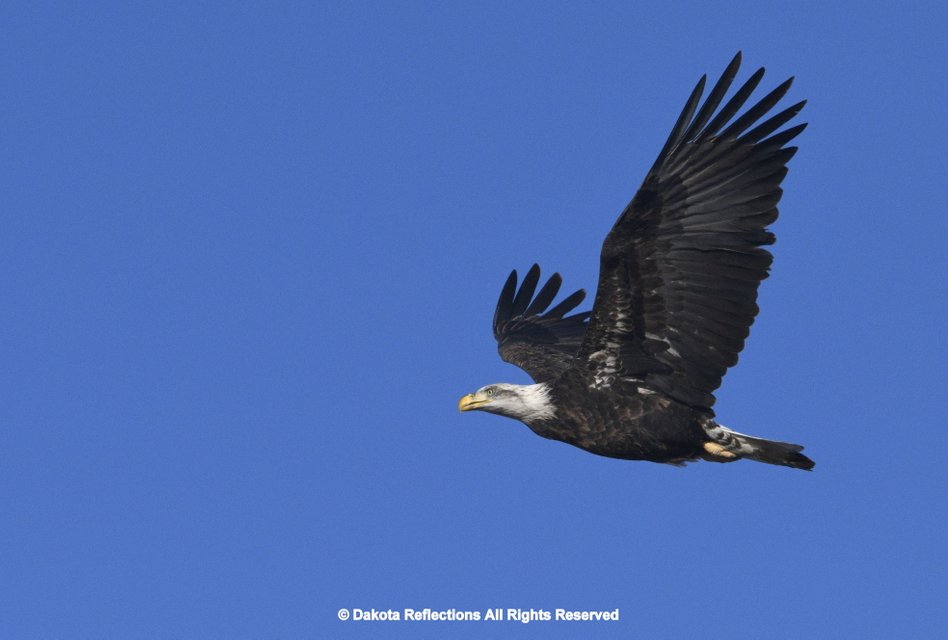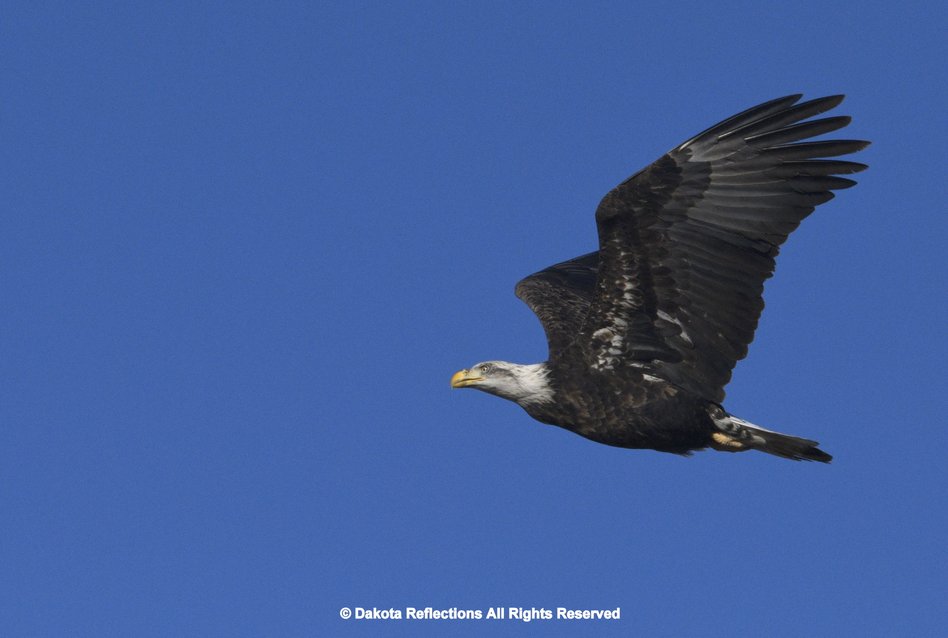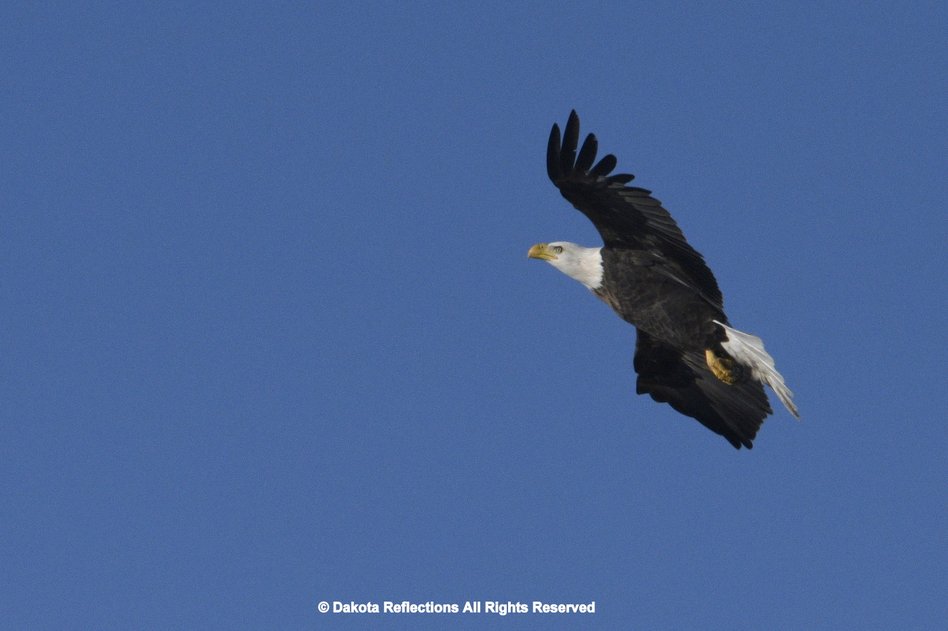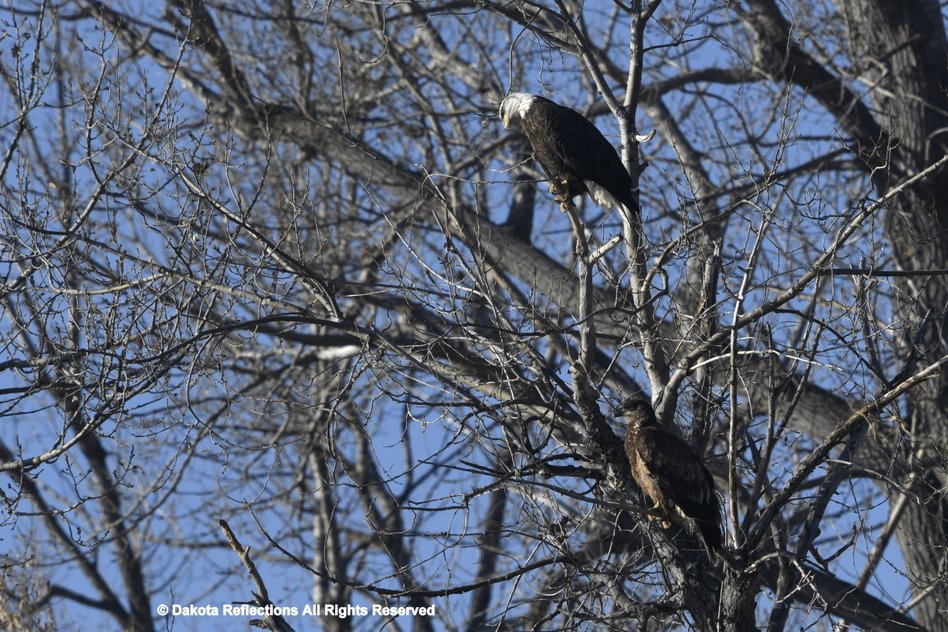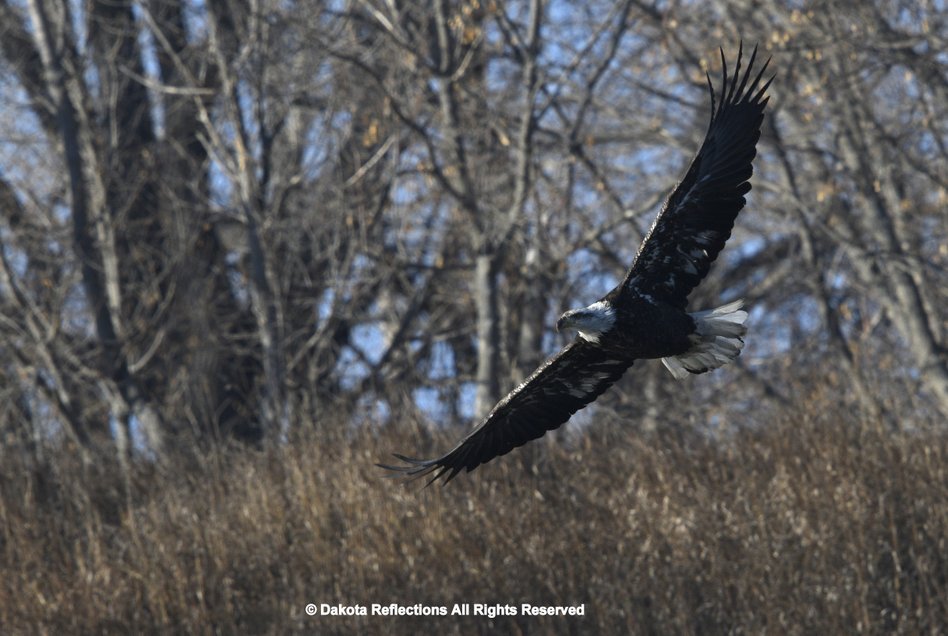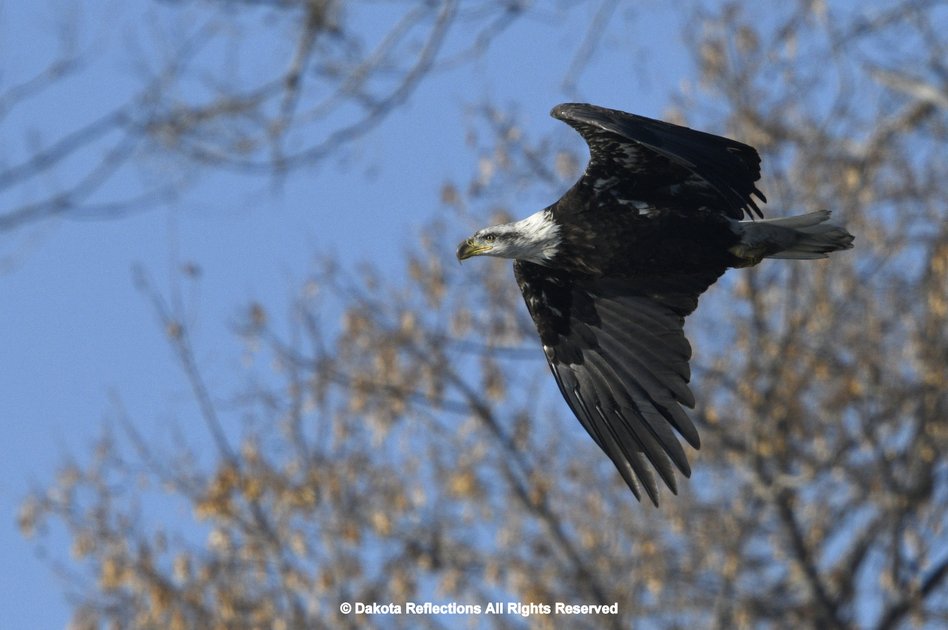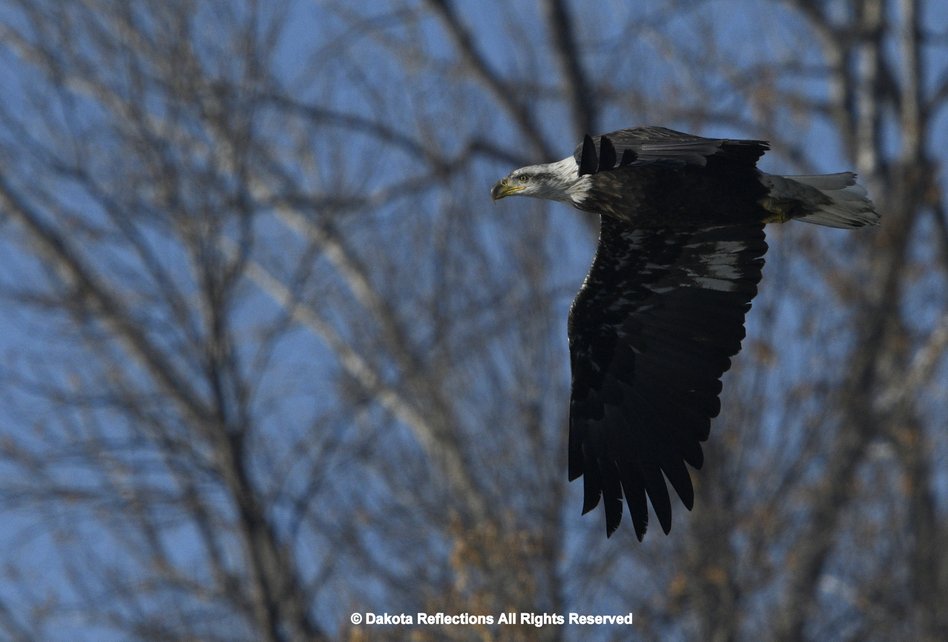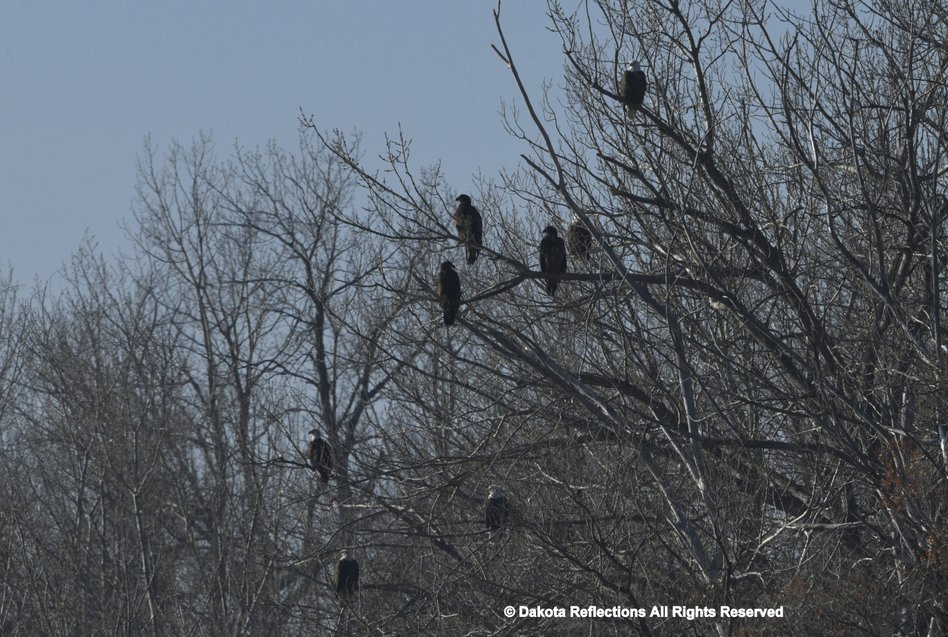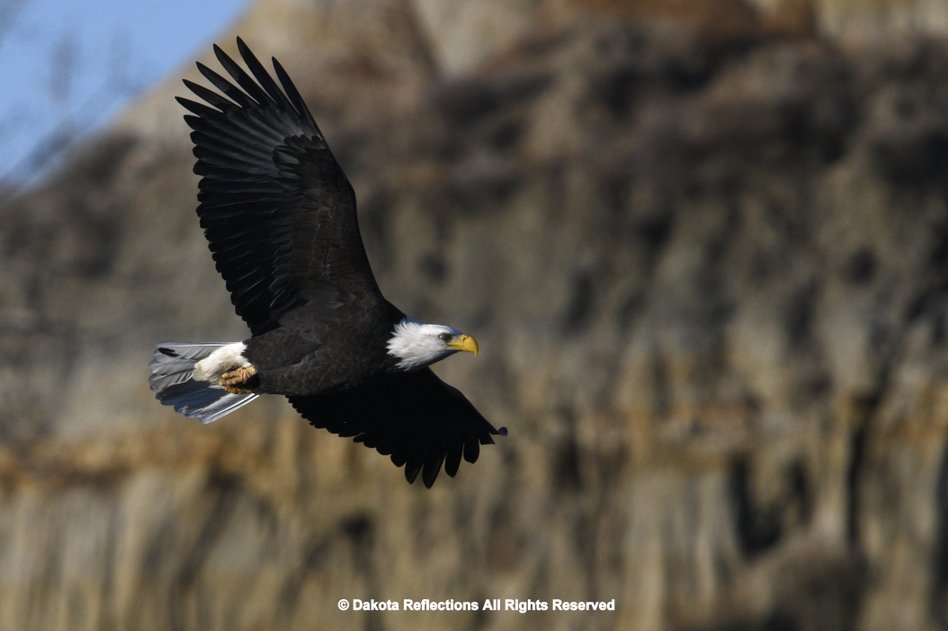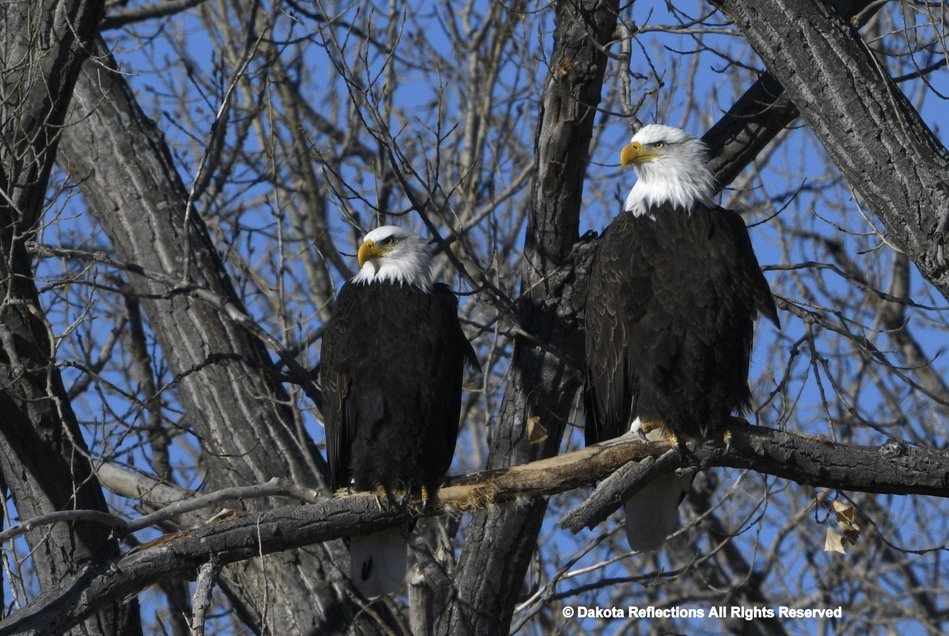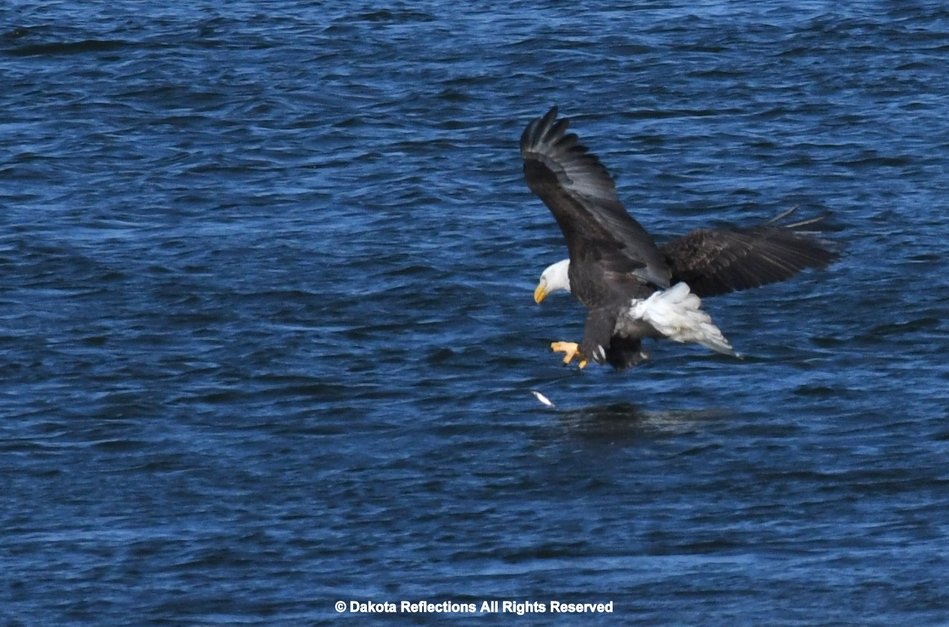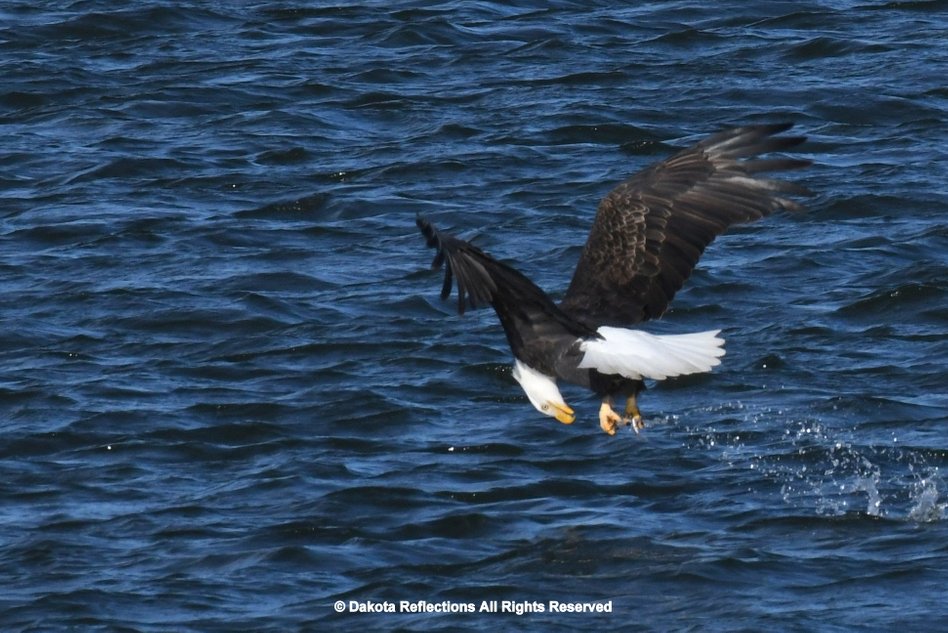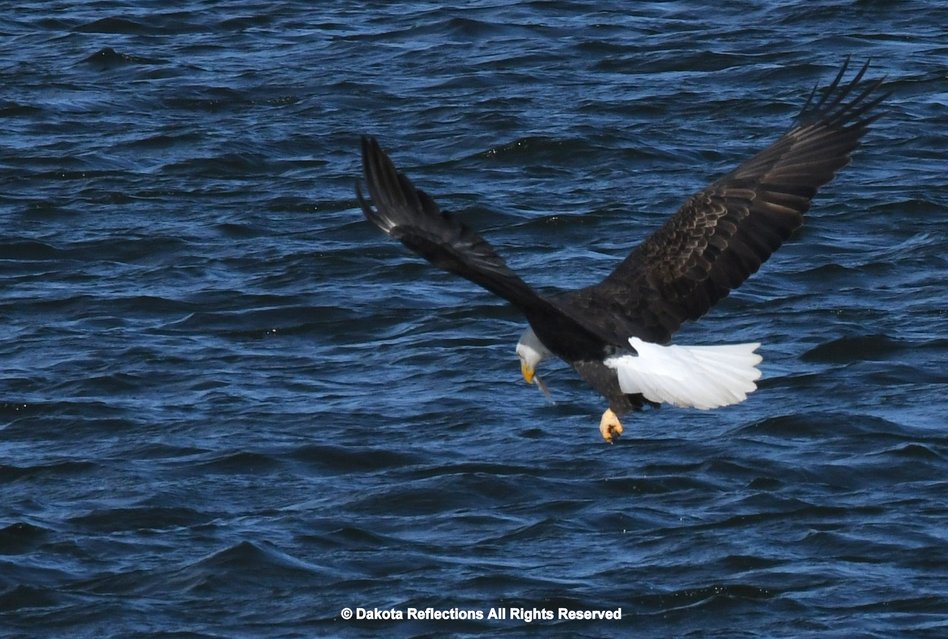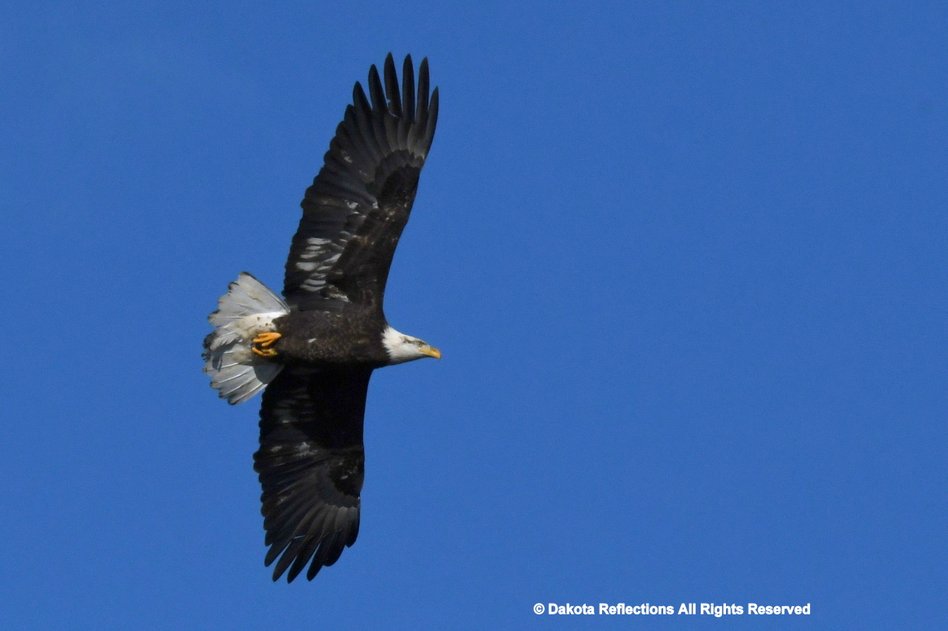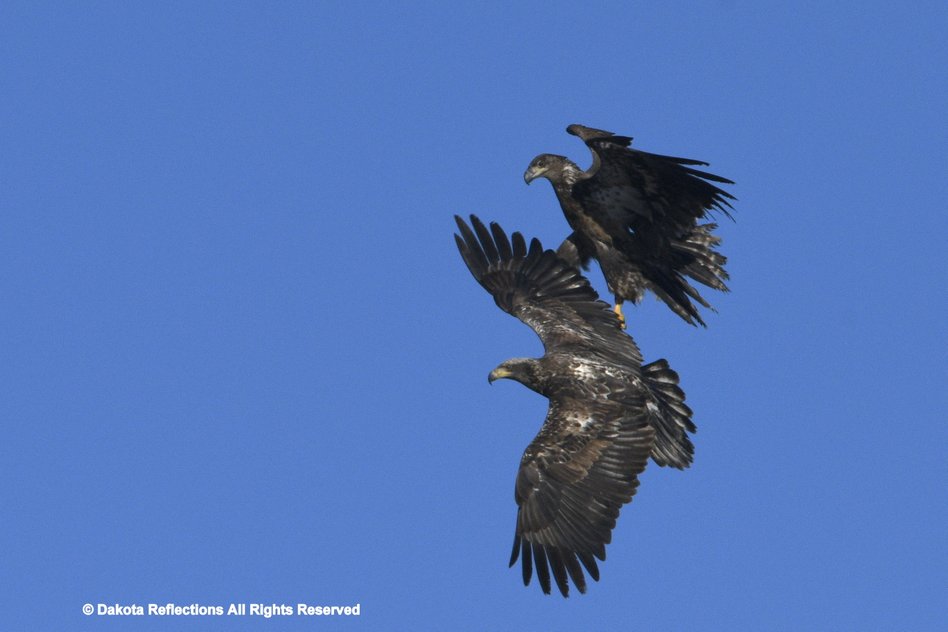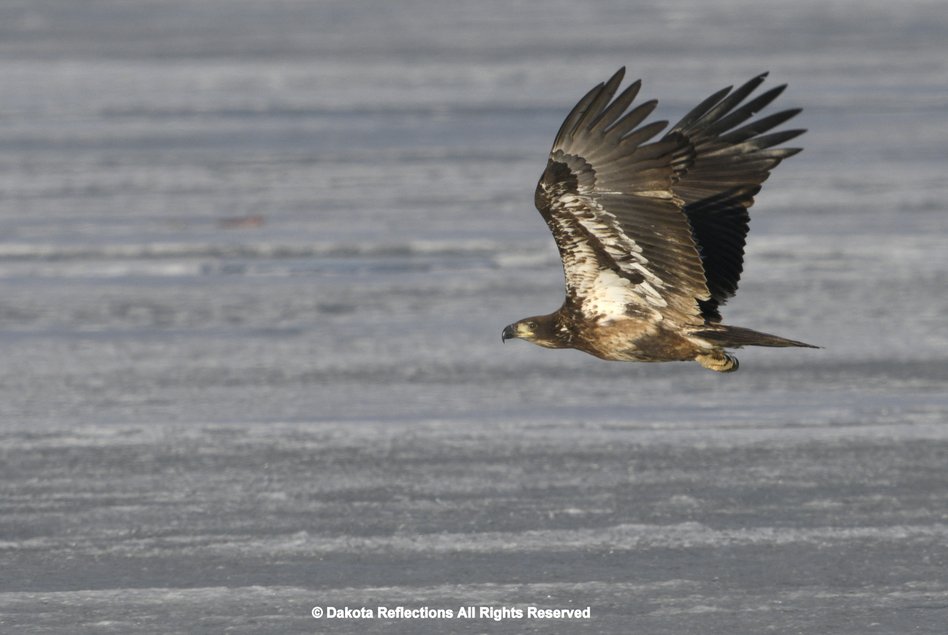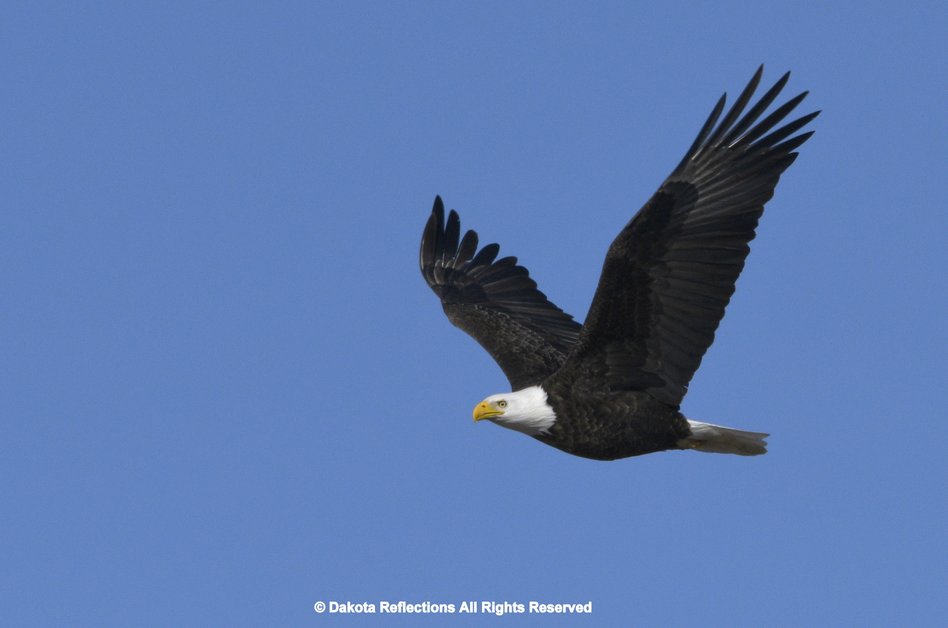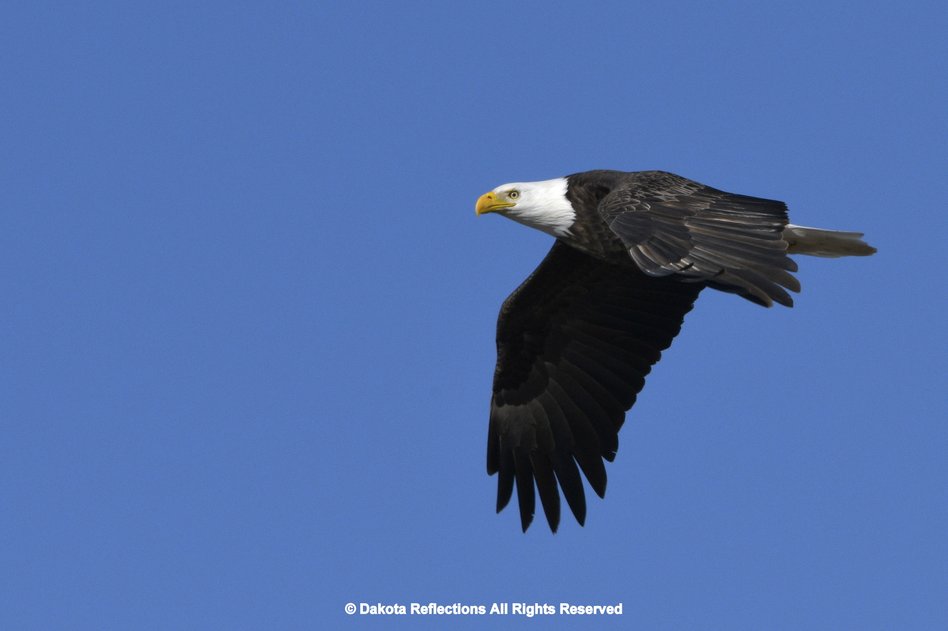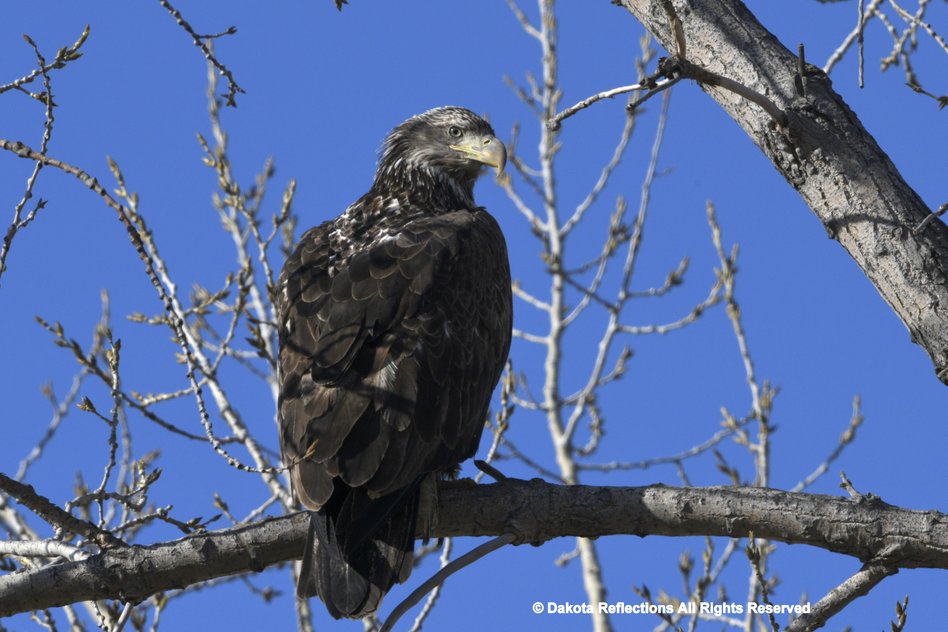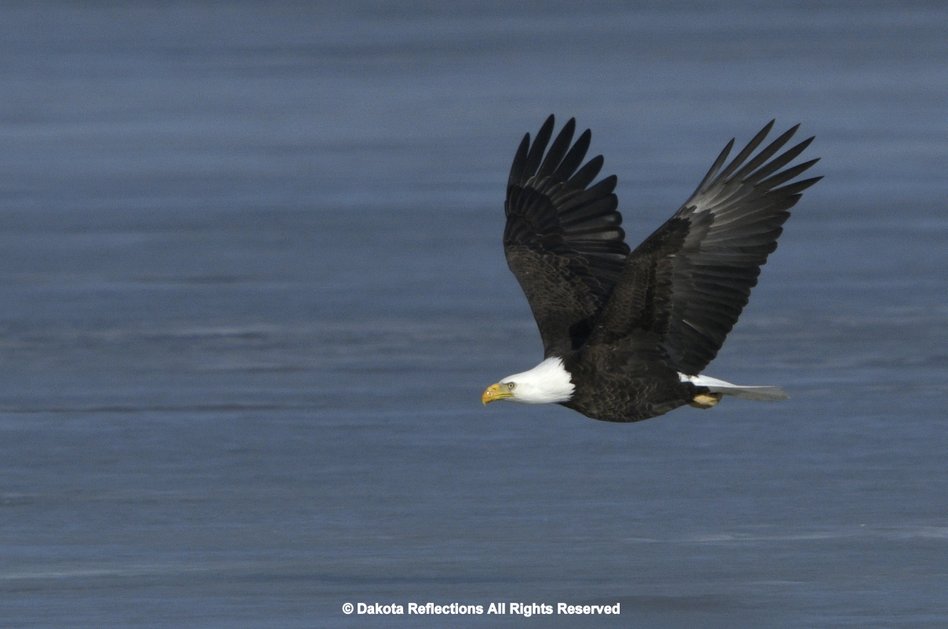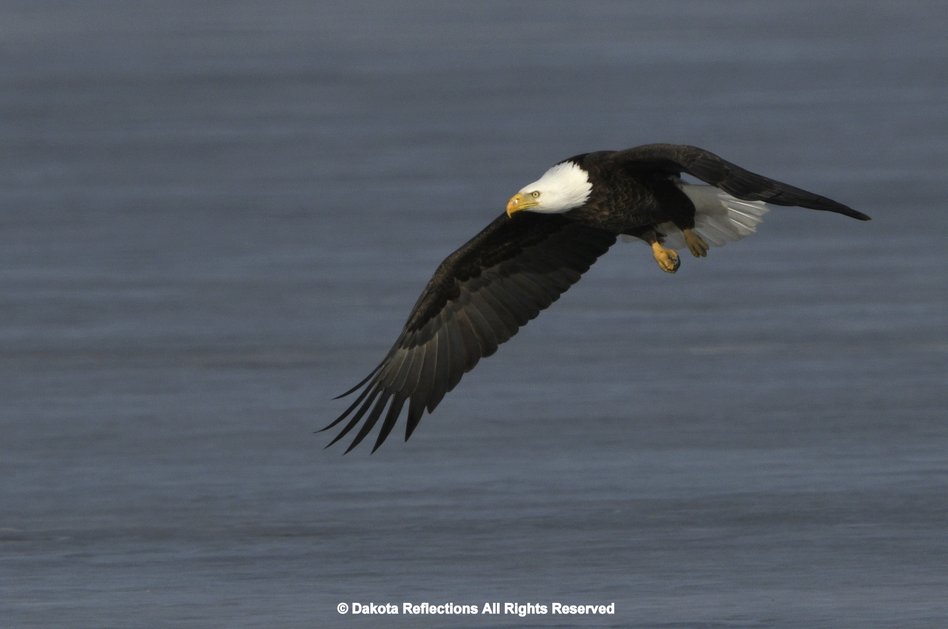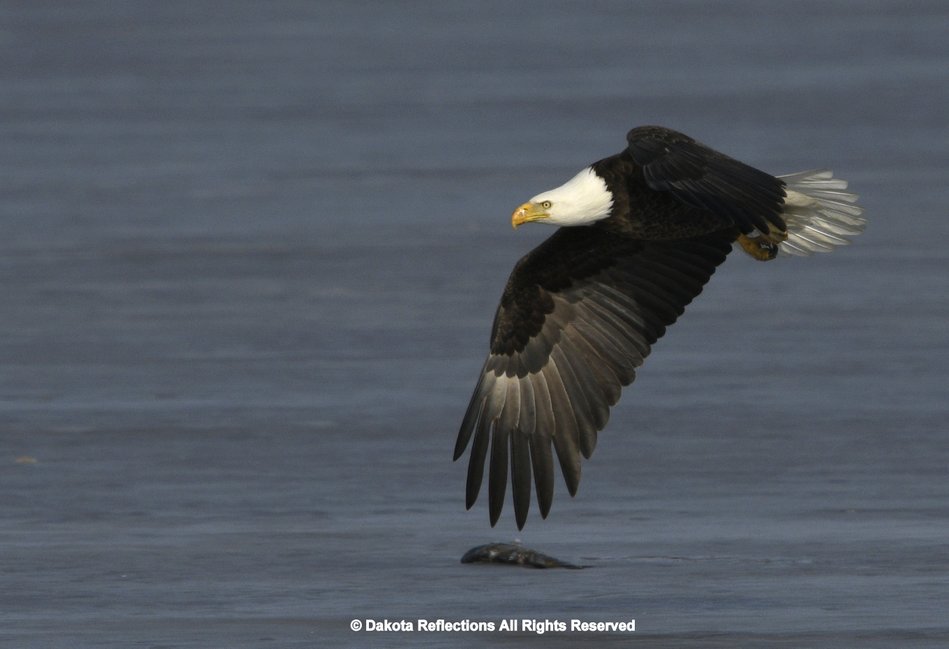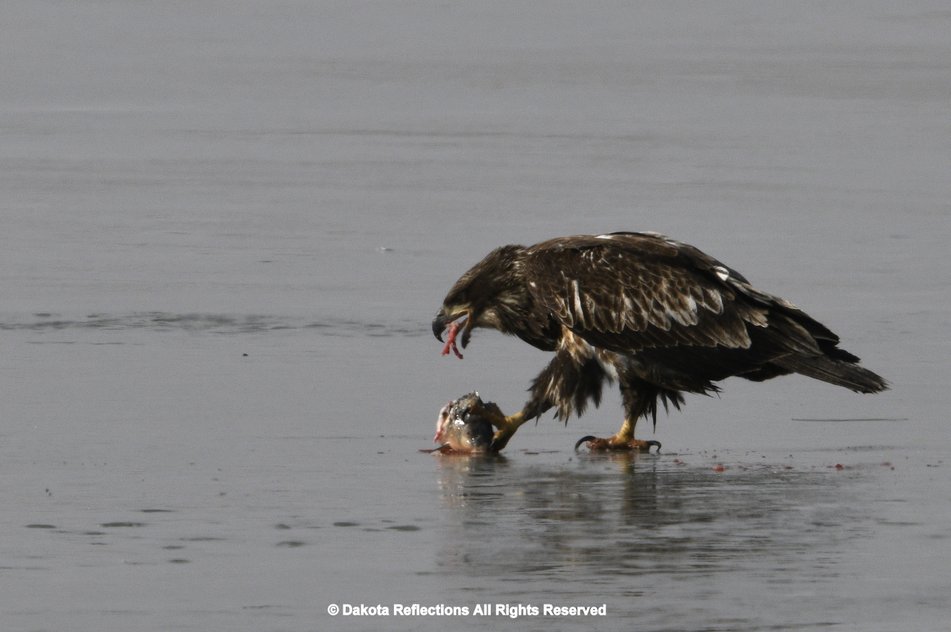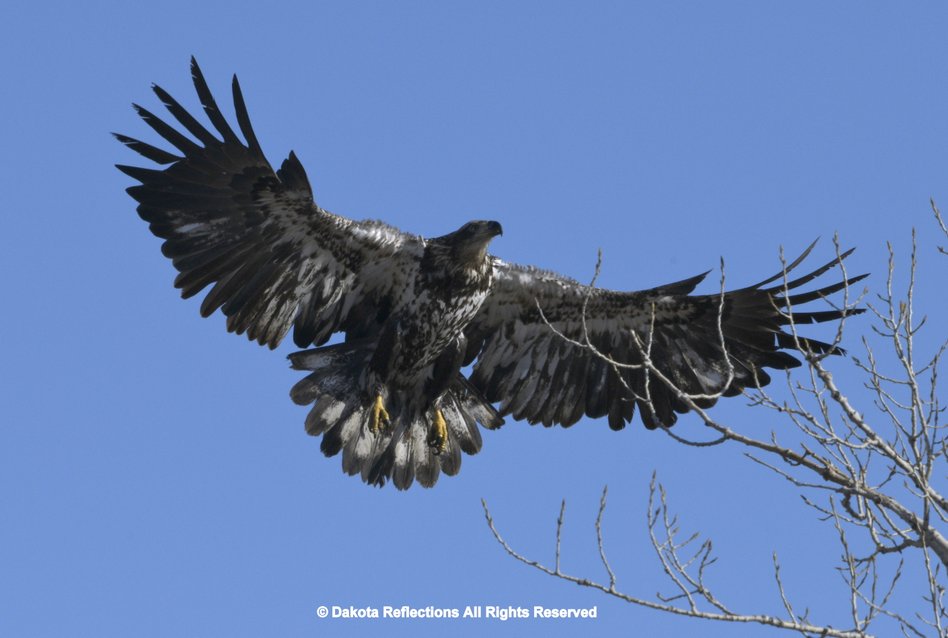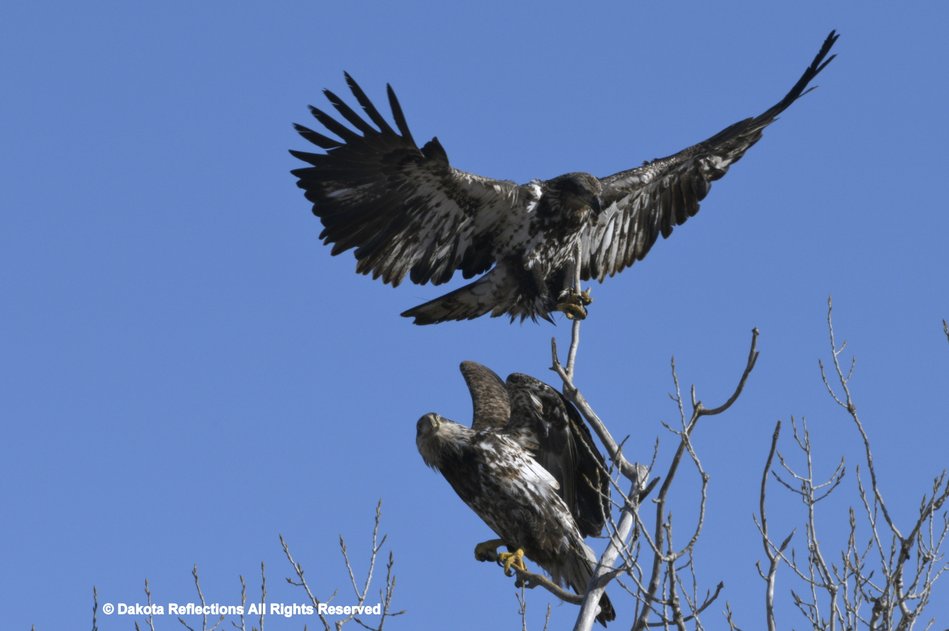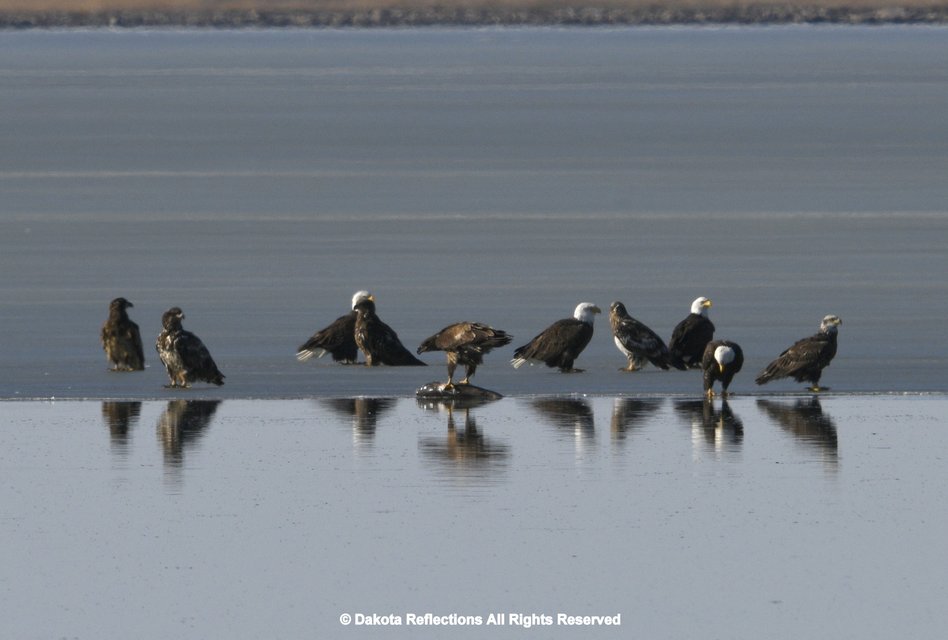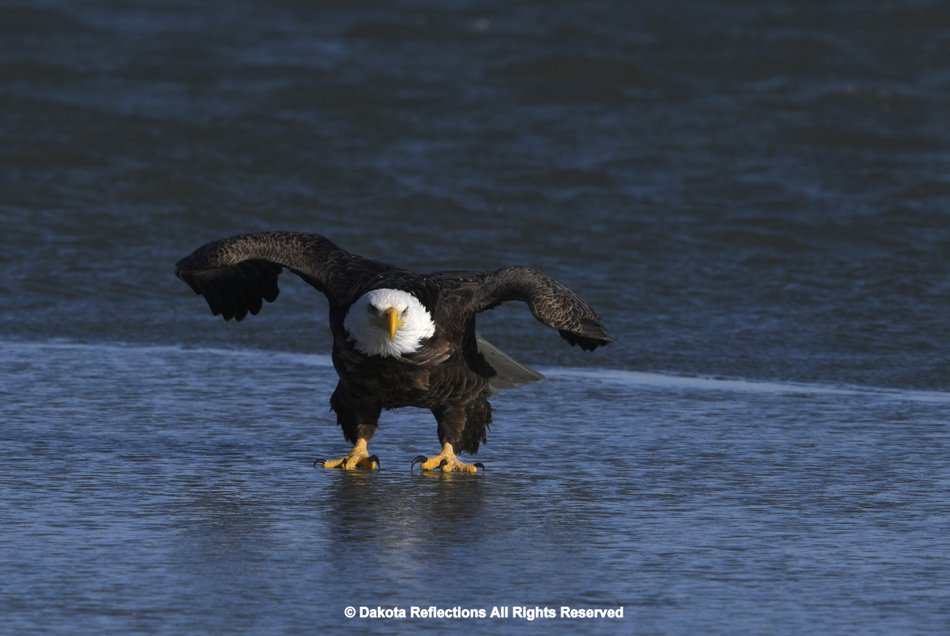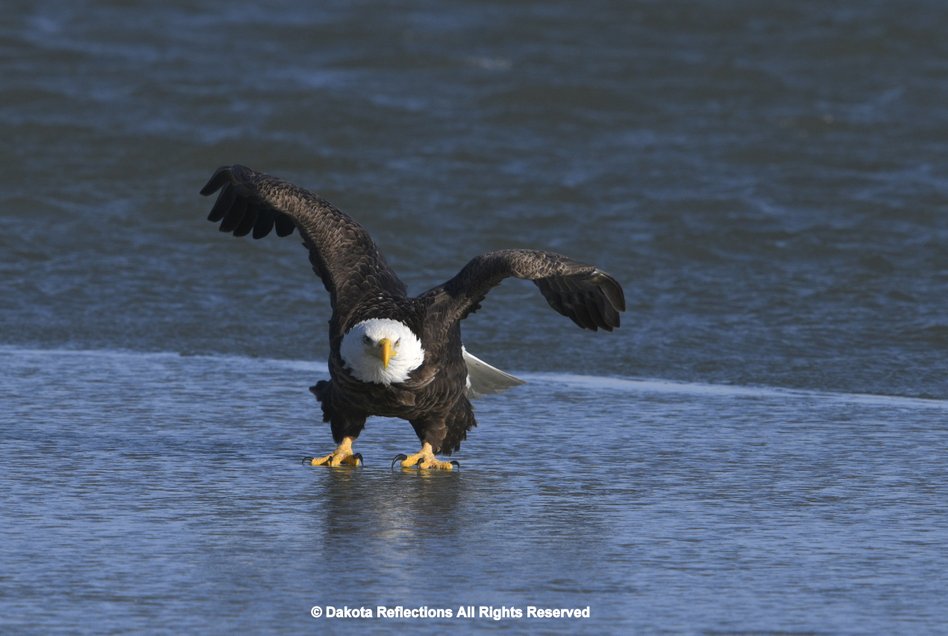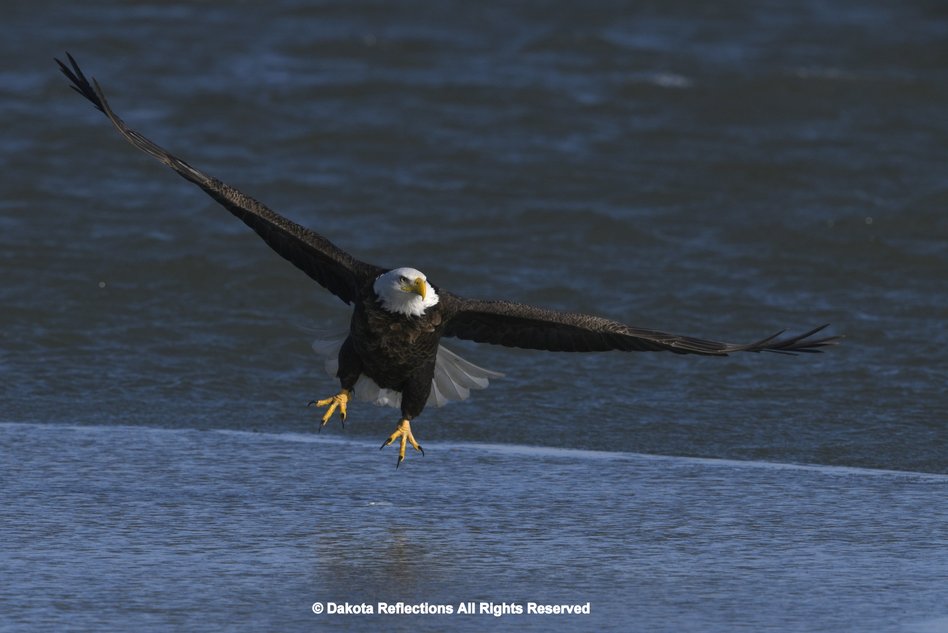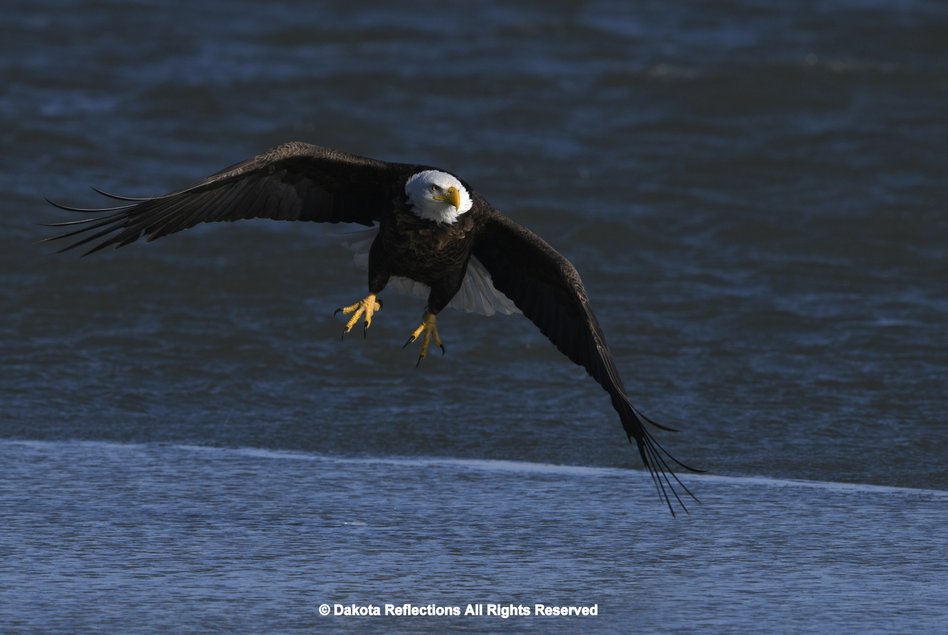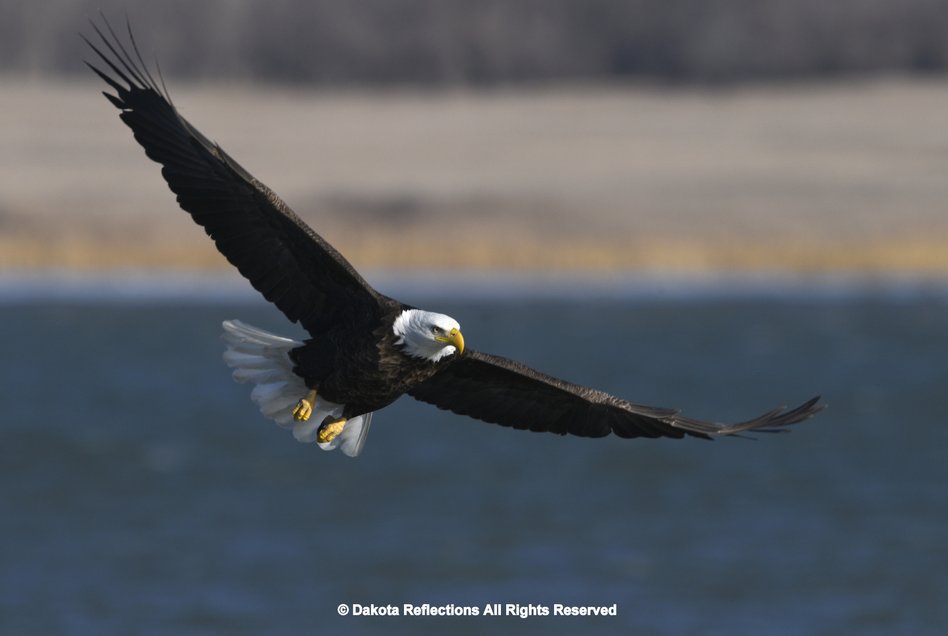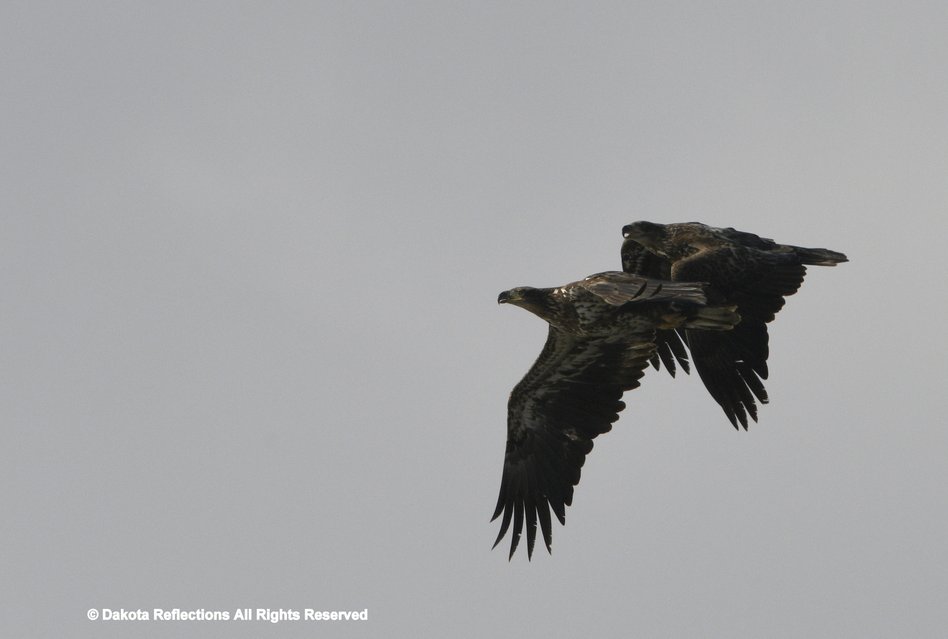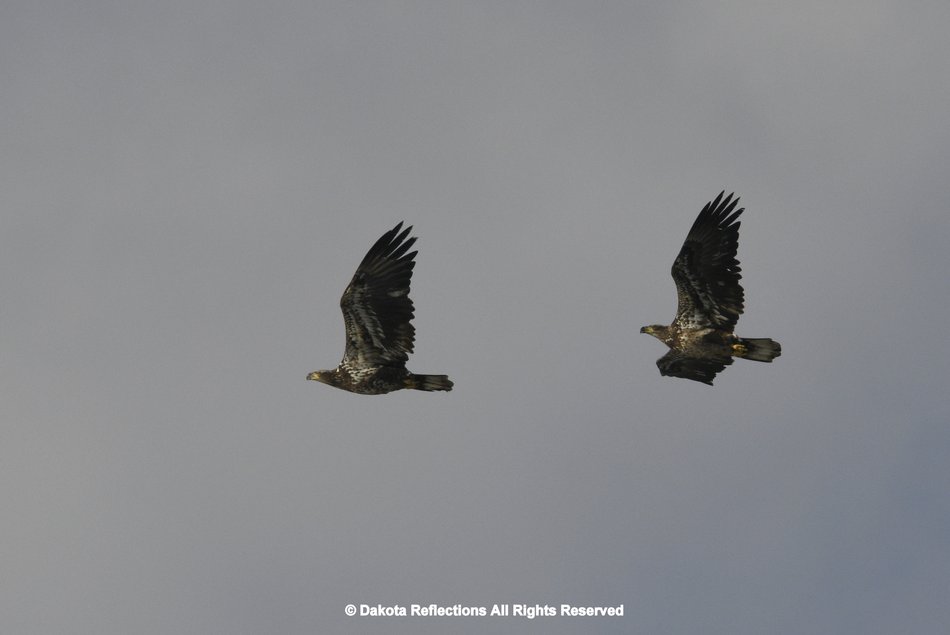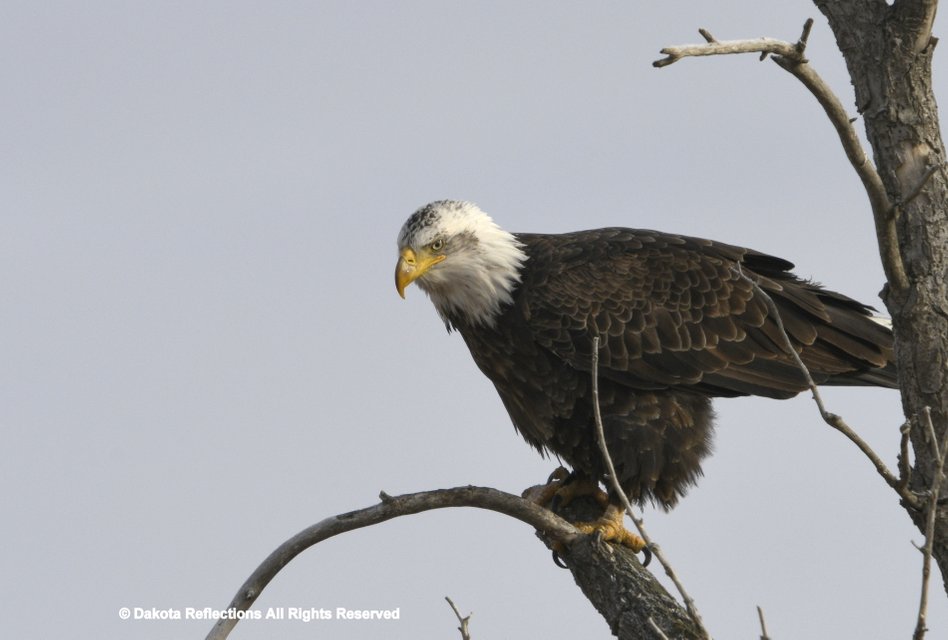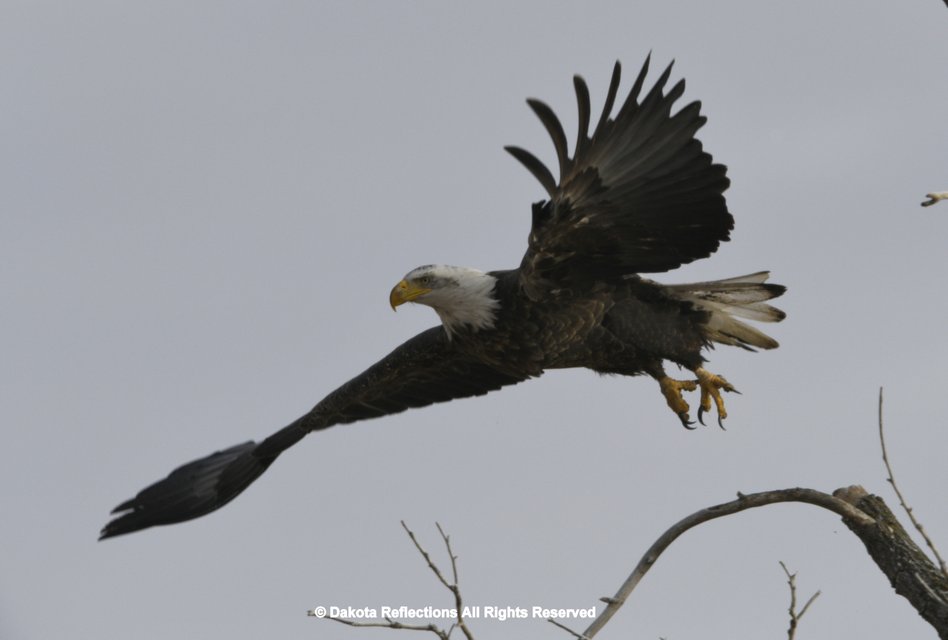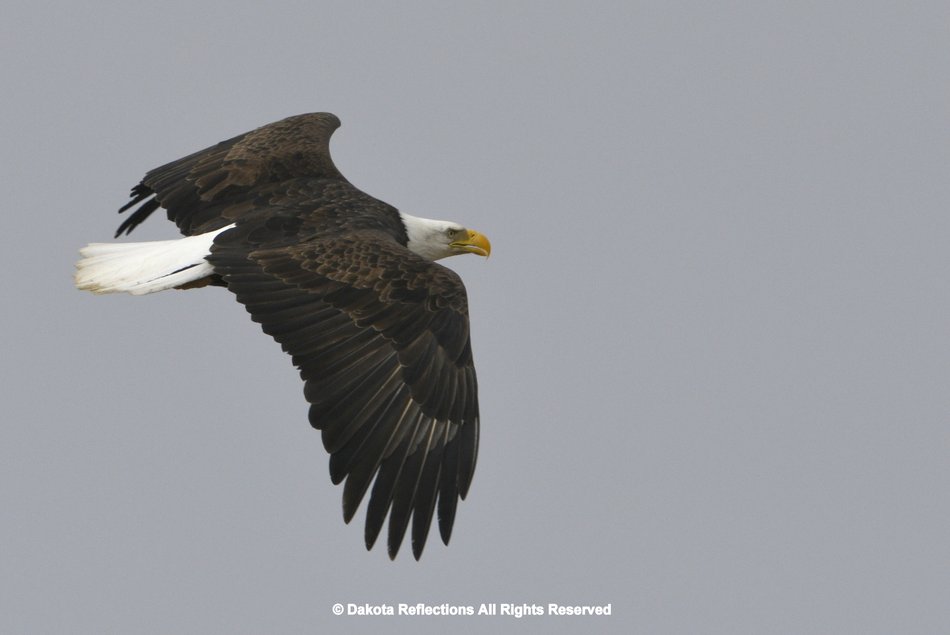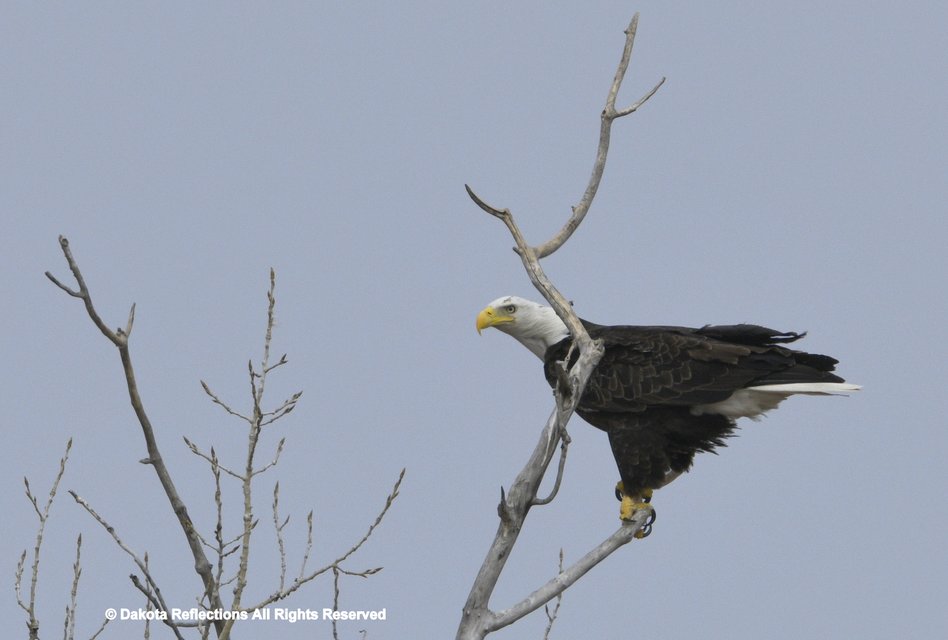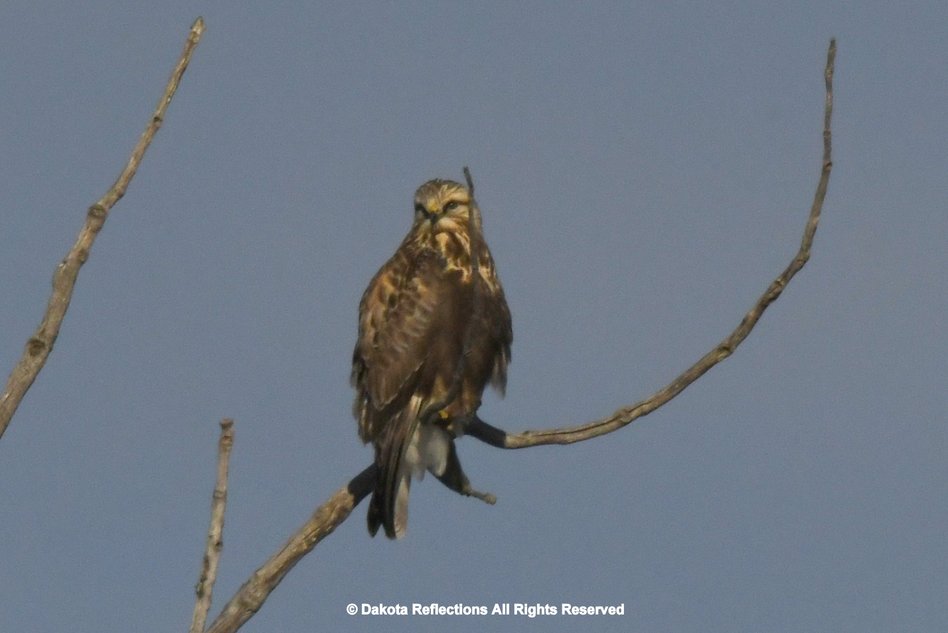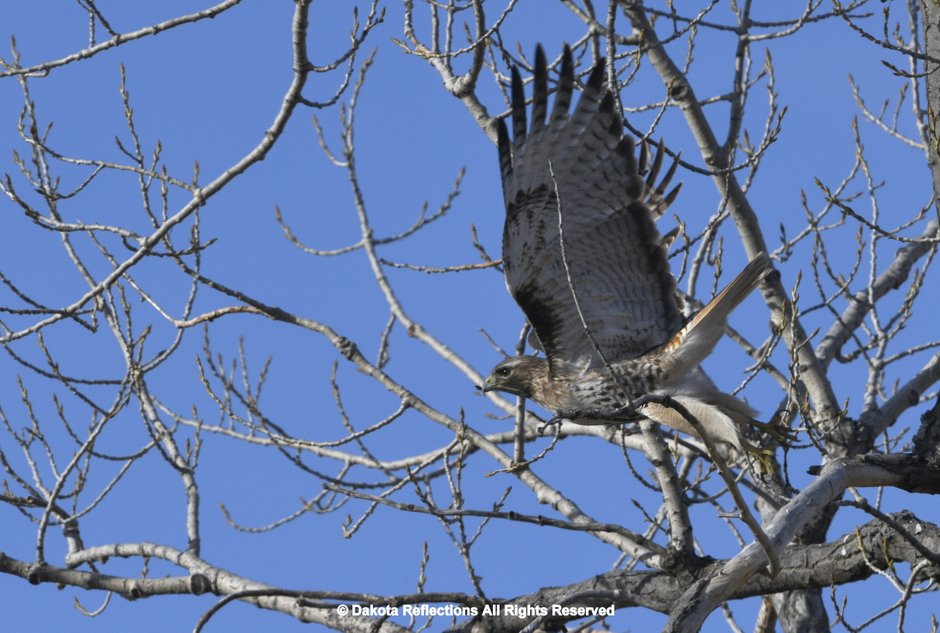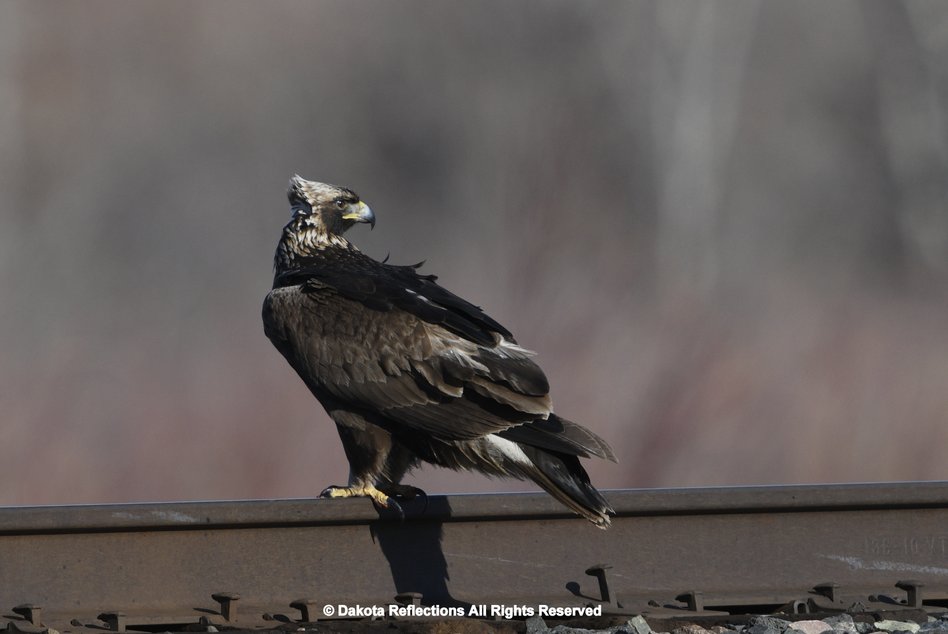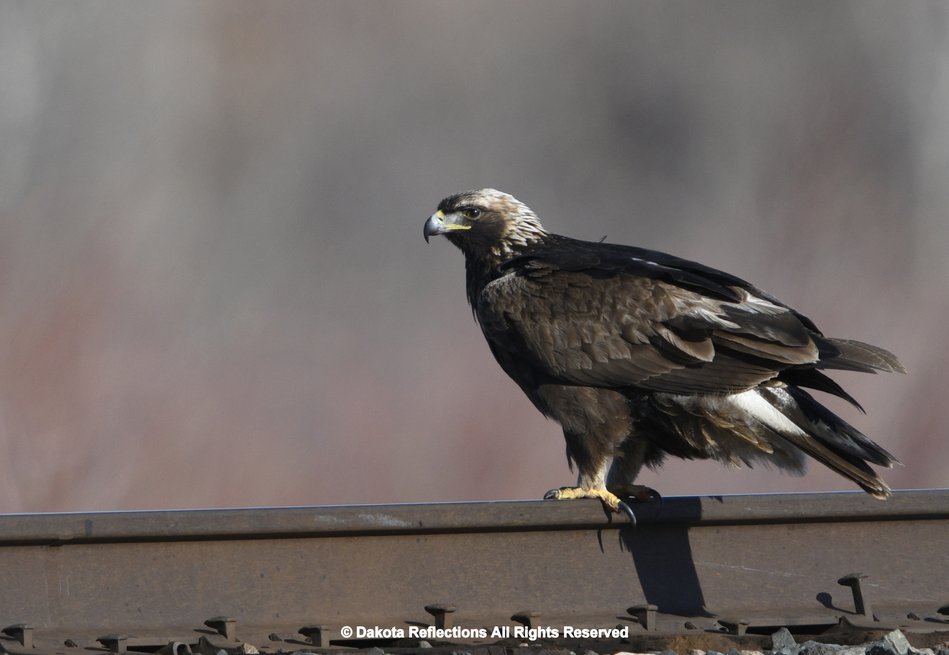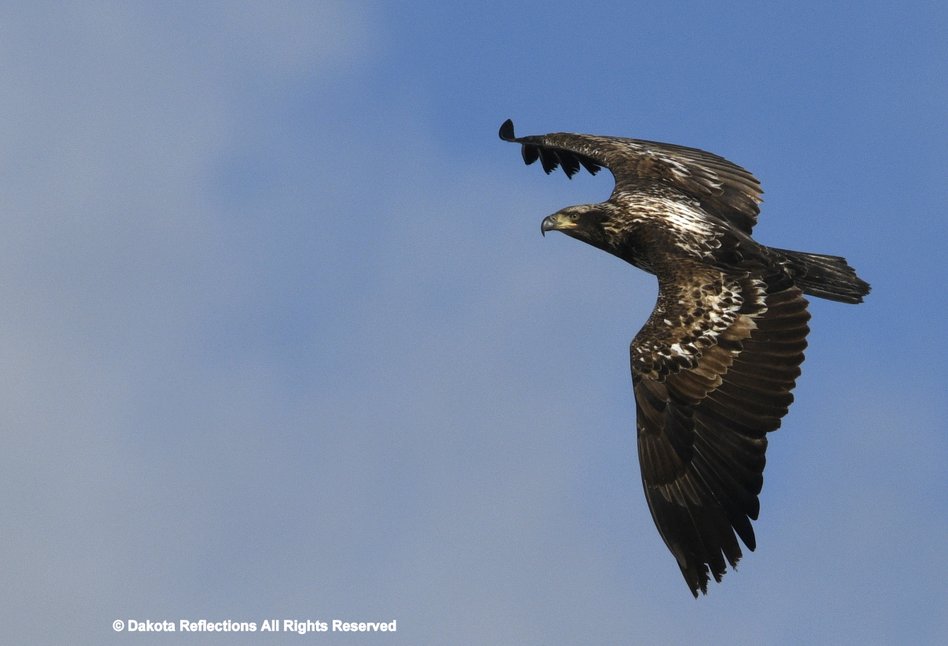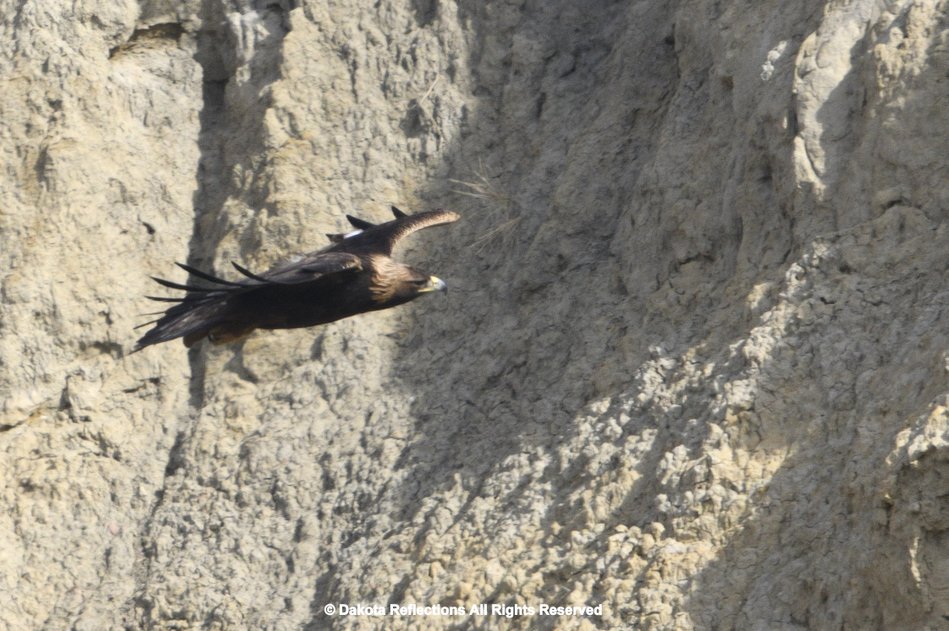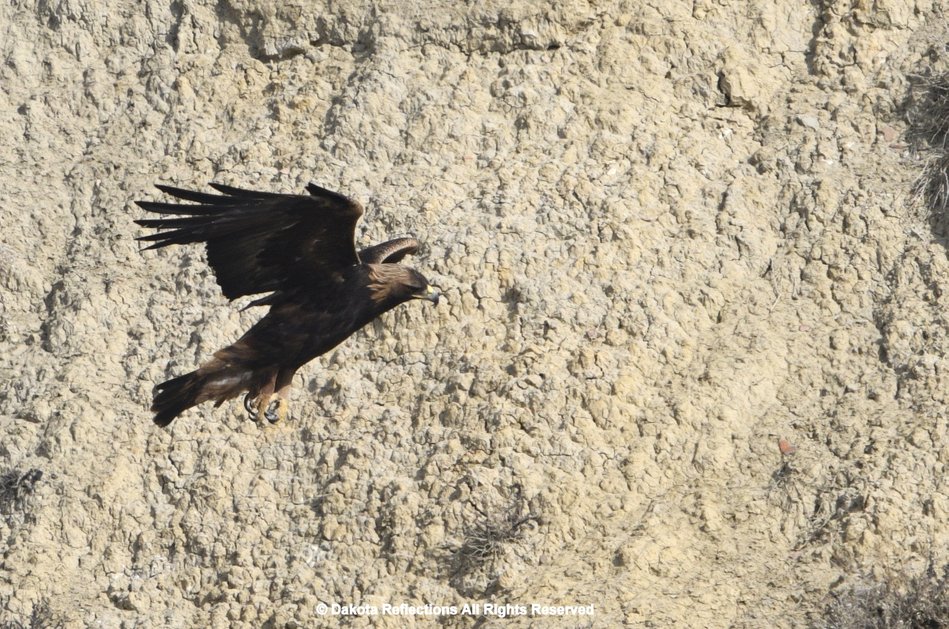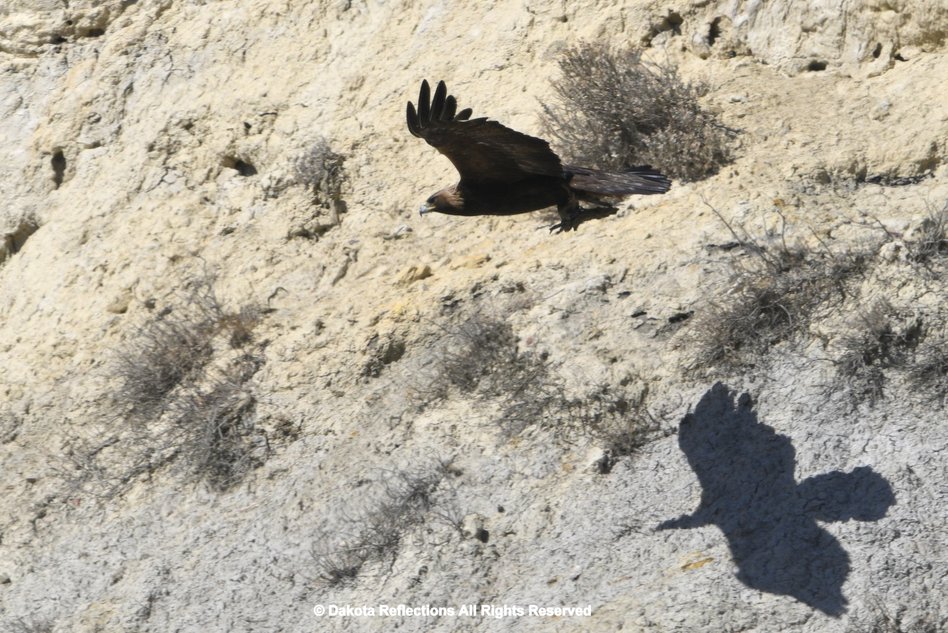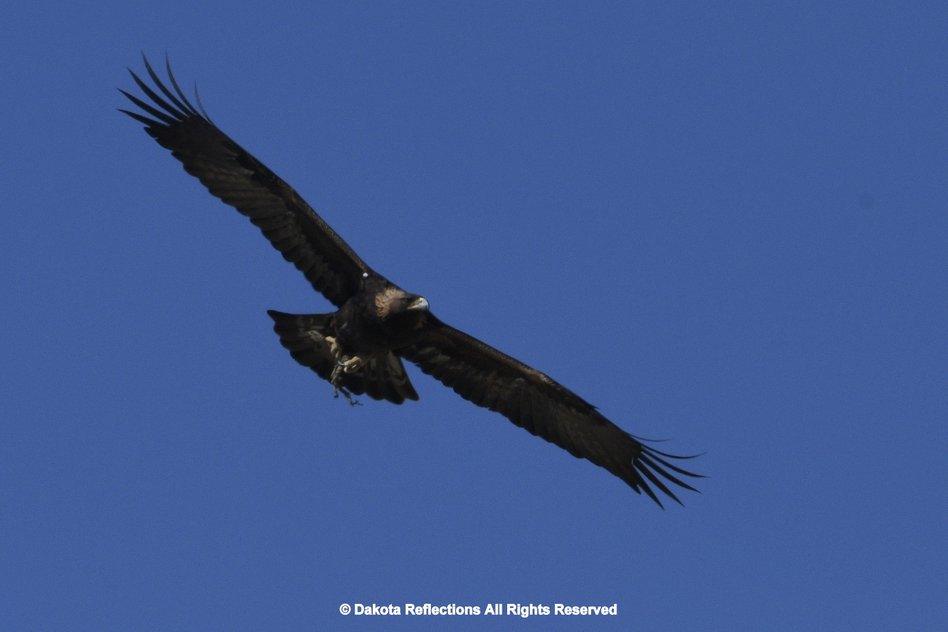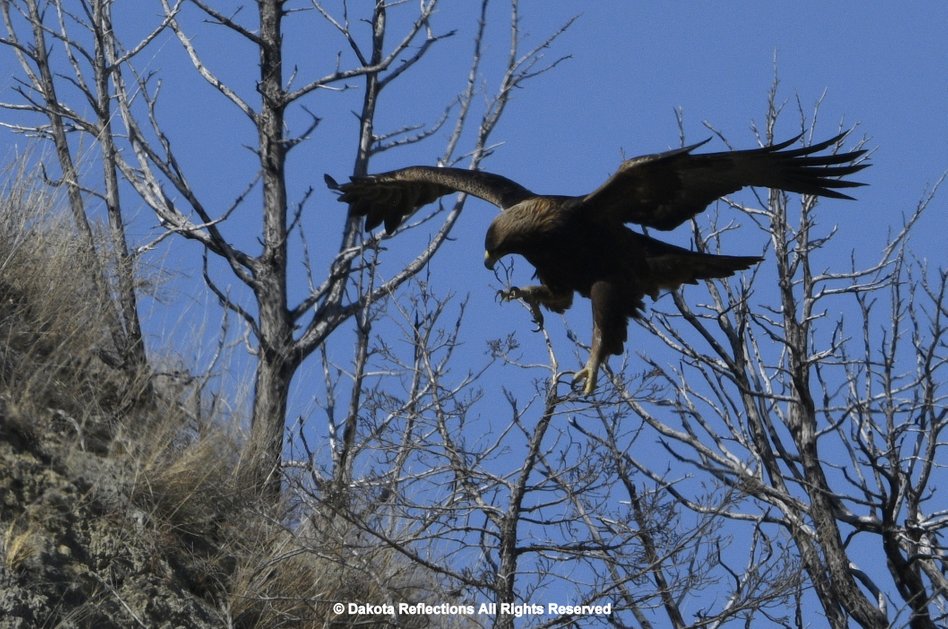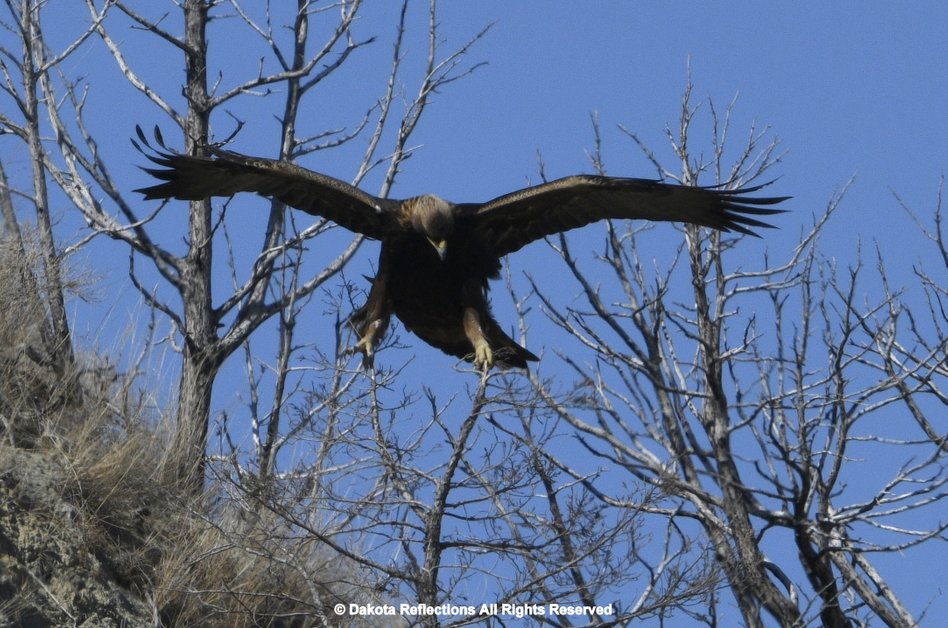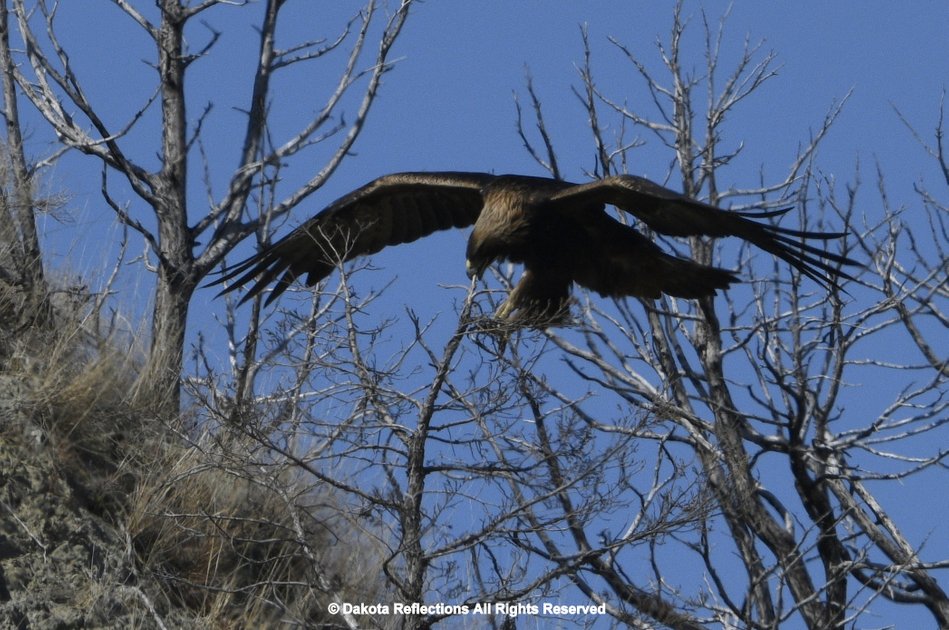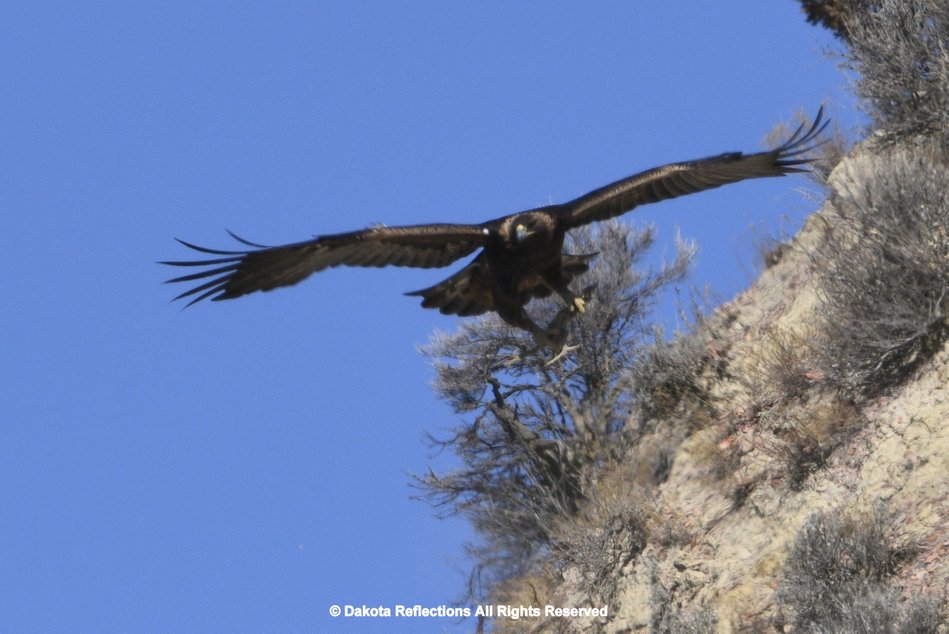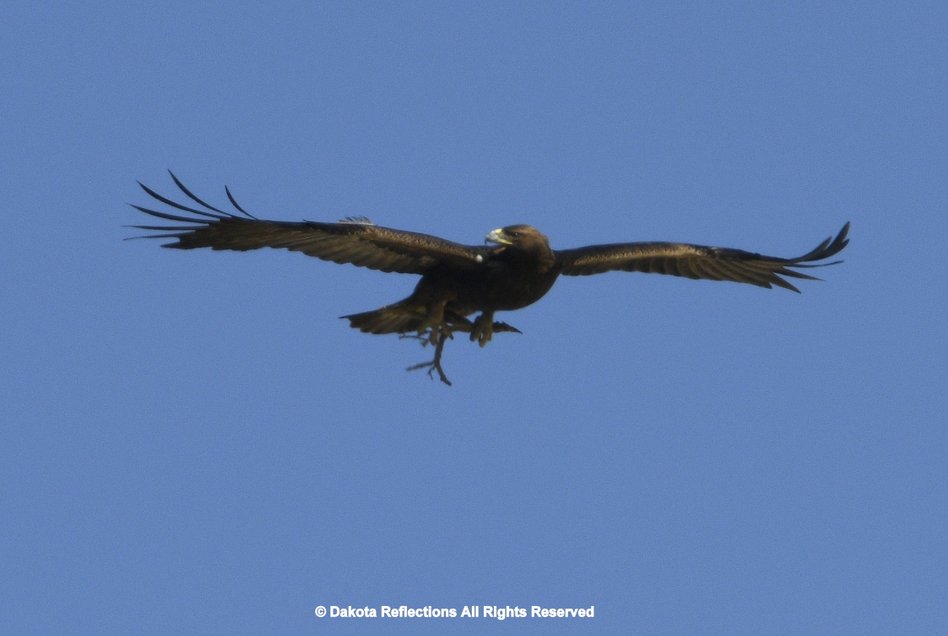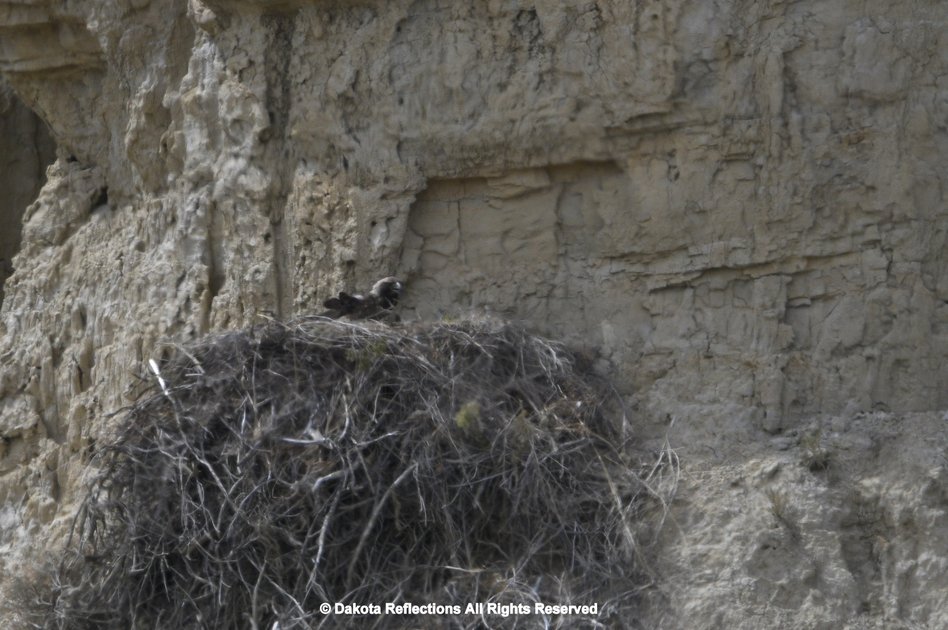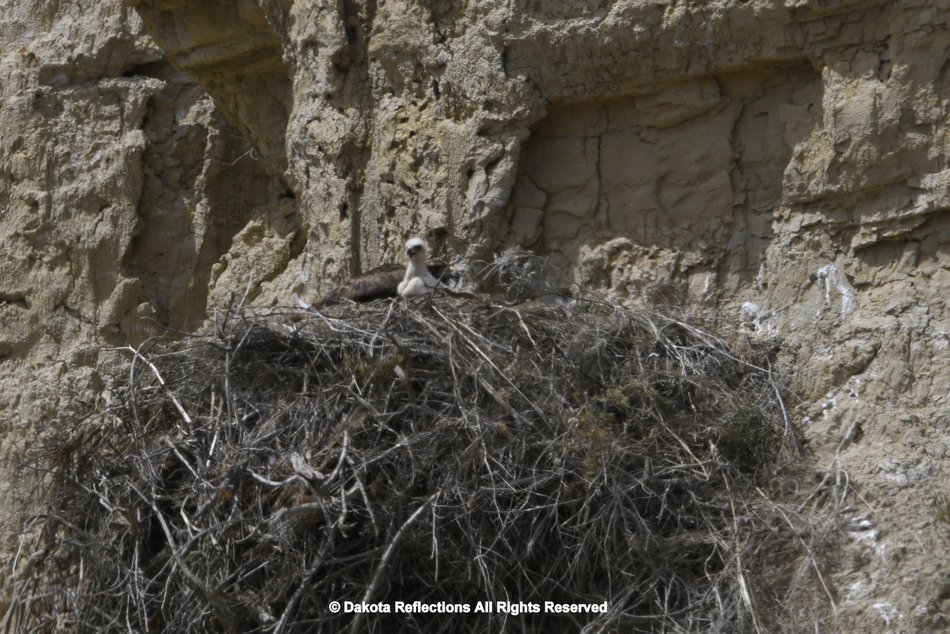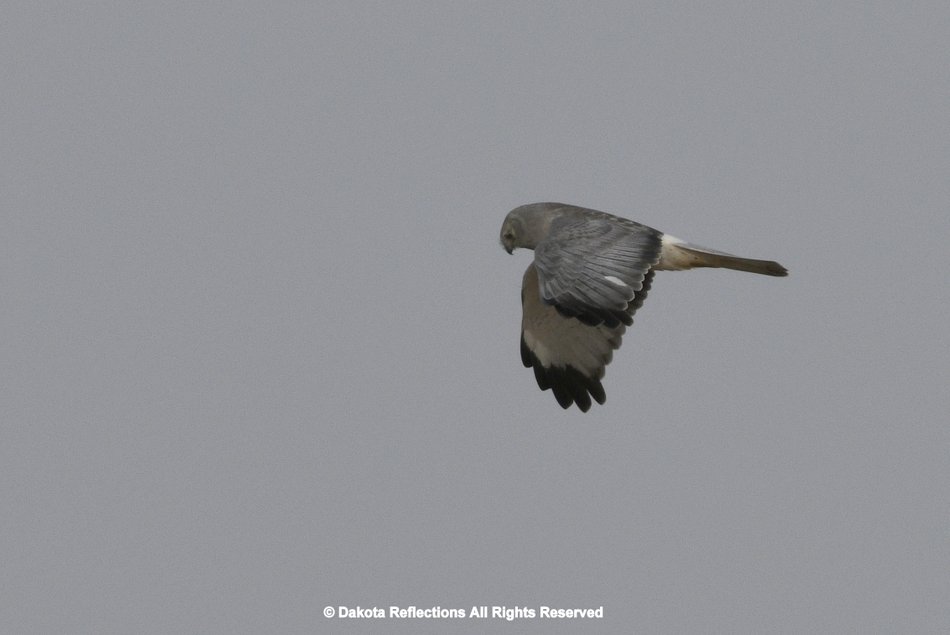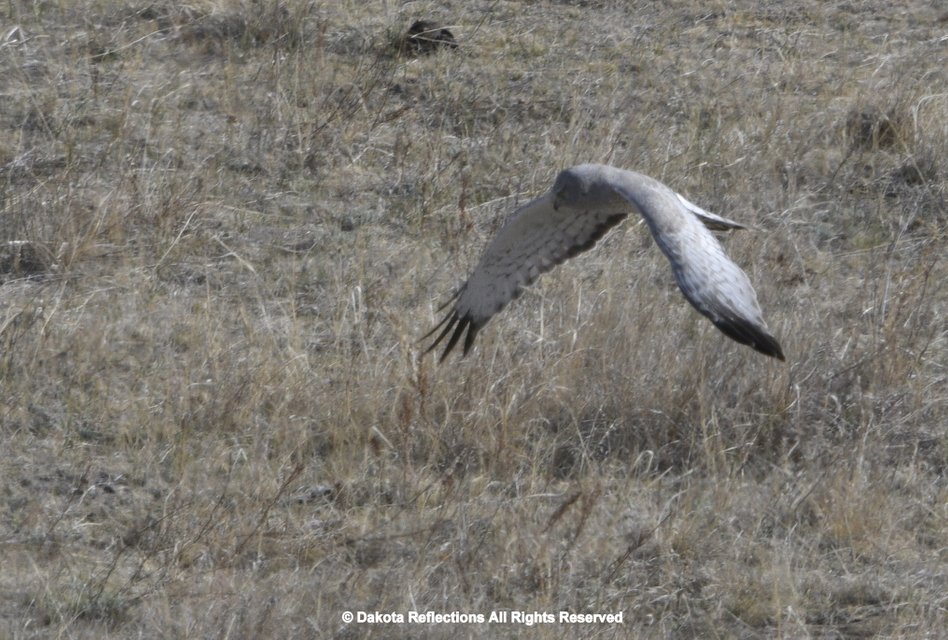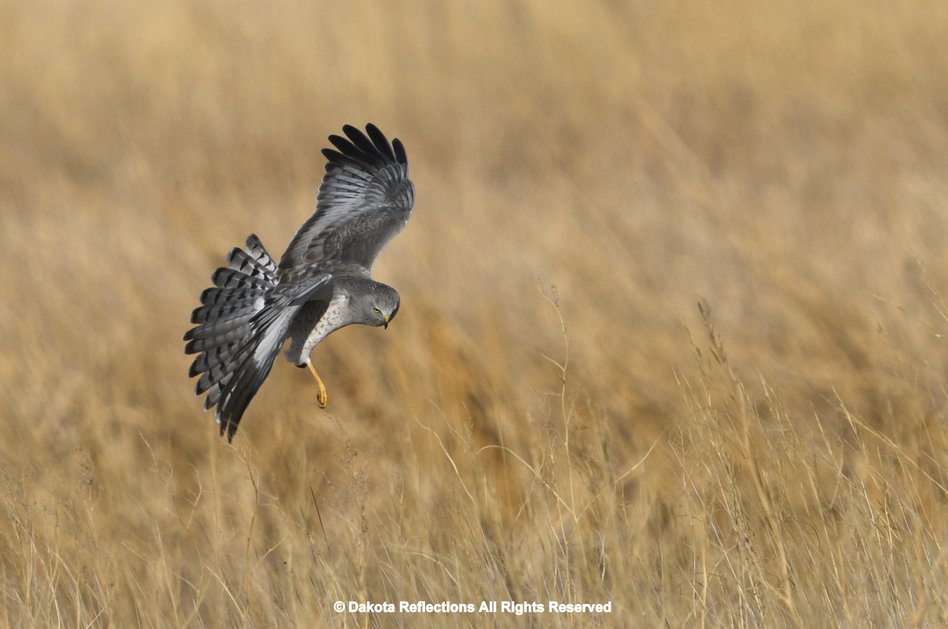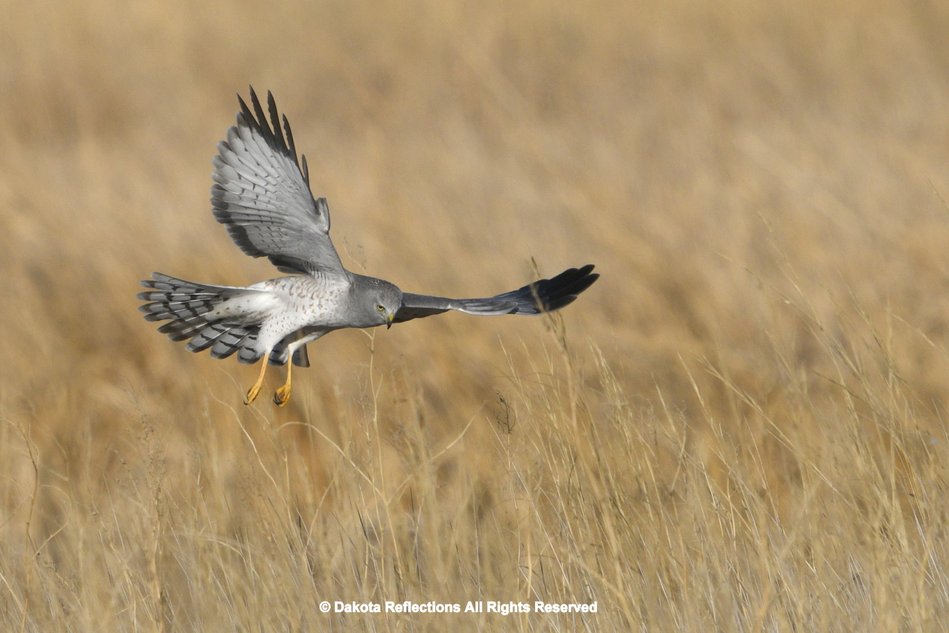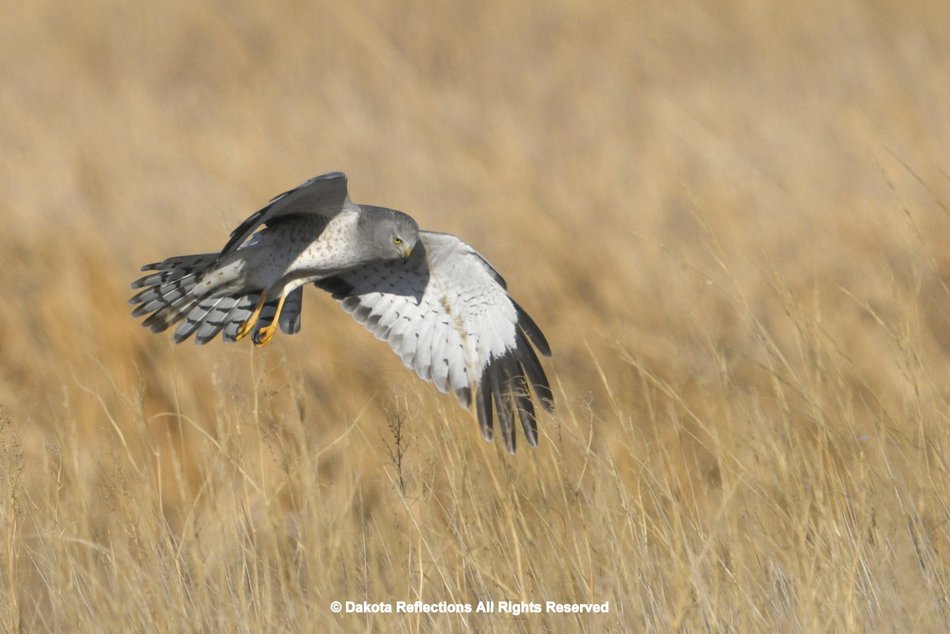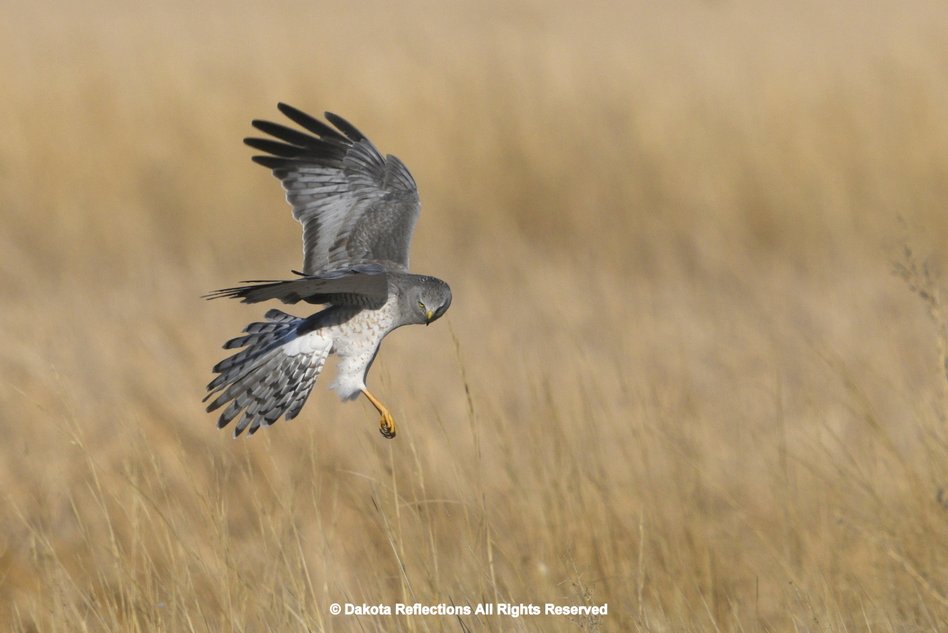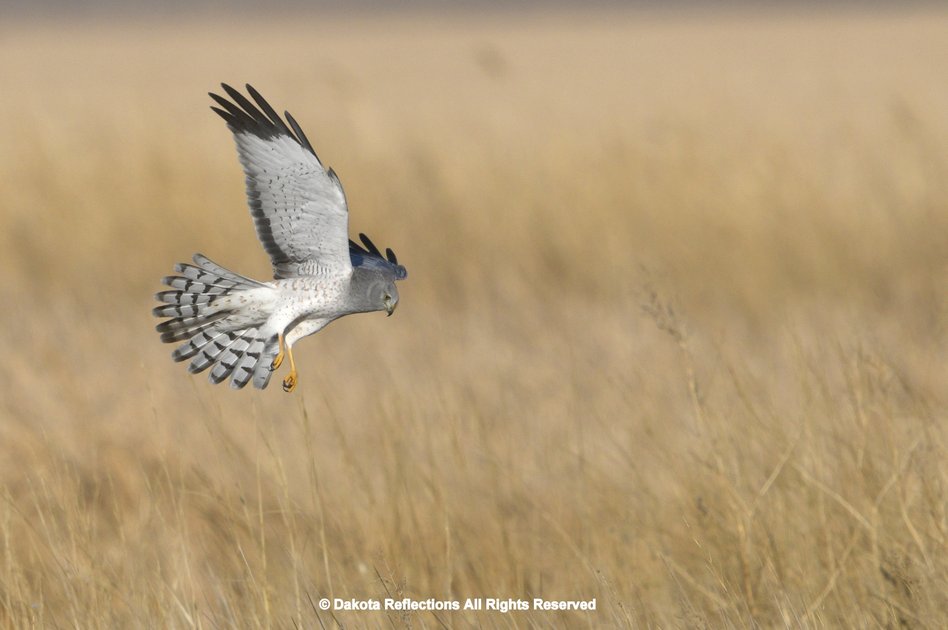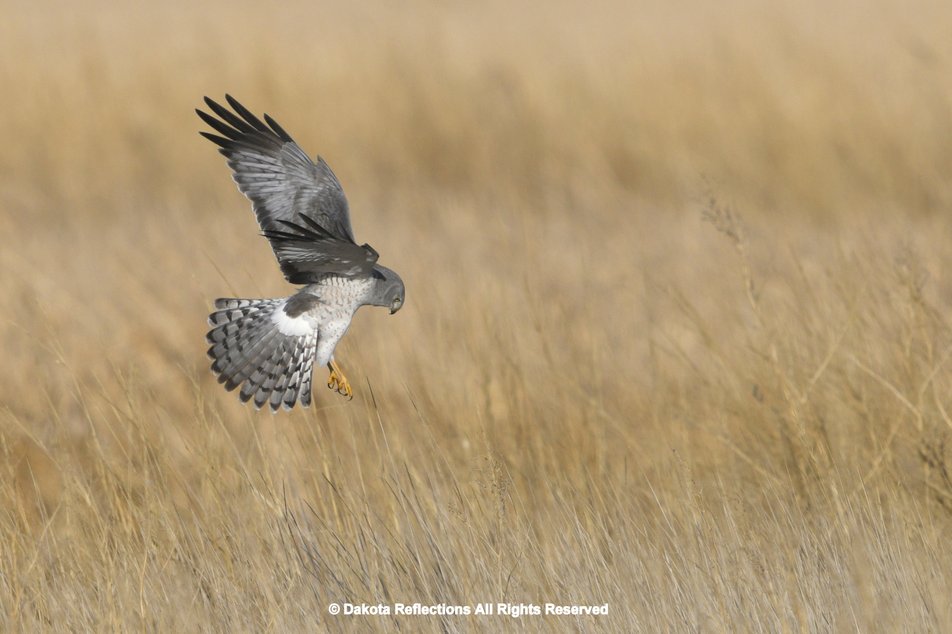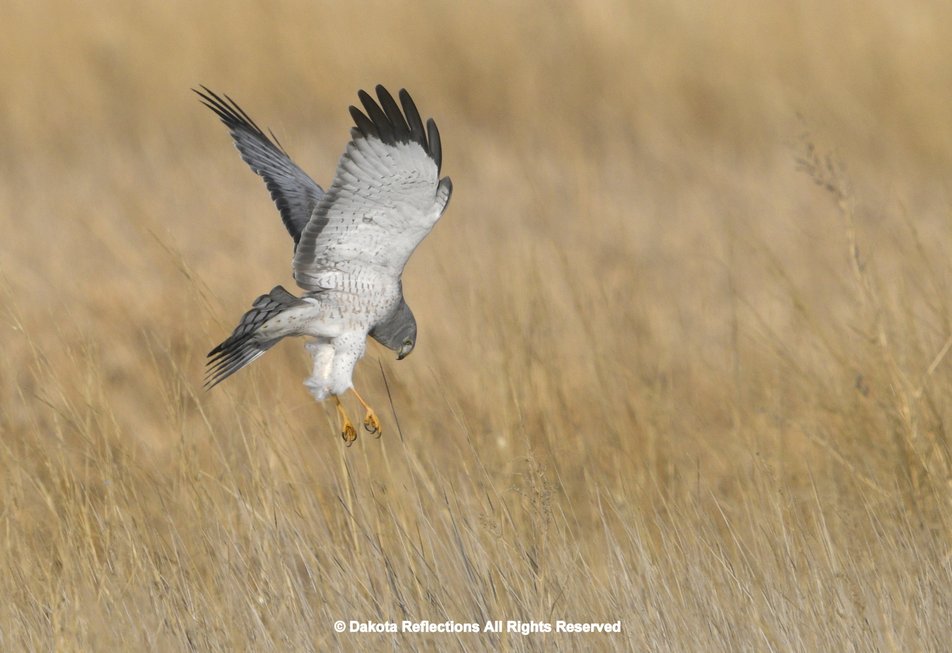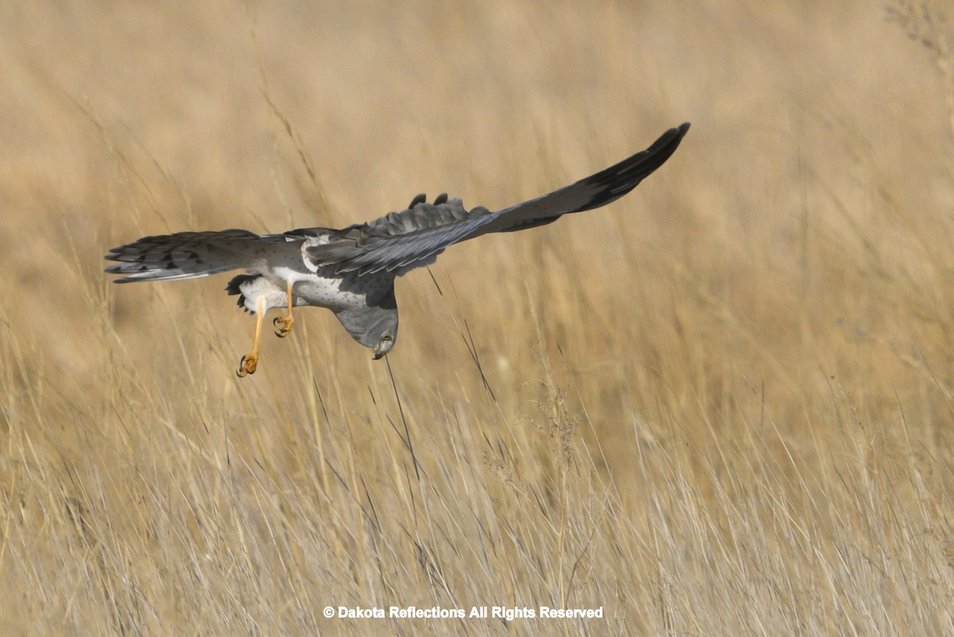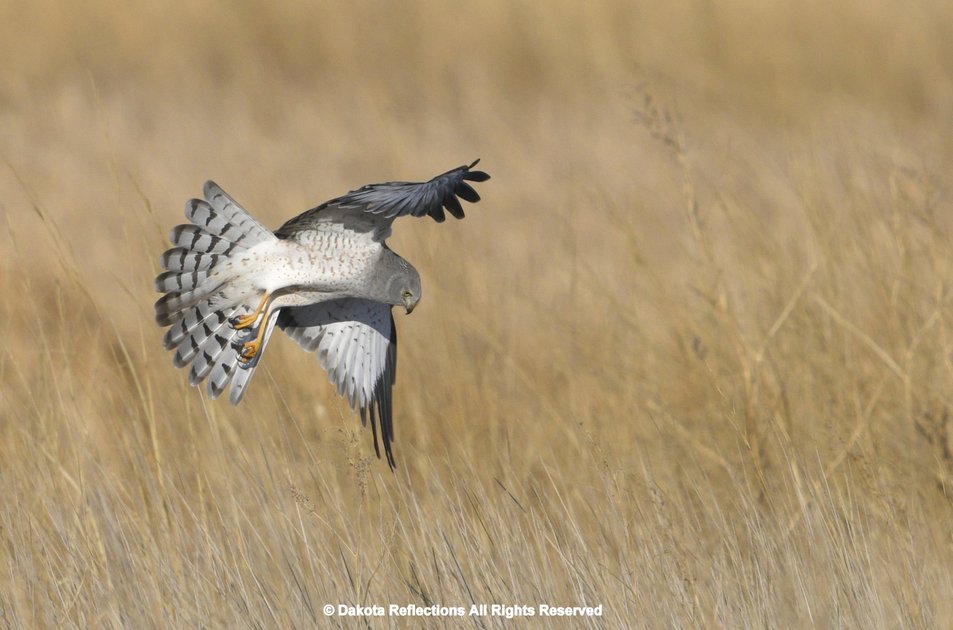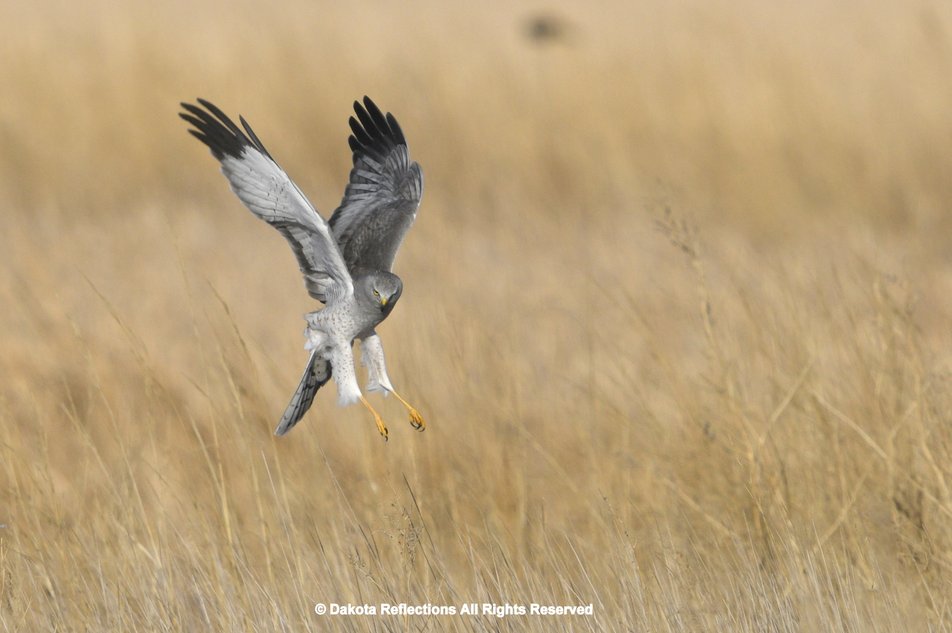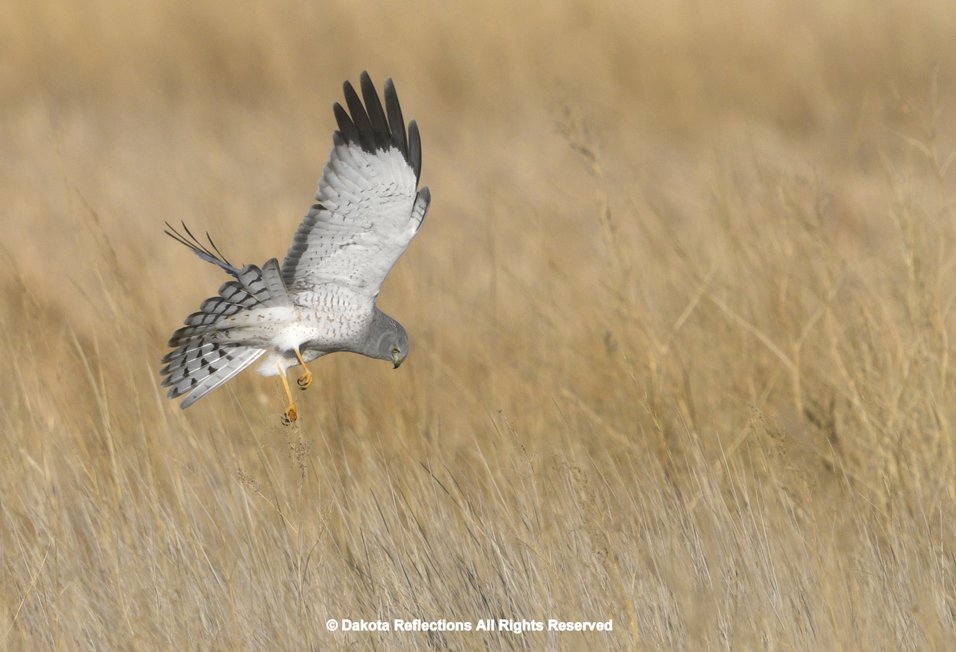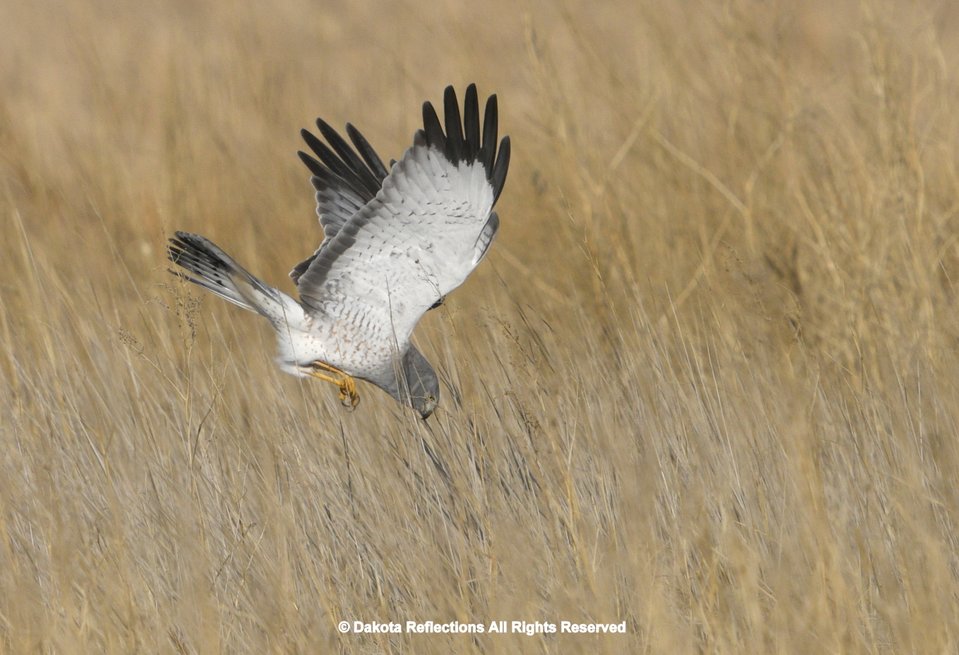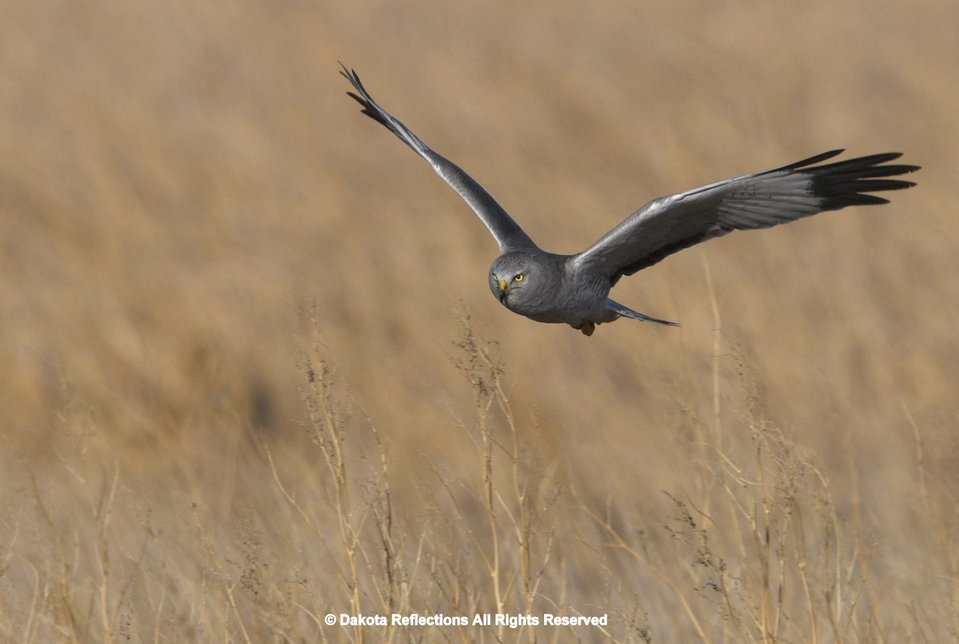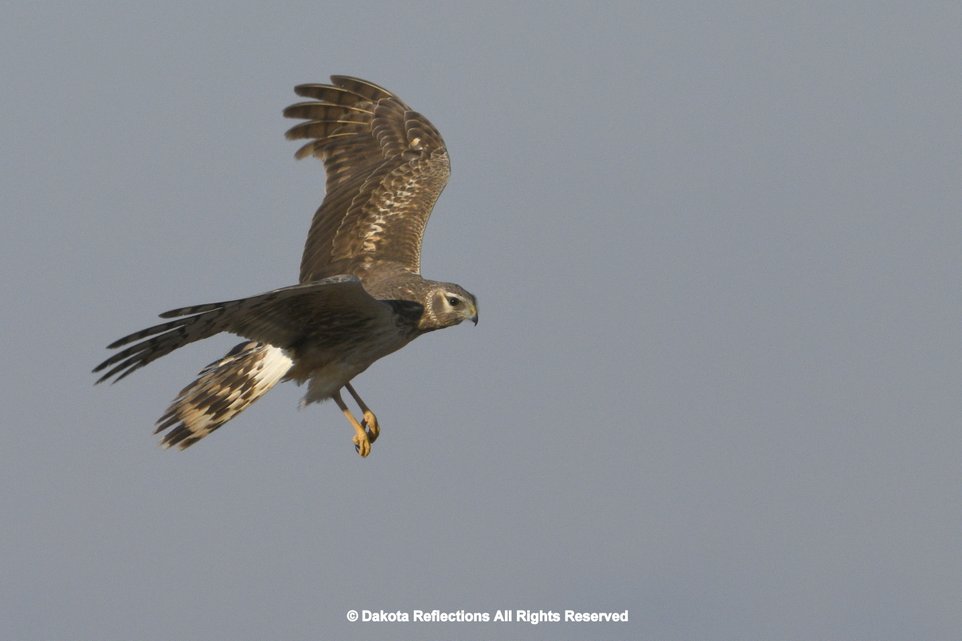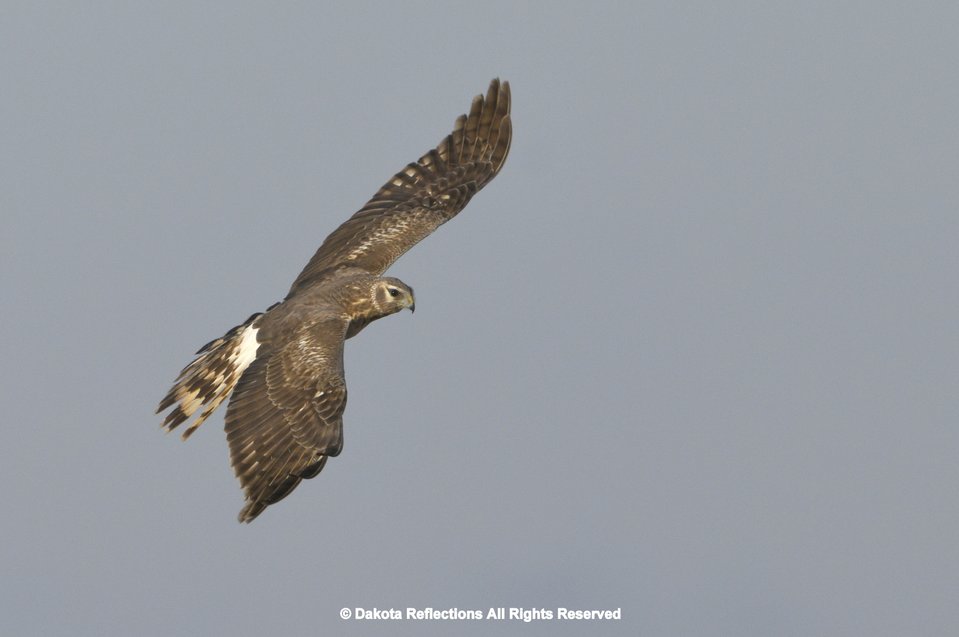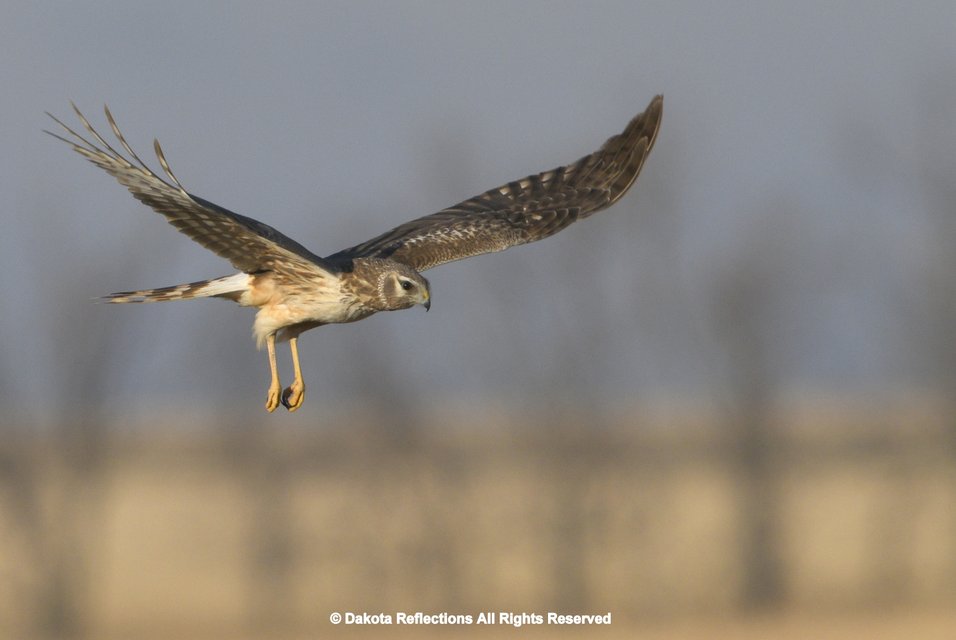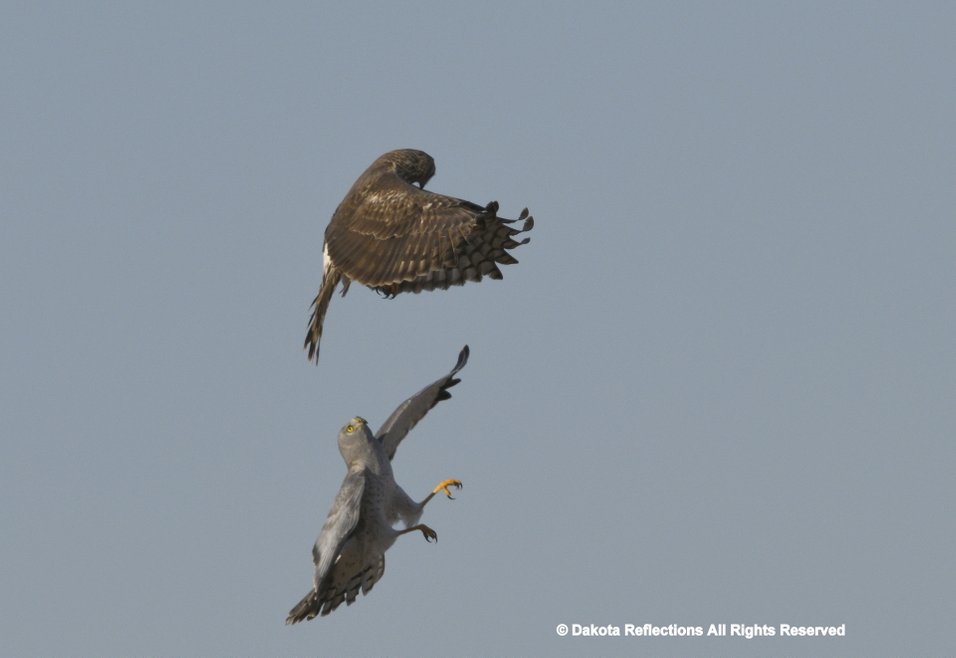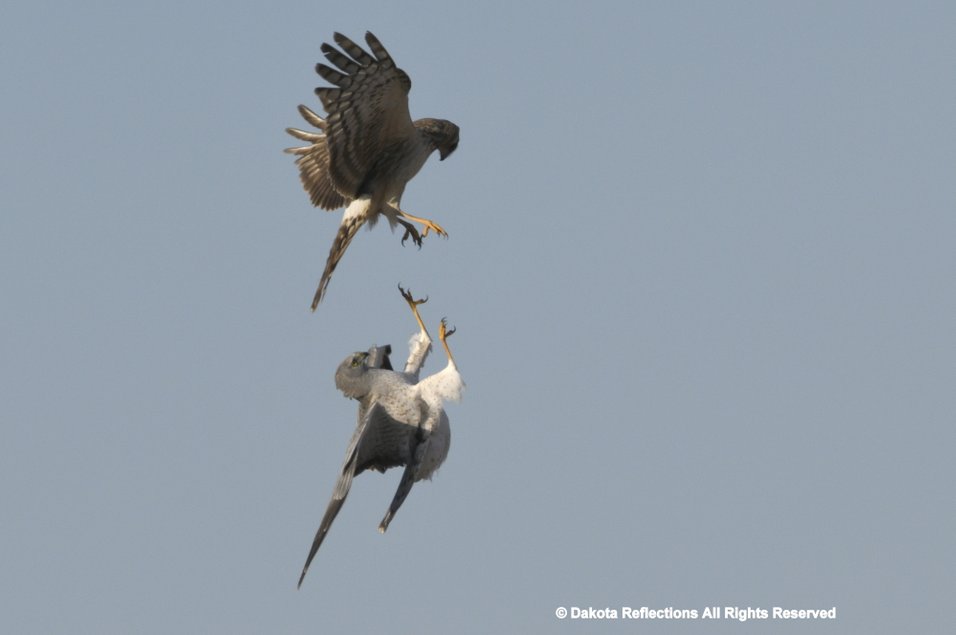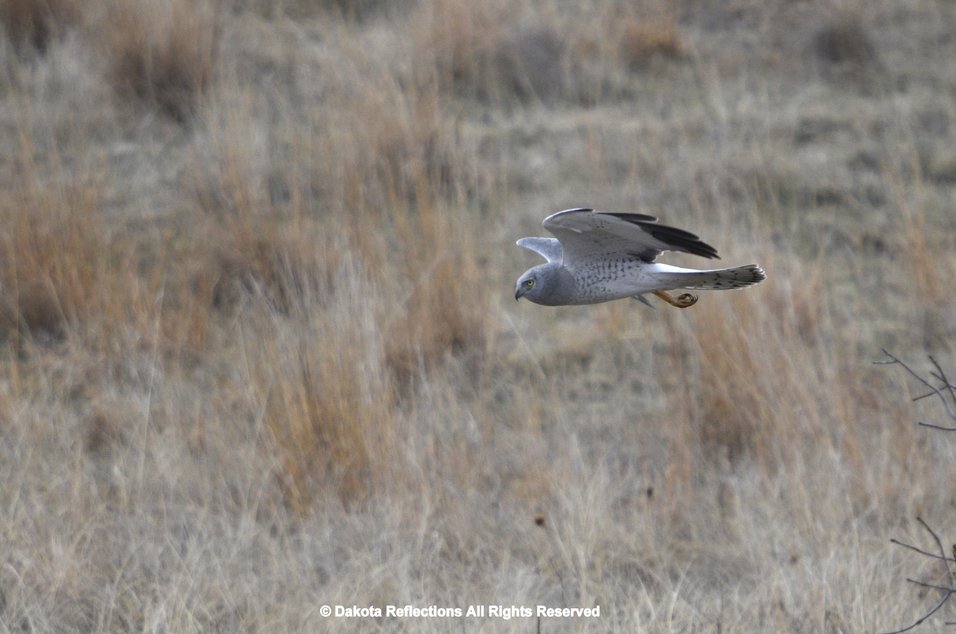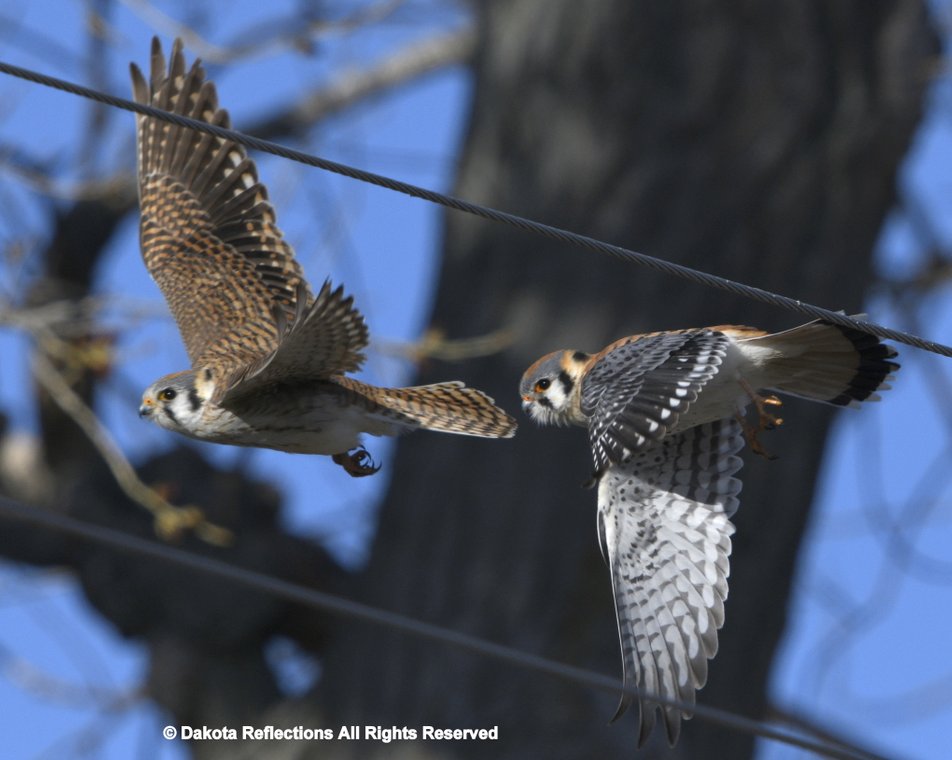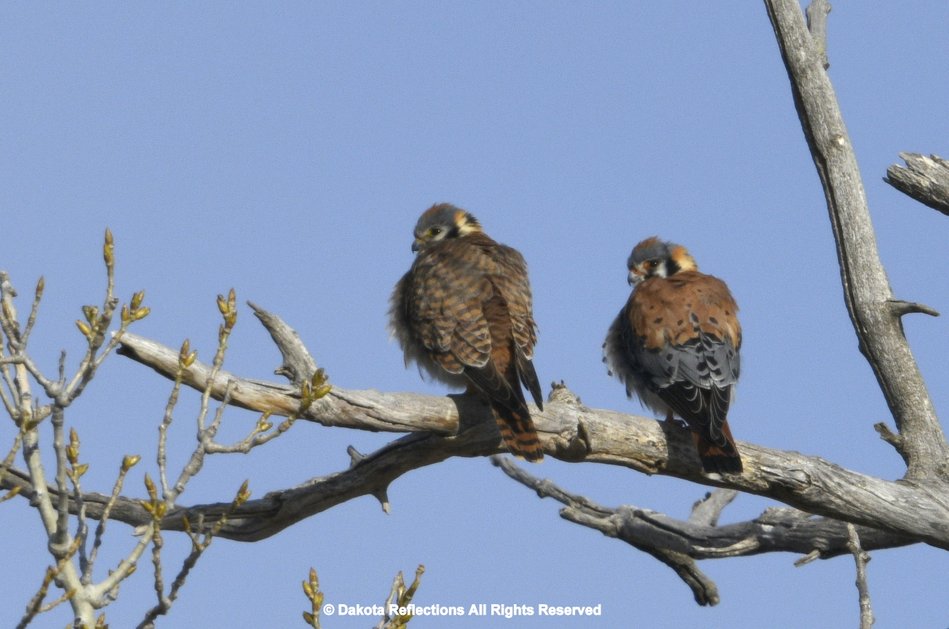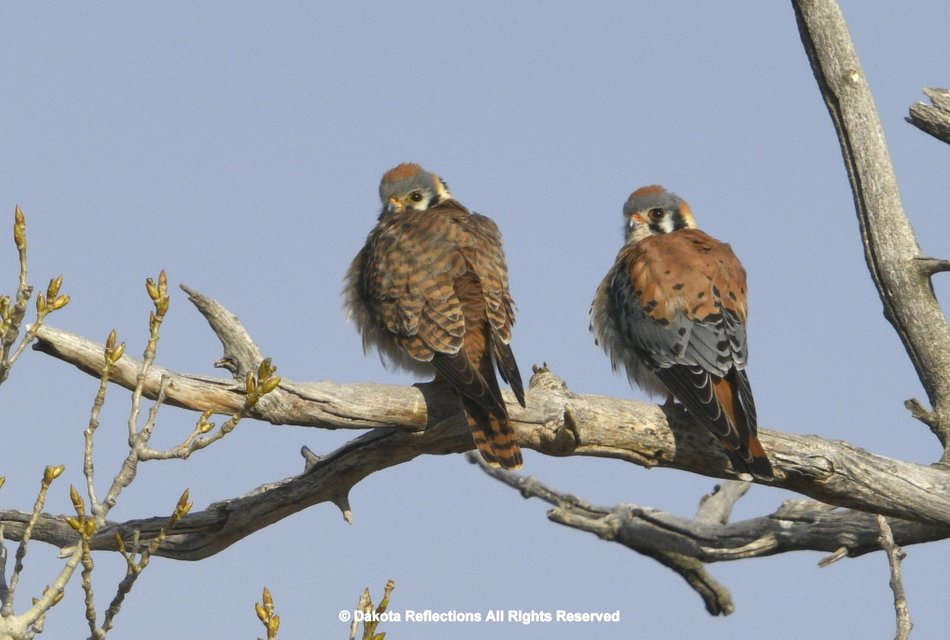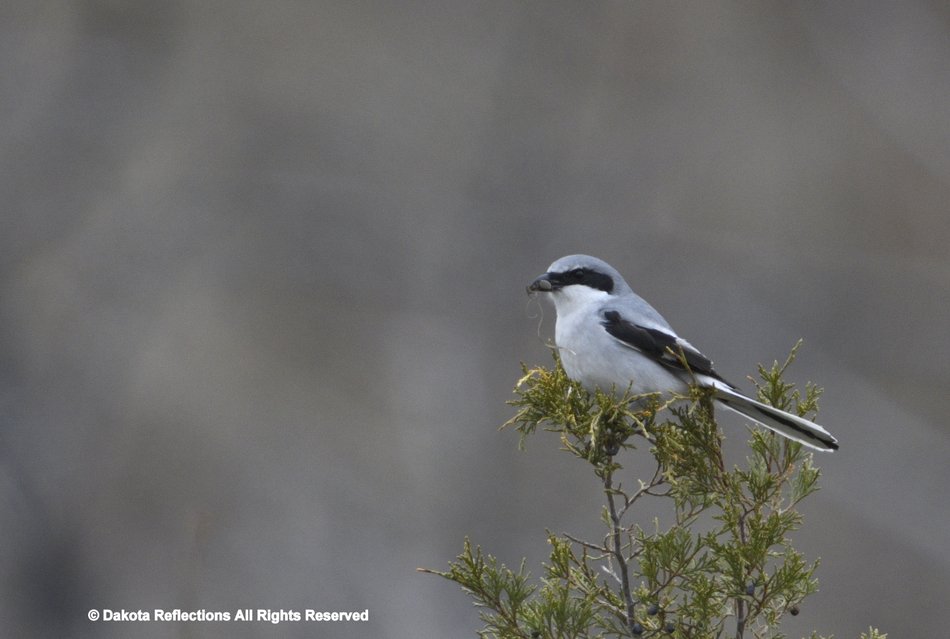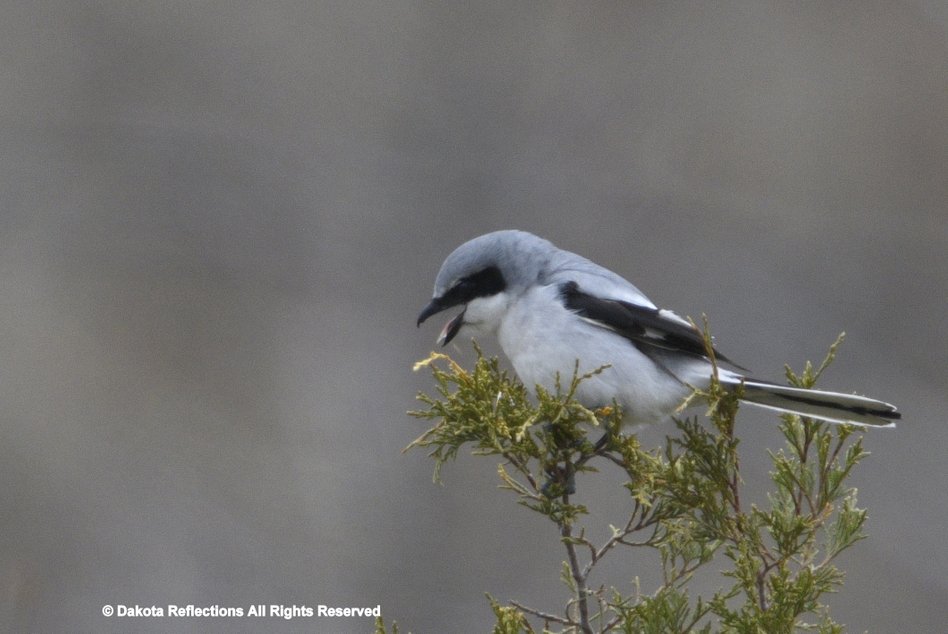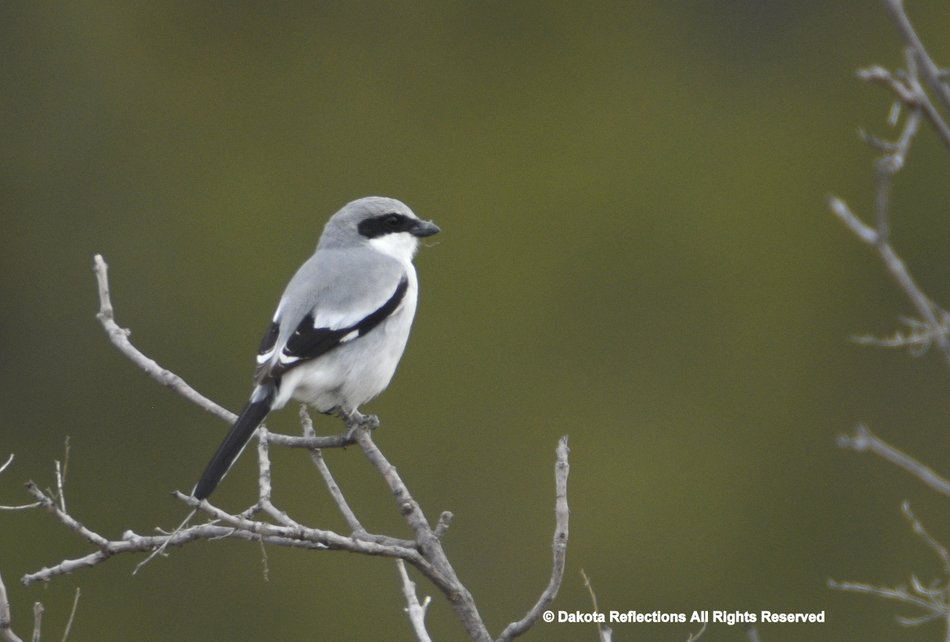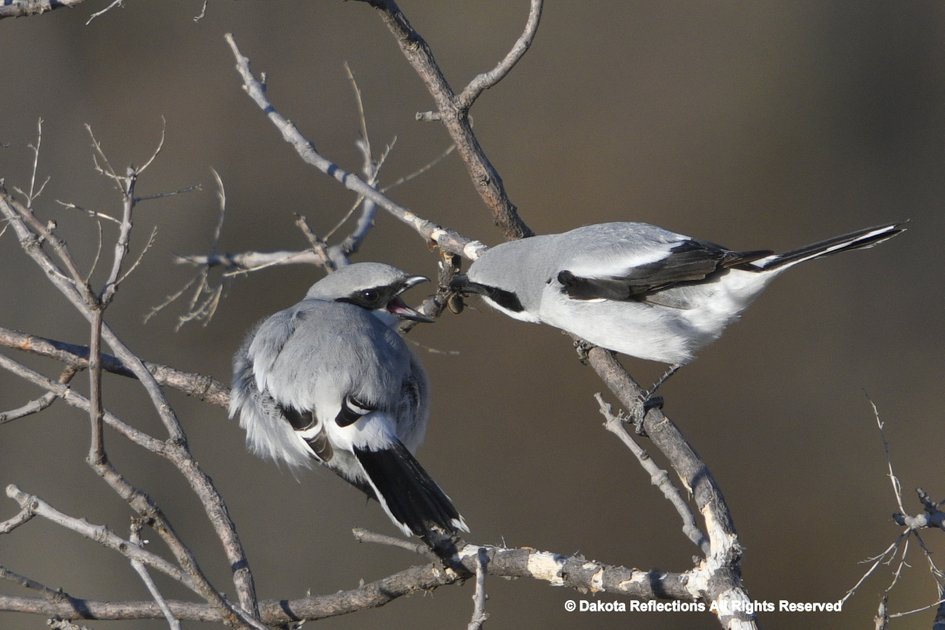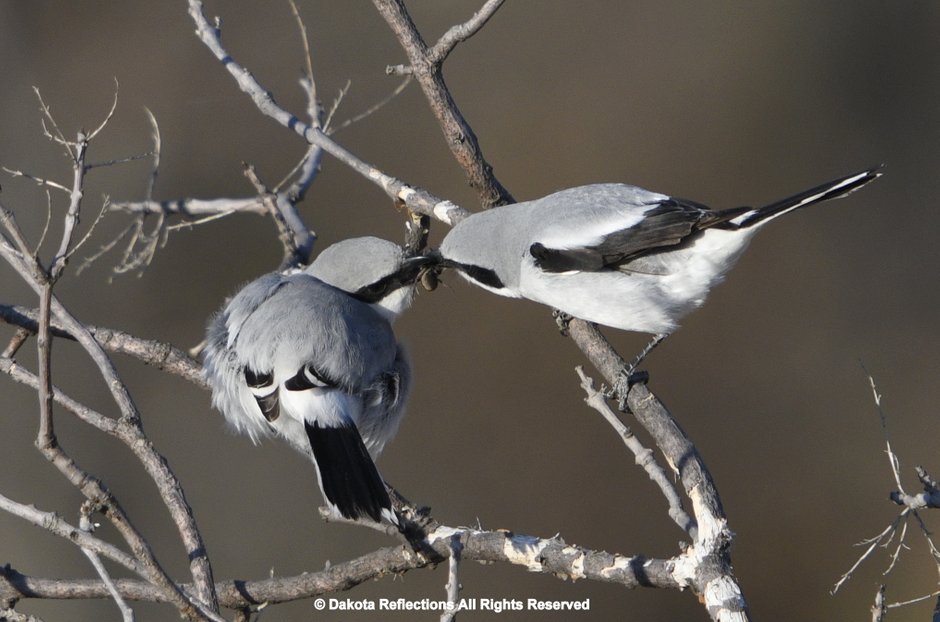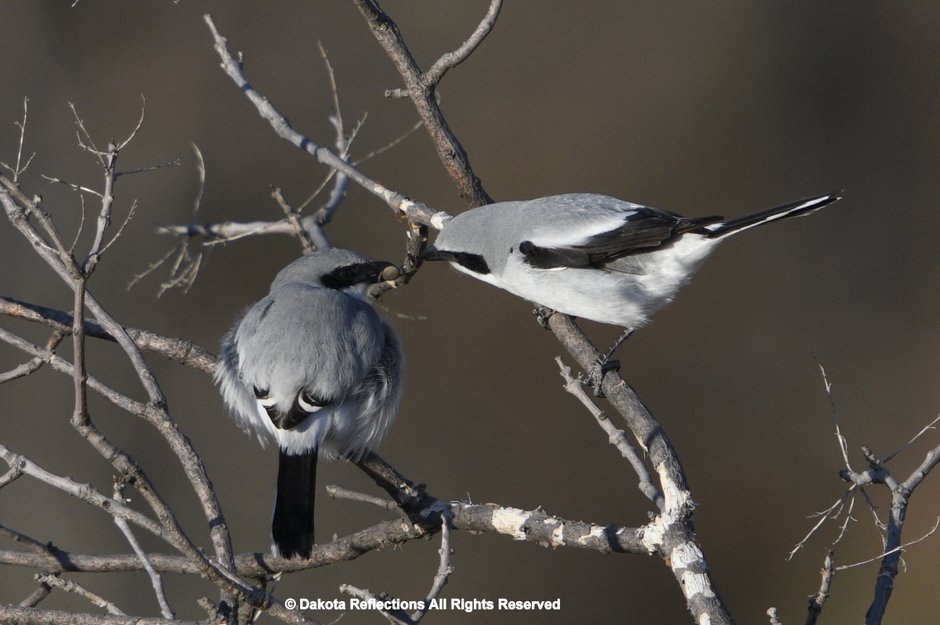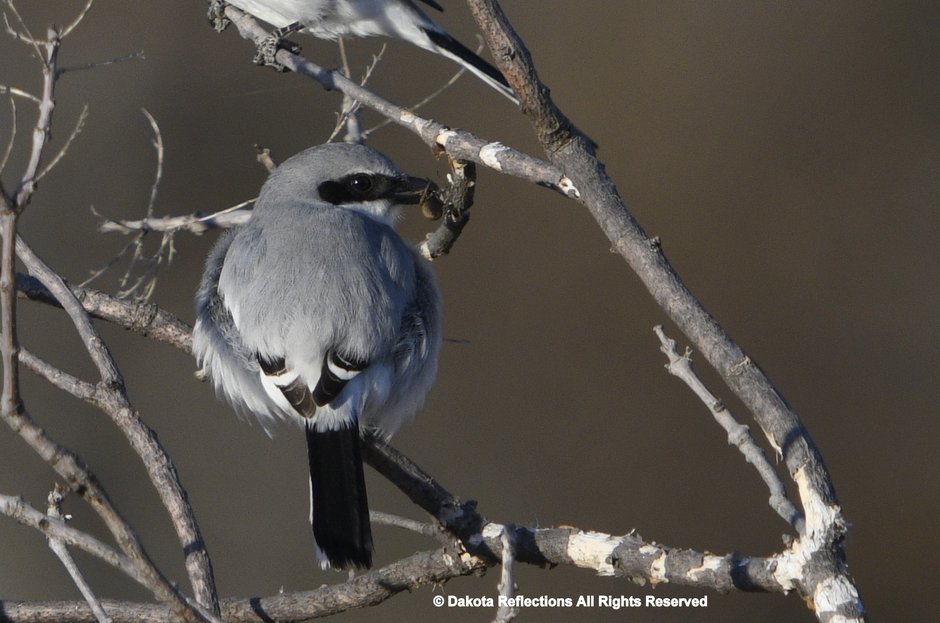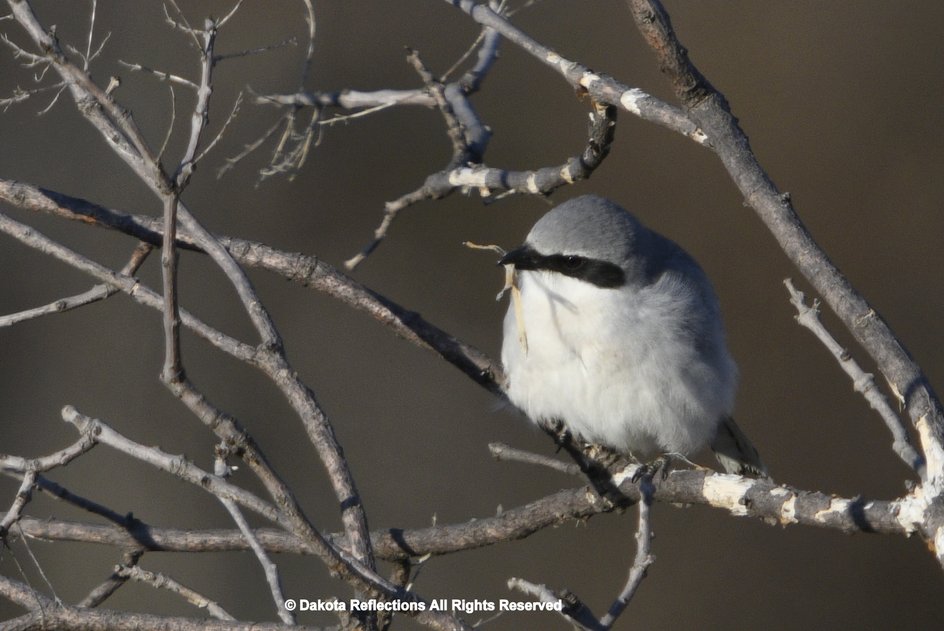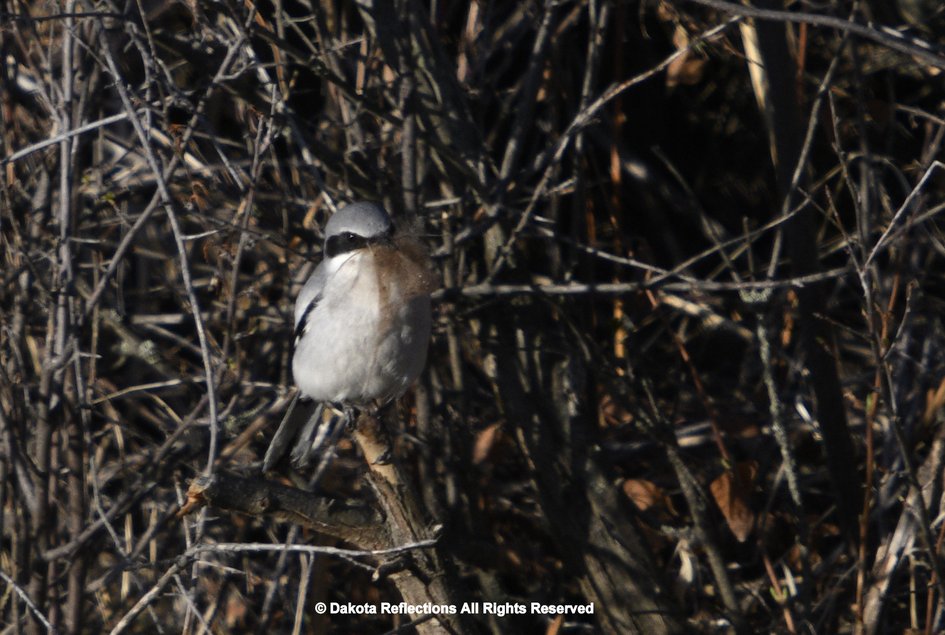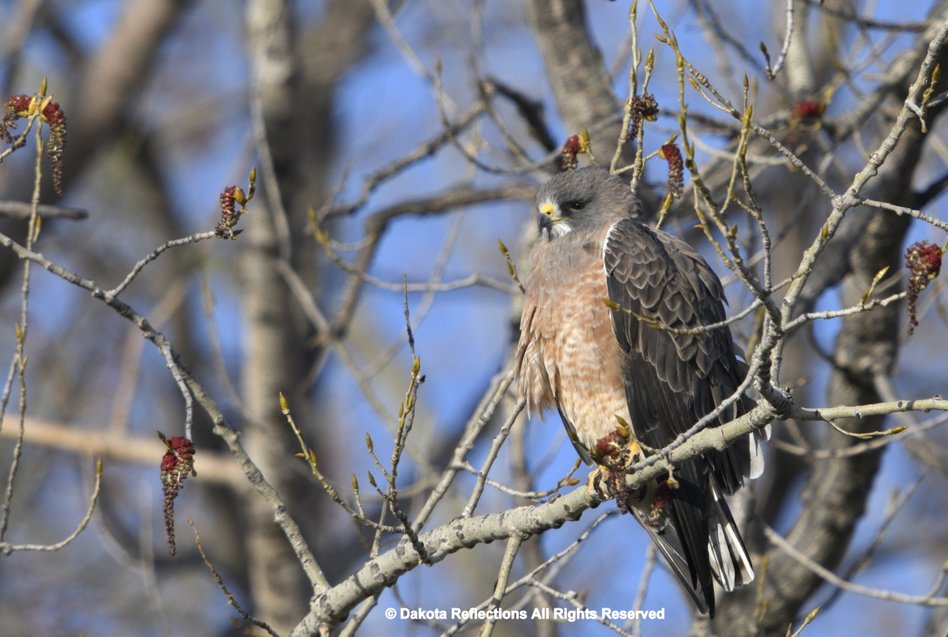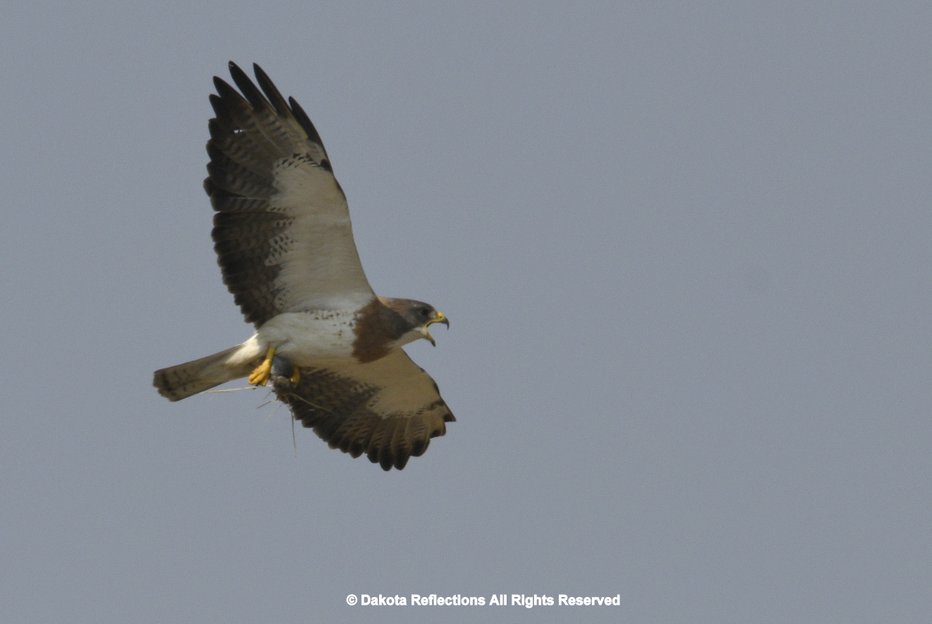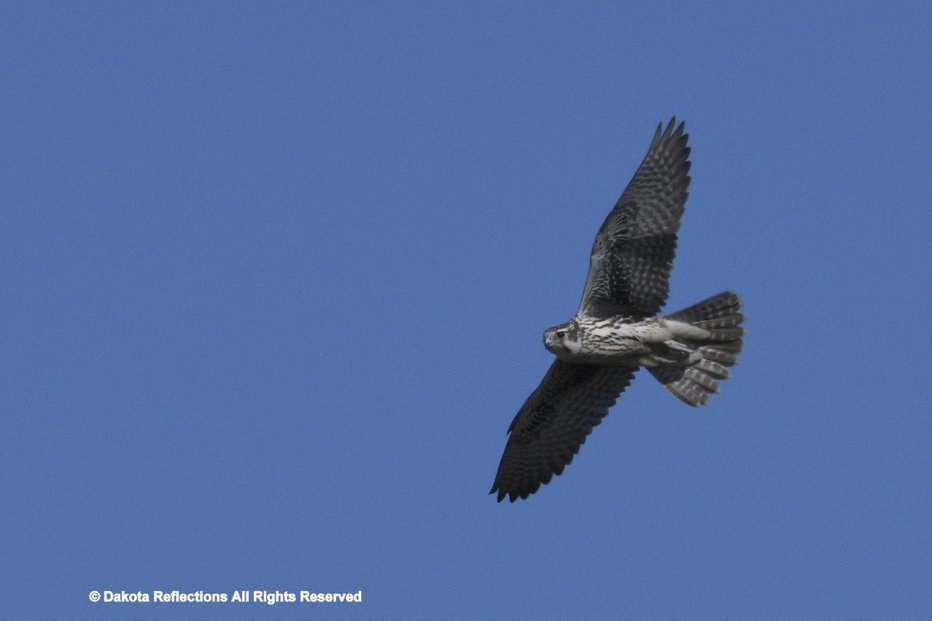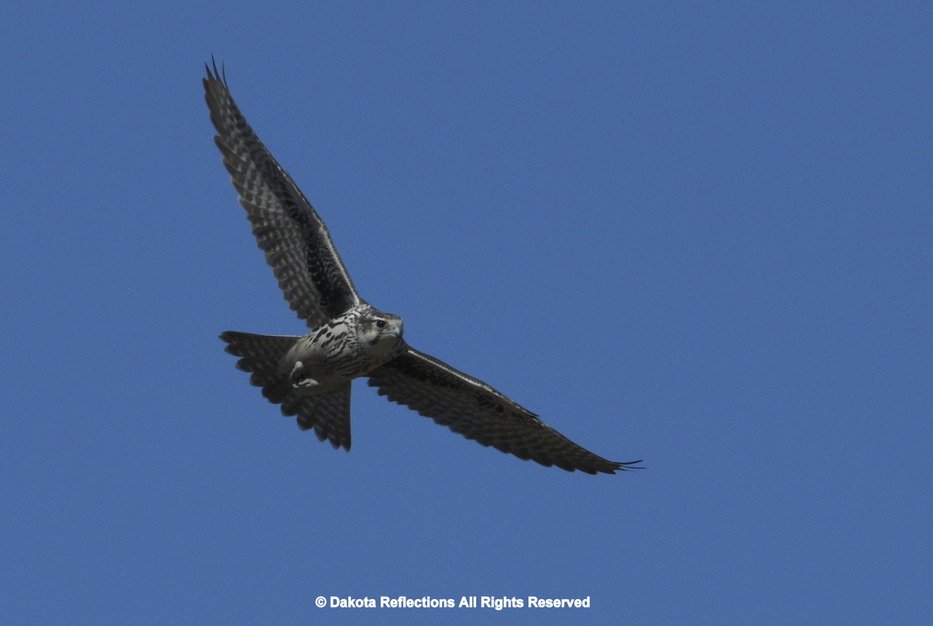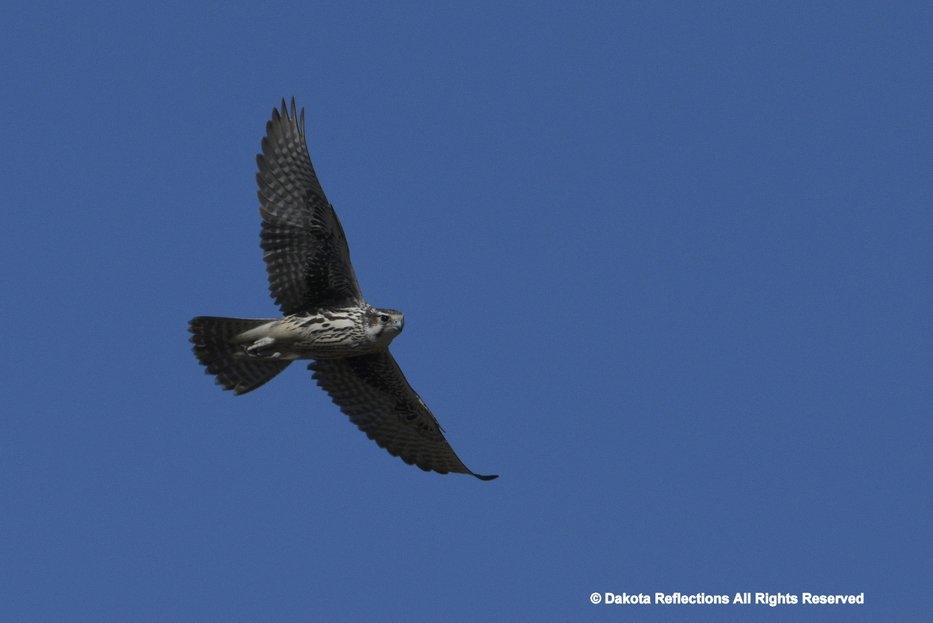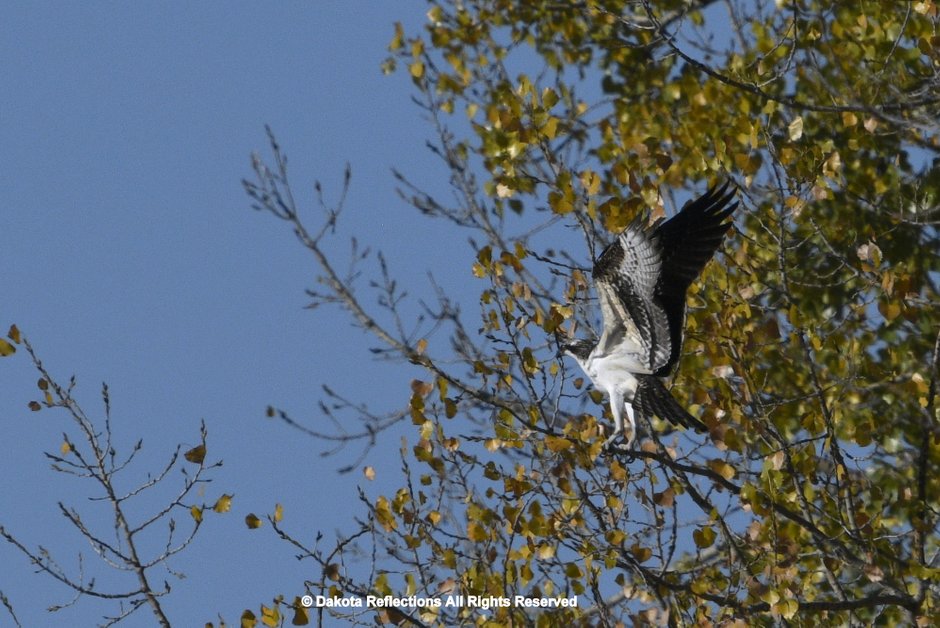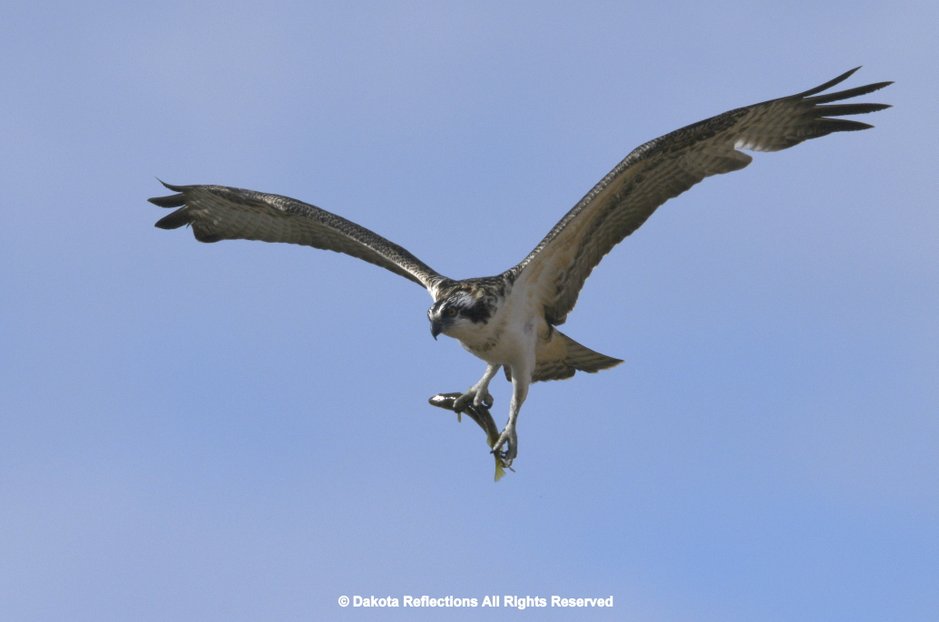Dakota Reflections
Dakota Raptors
Swainson's Hawk
Burleigh County North Dakota
Northern Plains Raptor Quiz (answers are below)
1. Which raptors have feathers on their legs down to their talons?
a. Red-tailed hawk
b. Rough-legged hawk
c. Swainson's hawk
d. American kestrel
e. Ferruginous hawk
2. Which raptors are known for their ability to hover in flight?
a. Red-tailed hawk
b. Rough-legged hawk
c. Swainson's hawk
d. American kestrel
e. Ferruginous hawk
3. Which raptor has one of the longest migrations from Argentina to North Dakota each spring?
a. Red-tailed hawk
b. Rough-legged hawk
c. Swainson's hawk
d. American kestrel
e. Ferruginous hawk
4. Which raptor in commonly referred to as the "chicken hawk"?
a. Red-tailed hawk
b. Rough-legged hawk
c. Swainson's hawk
d. American kestrel
e. Ferruginous hawk
Red-tailed hawk (Buteo jamaicensis)
Red-tailed Hawk
Burleigh County North Dakota
Red-tailed Hawk
LaMoure County North Dakota
Red-tailed Hawk with Mouse
Burleigh County North Dakota
Red-tailed Hawk
Burleigh County North Dakota
Red-tailed Hawk
Burleigh County North Dakota
Krider version of Red-tailed Hawk
Leaping Upward to Initiate Flight
Burleigh County North Dakota
The red-tailed hawk is a common and widespread hawk. This hawk has a great variety of appearances and differs with geography. There are five races of red-tails: western, eastern, Fuertes, Florida and Harlan's. Western red-tails are found in the Pacific Northwest and the Eastern race extends to the northern Great Plains.
The red-tailed hawk is frequently seen during the summer in the northern plains. This hawk’s breeding range is largely in Canada but also includes Alaska, North and South Dakota, Minnesota, Montana and parts of New England and the eastern United States. They winter in most of the United States except the northern plains states. Commonly called a “chicken hawk”, the red-tailed hawk usually eats small mammals but also will attack birds and snakes. You are most likely to see the “red-tail” on powerline posts, hay bales or occasionally on fence posts. I have seen the hawk listen intently then pounce to the ground and come up with an unfortunate mouse.
The estimated population of red-tails in the United States is 1 million. They are monogamous and will often return to the same breeding area year after year. Sexual maturity occurs at 2 years of age. Males will attempt a courtship flight display with females before mating.
Many falconers have red-tailed hawks as their hunting companions due to the intelligent, social and healthy nature of these hawks.
In flight one of the best identifying features is the dark marks on the front underwing. Adults show a red tail and juvenile have two-toned upper wings.
Length averages 19 inches, wingspan 49 inches and weighs 2 ½ pounds with large red-tails up to 3 1/3 pounds.
The Krider's version is a white morph of the Eastern red-tail with a nearly all white head and underparts
Swainson’s Hawk (Buteo swainsoni)
Swainson's Hawk
Burleigh County North Dakota
Swainson's Hawk
Burleigh County North Dakota
Swainson's Hawk Reaching for a Mouse
Burleigh County North Dakota
Female Swainson's Hawk
Calling for her Mate
Females have brown head, males have gray heads
Swainson's Hawk
Burleigh County North Dakota
Swainson's Hawk
Burleigh County North Dakota
Swainson's Hawk with the Mouse
Burleigh County North Dakota
Female Swainson's Hawk
Burleigh County North Dakota
Swainson’s hawks have one of the longest migrations of any raptor and will travel from their wintering range in Argentina all the way to their nesting areas in the northern plains and southern Canada. This round trip can amount to 6,000 miles.
Three age groups are seen: adult, one-year old and juvenile. Females are larger than males. Color varies from light-morph, rufous-morph to dark-morph. The Swainson’s hawk is one of the largest raptors. They breed on open areas and prairies of western states from Texas to North Dakota and over to California and western states.
Length averages 19 inches, wingspan 51 inches and weight nearly 2 pounds although some Swainson’s will weigh nearly 3 pounds.
Key recognition features on the classic adult are the red bib on the upper chest with on the unmarked white belly and a two-toned underwing with a pale wing front. A white throat patch may also be seen. The rufous morph has a rufous belly and red markings on the pale front underwing. The dark morph has all dark body and underwings.
Rough-legged hawk (Buteo lagopus)
Rough-legged Hawk
Burleigh County North Dakota
Rough-legged Hawk
Burleigh County North Dakota
Rough-legged Hawk
Burleigh County North Dakota
Rough-legged Hawk
Burleigh County North Dakota
The rough-legged hawk can be seen in southern Canada and northern states during the winter months as they migrate south from their summer Arctic breeding grounds. This is a substantial hawk with females larger than males. Feathers cover the legs to provide insulation in the hawk’s cold range. Six plumage types are seen: adult male, female and juvenile of either dark or light morphs.
Light morphs predominate in the west while dark morphs amount to 25 to 40 percent in the east.
Length averages 21 inches, wingspans 53 inches and weighs 2.2 pounds with large rough-legged hawks weighing 3 pounds.
The rough-legged hawk has a distinctive wing pattern of dark carpal patches on the underwings and tail feathers with a white edge, followed by a dark and, the narrow bands of white and dark. Rough-legged hawks can hover for a short period of time, a feature that distinguishes it from other hawks. The American kestrel, however, excels in hovering.
Ferruginous hawk (Buteo regalis)
Ferruginous Hawk
Light Morph
Burleigh County North Dakota
Ferruginous Hawk
Dark Morph
Burleigh County North Dakota
Ferruginous Hawk
Light Morph
Burleigh County North Dakota
Ferruginous Hawk
Dark Morph
Burleigh County North Dakota
Ferruginous hawks are named after their rust-colored (ferruginous) legs. They and the rough-legged hawk are the only hawks with leg feathers which extend down to their toes. The ferruginous hawk is the largest hawk in North America with females are larger than males. Four types can be seen: juvenile and adult of light and dark morphs. Dark morphs are uncommon and amount to 10% of this hawk. They hunt day and night by using a variety of techniques including ground or aerial attack and can hover over their prey. Ferruginous Hawks prefer to eat small mammals: ground squirrels, prairie dogs, gophers and rabbits. They will occasionally eat amphibians, reptiles, insects, and birds.
Ferruginous hawks have a much shorter migration than broad-winged and Swainson’s hawks. Ferruginous hawks winter in southern United States and Central America.
Length averages 23 inches, wingspan 56 inches and weight 3 ½ pounds although some Ferruginous weight up to 4 ½ pounds.
Key recognition features are long tapered wings with dark wingtips, dark feathered legs and dark eye-line light morphs. In flight, the dark legs appear to form a “V” on the belly while the white wings have black wingtips. The tail is not banded.
Ferruginous hawks are not commonly found in North Dakota compared to the more common red-tailed and Swainson’s hawks and the northern harrier. Ferruginous hawks are most frequently seen in southwestern states. Numbers have recovered from hunting and habitat loss and their conservation status was moved from Near Threatened to Least Concern status in 2008.
Cooper’s hawk (Accipiter cooperii)
Cooper's Hawk
Burleigh County North Dakota
Cooper's Hawk
Burleigh County North Dakota
The Cooper’s hawk is a small forest hawk well adapted to navigating flight among trees, making flight photography somewhat difficult. The underwings are characterized by alternating white and dark bands. The rounded tail feathers show 4 to 5 dark bands, a helpful distinguishing identification pattern.
Length averages 15 inches for males and 18 inches for females, wingspans 29 inches for males and 33 inches for females and weight 12 ounces for males and 19 ounces for females with large females weighing 24 ounces. The sharp-tailed hawk is similar in appearance but significantly smaller.
Cooper’s hawks can be found year round in most of the United States except northern and northeastern states. Migrating hawks will breed in northern states and Canada and then return to winter in southern states and Central America. They sometimes hangout by bird feeders, even in northern states during the winter, to prey on song birds.
Broad-winged Hawk (Buteo platypterus)
Broad-winged Hawk
Burleigh County North Dakota
Broad-winged Hawk
Burleigh County North Dakota
Broad-winged hawks are not commonly seen in North Dakota. Their summer breeding range is in the eastern United States and central Canada. Their winter range is in southern Florida, Central and South America. Broad-winged hawks average 4,350 miles in their migration traveling nearly 70 miles a day. They prefer forest habitat and prey on small mammals, amphibians, and insects by swooping down from low perches in trees.
Length averages 15 inches, wingspan 34 inches and weight averages 14 ounces with large broad-winged hawks can weight up to 17 ounces.
American Kestrel (Falco sparverius)
The American Kestrel is common and widespread in North America. The kestrel is the smallest falcon in the United States. Females are slightly larger than males. Males have a rufous tail with a prominent dark band near the end tail. Females have a reddish brown tail with number dark steaks. Both have a gorgeous face with prominent mustache marks on a white face.
Length averages 9 inches, wingspan 22 inches and weigh 4 ounces with large kestrels up to 5 ounces.
Kestrels are found year round in much of the United States, Central and South America. Migrating American kestrels will breed in northern states and Canada then winter in central and southern states and Central America.
The American Kestrel likes open areas where it hunts large insects, mice and small birds from utility wires along roads. This bird nests in abandoned woodpecker nests, openings in rocks and nooks in buildings.
Northern Harrier (Circus cyaneus)
Northern harriers can be recognized from a distance by their flight pattern, low to the ground and following contours of the land. Males have largely white underwings, black wing tips and a dark gray head giving a hooded look. Females have a dark brown head, brown streaked chest and multiple lines on the underwings. Juveniles look like females except more of a rufous coloration.
Northern Harriers prefer prairie grasslands and sloughs. They nest and on the ground and, in my experience, do not perch frequently on posts or powerlines.
Northern harrier females average 19 inches in length, 46 inches in wingspan and weight 18 ounces. Males are considerably smaller and weight on average 12 ounces.
Northern harriers breed in Canada, northern, central, western states and winter in western states, Central America and northern South America.
Bald Eagle (Haliaeetus leucocephalus)
Bald Eagle
Burleigh County North Dakota
Bald Eagle
Burleigh County North Dakota
Bald Eagle
Burleigh County North Dakota
Bald Eagle
Burleigh County North Dakota
The American bald eagle is the national symbol of the United States and a sacred bird to many Native American tribes. Over hunting and widespread use of DDT resulted in catastrophic losses of bald eagles with only 412 nesting pairs identified in the 48 contiguous states in the 1950s. The bald and golden eagle protection act of 1940 began the process of recovery and DDT was banned in 1972.
The bald eagle is one of two North American eagles. Females are larger than males. Adult plumage arrives by age five years. Young bald eagles can be identified by their age by recognizing their plumage and the amount of white on their bellies and wings.
Length averages 31 inches, wingspans 80 inches and weight 9 1/2 pounds with large eagles weighing up to nearly 14 pounds.
Bald eagles live year round in Alaska, western Canada, the northern west coast and northern Rockies. Most of Canada and several northern states provide summer breeding habitat. Bald eagles winter in most western, southern and northeastern states. Most bald eagles head north through North Dakota into Canada although some will nest here along the Missouri River or near large lakes. If the Missouri River has open water during mild winters, some bald eagles will stay in North Dakota during the winter.
The bald eagle is a fish eagle and therefore prefers lake and river habitat with nearby forest for perching and nesting. Bald eagle nests are huge and can weigh nearly two tons!
The American bald eagle is an early arriver to North Dakota in the spring. Over 60 bald eagles can easily be seen in a several hour drive from Bismarck. Resting on partially frozen lake, the bald eagles feast on fish that died during the winter.
Bald eagles hunt fish but will also eat injured animals and roadkill. They nest beginning in March or early April often using the same nest every year, adding layers to it, resulting in very large nests as time goes by.
An eagle can rotate its head approximately 180 degrees in each direction. Eagles have 14 cervical vertebrae allowing for greater rotation than humans who have just 7 cervical vertebrae and can typically rotate just 70-90 degrees in either direction. Many birds can survey their entire surroundings by moving their heads and not their body, helpful when perched on a small branch!
Golden Eagle
The Golden Eagle is one of the largest and fastest raptors in North America.
Golden Eagle's diet subsists primarily on rabbits, hares, ground squirrels, and prairie dogs as opposed to the bald eagle who prefers fish.
Bald eagles are larger than golden eagles in average height and wingspan, but there isn't much difference in average weight. One way to distinguish a golden eagle from an immature bald eagle is leg plumage. A golden eagle's legs are entirely feather covered; an immature bald eagle's lower legs are bare. As seen while in flight, juvenile golden eagles have white patches at the base of the primaries; the tail is white with a distinct dark terminal band. It takes four years to acquire adult plumage. Adult golden eagles are brown with tawny on the back of the head and neck; tail faintly banded.
The Rough-legged Hawk, the Ferruginous Hawk, and the Golden Eagle are the only American raptors to have legs feathered all the way to the toes.
Adult Golden Eagles are dark brown with a golden patch on the back of the head and neck. For their first several years of life, young birds have white patches at the base of the tail and in the wings.
Golden Eagles prefer partially or completely open country, especially around mountains, hills, and cliffs. They use a variety of habitats ranging from arctic to desert, including tundra, shrublands, grasslands, coniferous forests, farmland, and areas along rivers and streams. Found year round in the western half of the U.S., they are occasionally winter in eastern states after nesting in Canada.
Other Raptors
Turkey Vulture
Burleigh County North Dakota
Prairie Falcon
Burleigh County North Dakota
Answers to Northern Plains Raptor Quiz
1. Which raptors have feathers on their legs down to their talons?
Answers- feathered legs help the hawks stay warm in very cold environments
b. Rough-legged hawk
e. Ferruginous hawk
2. Which raptors are known for their ability to hover in flight?
Answers- hovering helps in finding prey but is labor intensive and difficult for large birds
b. Rough-legged hawk
d. American kestrel
3. Which raptor has one of the longest migrations from Argentina to North Dakota each spring?
Answer- Swainson's and broad-winged hawks have long migrations
c. Swainson's hawk
4. Which raptor in commonly referred to as the "chicken hawk"?
Answer- during the early 20th century, the red-tail was hunted due to the inaccurate belief that it preyed on poultry
a. Red-tailed hawk
Moveable Necks
Raptors have 14 cervical vertebrae that allow them to turn their necks 180 degrees or more. In contrast, humans have only 7 cervical vertebrae and can rotate their heads just 70-90 degrees in either direction.
https://www.nationaleaglecenter.org/learn/glossary/
Birds, such as the red-tailed hawk, move their head to move their eyes
Neck flexion 45 degrees allows the red-tailed hawk to check the ground for prey
Neck extension 90 degrees allows the red-tailed hawk to check the sky for other predators
Neck rotation 90 degrees allows the red-tailed hawk to check the sky for prey and other predators
Neck rotation 135 degrees allows the red-tailed hawk to clean and prune feathers and check the area for prey and other predators
Neck rotation 180 degrees allows the red-tailed hawk to clean and prune feathers and check the area for prey and other predators
2019 Photos
Northern Harrier
The Hawk with an Owl-shaped Face!
A rare perched image!
Northern Harriers are the most owl-like of hawks (though they’re not related to owls). They rely on hearing as well as vision to capture prey. The disk-shaped face looks and functions much like an owl’s, with stiff facial feathers helping to direct sound to the ears.
https://www.allaboutbirds.org/guide/Northern_Harrier/overview
Red-tailed Hawk Breakfast
2020 Photographs
Red-tailed Hawks
Red-tail Hawk!
This Red-tailed Hawk was photographed in Treasure County, Montana in the valley of the Yellowstone River in January 2020 as I traveled to Yellowstone National Park!
Photo of the Day for January 18, 2020
Red-tailed Hawk
Morton County, North Dakota
May 23, 2020
Red-tailed Hawk and Orchard Oriole
McKenzie Slough, Burleigh County, North Dakota
July 24, 2020
Red-tailed Hawk
McKenzie Slough, Burleigh County, North Dakota
Photo of the Day- September 12, 2020
Red-tailed Hawk
McKenzie Slough, Burleigh County, North Dakota
September 30, 2020
Red-tailed Hawk
Burleigh County, North Dakota
October 4, 2020
Red-tailed Hawk and Common Grackle
McKenzie Slough, Burleigh County, North Dakota
Photo of the Day- October 6, 2020
Red-tailed Hawk and Common Grackle
McKenzie Slough, Burleigh County, North Dakota
October 6, 2020
Red-tailed Hawk
McLean County, North Dakota
November 6, 2020
Northern Shrikes
The northern shrike in North America is a large songbird species in the shrike family. A predatory songbird, the Northern Shrike breeds in taiga and tundra and winters in southern Canada and the northern United States. It feeds on small birds, mammals, and insects, sometimes impaling them on spines or barbed wire fences. Males and females are similar in plumage, pearly grey above with a black eye-mask and white underparts.
https://www.allaboutbirds.org/guide/Northern_Shrike/overview
https://en.wikipedia.org/wiki/Great_grey_shrike
Bald Eagles
Second-year Bald Eagle!
This bald eagle was photographed in McKenzie Slough, Burleigh County, North Dakota on March 23, 2020
Second-year Bald Eagle!
This bald eagle was photographed in McKenzie Slough, Burleigh County, North Dakota on March 23, 2020
Bald Eagle!
Burleigh County, North Dakota
April 5, 2020
Bald Eagle!
Burleigh County, North Dakota
April 5, 2020
Bald Eagle!
Burleigh County, North Dakota
April 16, 2020
Bald Eagle!
Burleigh County, North Dakota
April 16, 2020
Bald Eagle!
Burleigh County, North Dakota
Photo of the Day- April 16, 2020
Bald Eagle!
Burleigh County, North Dakota
April 16, 2020
What are you eating?
Bald Eagles!
Burleigh County, North Dakota
April 16, 2020
Bald Eagle!
Burleigh County, North Dakota
April 17, 2020
Bald Eagle!
Burleigh County, North Dakota
Photo of the Day- April 17, 2020
Bald Eagle!
Burleigh County, North Dakota
April 17, 2020
Bald Eagle
Burleigh County, North Dakota
April 17, 2020
Bald Eagle
Burleigh County, North Dakota
April 19, 2020
Bald Eagle
Long Lake National Wildlife Refuge, North Dakota
September 12, 2020
American Bald Eagle
Burleigh County, North Dakota
Photo of the Day- October 10, 2020
American Bald Eagle
Burleigh County, North Dakota
October 10, 2020
American Bald Eagle
Burleigh County, North Dakota
October 10, 2020
Striding Forward and Still Together at the End of 2020!
American Bald Eagles
Burleigh County, North Dakota
Photo of the Day- December 18, 2020
Photo of the Month December 2020
American Bald Eagles
Burleigh County, North Dakota
December 18, 2020
American Bald Eagles
Burleigh County, North Dakota
December 18, 2020
American Bald Eagles
Burleigh County, North Dakota
December 18, 2020
Golden Eagles
Year-round Resident!
Golden eagles are year-round residents of Theodore Roosevelt National Park. Other year-round avian species include wild turkeys, black-capped chickadees, white-breasted nuthatches, and great-horned owls.
Photograph taken on March 28, 2020
https://www.nps.gov/thro/learn/nature/birds.htm
Golden Eagle
Theodore Roosevelt National Park, North Dakota
March 29, 2020
Golden Eagles
Theodore Roosevelt National Park, North Dakota
May 11, 2020
Golden Eagle
Theodore Roosevelt National Park, North Dakota
May 11, 2020
Golden Eagles
Theodore Roosevelt National Park, North Dakota
Photo of the Day- May 11, 2020
Golden Eagles
Theodore Roosevelt National Park, North Dakota
May 11, 2020
Golden Eagles
Theodore Roosevelt National Park, North Dakota
May 11, 2020
Northern Harrier
Northern Harrier
McKenzie Slough, Burleigh County, North Dakota
Photo of the Day- April 4, 2020
Northern Harrier
Burleigh County, North Dakota
April 7, 2020
Northern Harrier
Burleigh County, North Dakota
April 7, 2020
Northern Harrier
Long Lake National Wildlife Refuge, North Dakota
September 17, 2020
Northern Harrier
Long Lake National Wildlife Refuge, North Dakota
September 17, 2020
Northern Harrier
Long Lake National Wildlife Refuge, North Dakota
September 17, 2020
American Kestrel
(for more photos- please see American Kestrel page in Dakota Region tab)
American Kestrel
Long Lake National Wildlife Refuge, North Dakota
April 5, 2020
American Kestrel
Long Lake National Wildlife Refuge, North Dakota
April 7, 2020
American Kestrel
Long Lake National Wildlife Refuge, North Dakota
April 7, 2020
American Kestrel
Burleigh County, North Dakota
April 22, 2020
American Kestrel
Burleigh County, North Dakota
April 22, 2020
American Kestrel
Burleigh County, North Dakota
April 22, 2020
Curved tree bud is shaped like his beak and talons!
American Kestrel
Theodore Roosevelt National Park, North Dakota
May 11, 2020
Females are larger than Males!
American Kestrel
Theodore Roosevelt National Park, North Dakota
May 11, 2020
Got an Itch!
American Kestrel
Theodore Roosevelt National Park, North Dakota
May 11, 2020
Still have an Itch!
American Kestrel
Theodore Roosevelt National Park, North Dakota
May 11, 2020
Caught a Mouse!
American Kestrel
Theodore Roosevelt National Park, North Dakota
May 11, 2020
Eating with Mouth Open!
American Kestrel
Theodore Roosevelt National Park, North Dakota
May 11, 2020
More food than meets the eye!
American Kestrel
Theodore Roosevelt National Park, North Dakota
May 11, 2020
Nourishment!
American Kestrel
Theodore Roosevelt National Park, North Dakota
May 11, 2020
You can see the Kestrel's tongue!
American Kestrel
Theodore Roosevelt National Park, North Dakota
May 11, 2020
Swainson's Hawks
Swainson's Hawk
Burleigh County, North Dakota
April 22, 2020
Swainson's Hawks
Burleigh County, North Dakota
May 6, 2020
Swainson's Hawk
Burleigh County, North Dakota
May 10, 2020
Swainson's Hawks
Kidder County, North Dakota
June 27, 2020
Swainson's Hawk
Kidder County, North Dakota
Photo of the Day- June 27, 2020
Swainson's Hawk
Kidder County, North Dakota
June 27, 2020
Swainson's Hawk
Burleigh County, North Dakota
July 16, 2020
Swainson's Hawk
Burleigh County, North Dakota
September 1, 2020
Swainson's Hawk
Burleigh County, North Dakota
September 3, 2020
Swainson's Hawk
Burleigh County, North Dakota
September 3, 2020
Swainson's Hawk
Burleigh County, North Dakota
September 3, 2020
Great Horned Owls
(for more photos- please see Owl page in Dakota Region tab)
Great Horned Owls
Oliver County, North Dakota
April 26, 2020
The great horned owl, also known as the tiger owl or the hoot owl, is a large owl native to the Americas. It is an extremely adaptable bird with a vast range and is the most widely distributed true owl in the Americas. Its primary diet is rabbits and hares, rats and mice, and voles, although it freely hunts any animal it can overtake, including rodents and other small mammals, larger mid-sized mammals, birds, reptiles, amphibians, and invertebrate. The great horned owl is one of the earliest nesting birds in North America, often laying eggs weeks or even months before other raptorial birds. Great horned owls are some of the earliest-breeding birds in North America, seemingly in part because of the lengthy nightfall at this time of year and additionally the competitive advantage it gives the owl over other raptors. In most of North America, courtship is from October to December and mates are chosen by December to January. Nests with open access, considering this birds large size, as opposed to enclosed with surrounding branches, are preferred. Like all owls, great horned owls do not build their own nest. Great horned owls tend to examine an area for an abandoned nest, generally from larger birds like hawks, and take over the nest for raising their own young. They nest in a wider variety of nest sites than any other North American bird. Many nests are in cavernous hollows of dead trees or their branches, especially in southern states in large trees along the edge of old-growth lots. In mountainous or hilly areas, especially in canyons of the southwest and Rocky Mountains, cliff ledges, small caves, and other sheltered depressions may be used. Owls living in prairie country, in the absence of other animals' nests, riparian trees or non-native trees or the bare ground of tree hollows or man-made structures, will use boulders, buttes, railroad cuts, low bushes and even the bare ground as nest sites. There are usually 2 eggs per clutch, but clutches range in size from 1 to 6 eggs (over 3 is uncommon, over 4 is very rare), depending on environmental conditions. The young weigh around 34.7 g (1.22 oz) at birth on average and can gain an average of about 33.3 g (1.17 oz) a day for the first four weeks of life, with typical weights in the range of 800 or 1,000 g (1.8 or 2.2 lb) by 25–29 days for males and females, respectively. When first hatched the young are covered in whitish gray down, with some brownish about the wings. Gradually the soft juvenal downy plumage comes through the down, being typically a cinnamon-buff color, but with variable hues predicting the eventual color of the mature owls. The extent of down gradually diminishes, developing mature-looking plumage by late summer, although many first-year birds still have scattered bits of down into autumn. By late autumn, first-year birds look similar to adults but with a slightly warmer, reddish tinge, less well developed ear tufts and a smaller white throat patch. The nestling owls develop mostly in behavior between two weeks and two months of age, in which time they adapt the ability to defend themselves, grasp foods and climb. Vocally, the young are able to exert weak chips while still in the egg, developing into a raspy chirp shortly after hatching. The calls of the young increase rapidly in intensity, pitch and character, some juvenile males mimicking their father's hooting in fall but usually they conclude with various odd gurgling notes. The earliest competent hooting by juvenile owls is not until January. Young owls move onto nearby branches at 6 weeks and start to fly about a week later. However, the young are not usually competent fliers until they are about 10 to 12 weeks old. The age at which the young leave the nest is variable based on the abundance of food.
https://en.wikipedia.org/wiki/Great_horned_owl
Great Horned Owls
Oliver County, North Dakota
April 26, 2020
Great Horned Owls
Oliver County, North Dakota
April 26, 2020
Great Horned Owls
Oliver County, North Dakota
April 26, 2020
Great Horned Owls
Oliver County, North Dakota
April 26, 2020
Great Horned Owls
Oliver County, North Dakota
April 26, 2020
Great Horned Owls
Oliver County, North Dakota
Photo of the Day- April 26, 2020
Great Horned Owls
Oliver County, North Dakota
April 26, 2020
Great Horned Owls
Oliver County, North Dakota
April 26, 2020
Great Horned Owls
Oliver County, North Dakota
April 26, 2020
Great Horned Owls
Oliver County, North Dakota
April 26, 2020
Great Horned Owls
Oliver County, North Dakota
April 26, 2020
Great Horned Owls
Oliver County, North Dakota
April 26, 2020
Great Horned Owls
Oliver County, North Dakota
April 26, 2020
Cooper's Hawk
Cooper's Hawk
Burleigh County, North Dakota
June 4, 2020
Cooper's Hawk
Burleigh County, North Dakota
June 4, 2020
Cooper's Hawk
Burleigh County, North Dakota
June 4, 2020
Cooper's Hawk
Burleigh County, North Dakota
June 4, 2020
Cooper's Hawk
Burleigh County, North Dakota
June 4, 2020
Merlin
Merlin
Theodore Roosevelt National Park, North Dakota
July 25, 2020
Merlin
Fairview Cemetery, Burleigh County, North Dakota
Photo of the Day- September 10, 2020
Merlin
Fairview Cemetery, Burleigh County, North Dakota
September 10, 2020
Turkey Vulture
Turkey Vulture
McKenzie Slough, Burleigh County, North Dakota
September 12, 2020
Rough-legged Hawk
Rough-legged Hawk
Long Lake National Wildlife Refuge, North Dakota
November 6, 2020
Rough-legged Hawk
Long Lake National Wildlife Refuge, North Dakota
November 6, 2020
Rough-legged Hawk
Long Lake National Wildlife Refuge, North Dakota
November 6, 2020
2021 Photographs
American Bald Eagles
Going Fishing!
American Bald Eagle
Missouri River, McLean County, North Dakota
Photo of the Day- January 5, 2021
Going Fishing!
American Bald Eagle
Missouri River, McLean County, North Dakota
Photo of the Day- January 5, 2021
American Bald Eagle
Missouri River, McLean County, North Dakota
Photo of the Day- January 6, 2021
Our American symbol almost went extinct in the 1950s, down to only 412 nesting pairs in the 48 contiguous states due to pollution, pesticides and illegal shooting. DDT thinned their egg shells most pairs became sterile. The eagles are now back and doing very well!
American Bald Eagle
Missouri River, McLean County, North Dakota
January 6, 2021
American Bald Eagle
Missouri River, McLean County, North Dakota
January 6, 2021
American Bald Eagle
Missouri River, McLean County, North Dakota
January 6, 2021
American Bald Eagle
Missouri River, McLean County, North Dakota
January 6, 2021
American Bald Eagle
Missouri River, McLean County, North Dakota
January 6, 2021
American Bald Eagle
Missouri River, McLean County, North Dakota
January 6, 2021
American Bald Eagle
Missouri River, McLean County, North Dakota
January 6, 2021
American Bald Eagle
Missouri River, McLean County, North Dakota
January 6, 2021
American Bald Eagles
Missouri River, McLean County, North Dakota
January 6, 2021
American Bald Eagle
Missouri River, McLean County, North Dakota
January 6, 2021
American Bald Eagle
Missouri River, McLean County, North Dakota
January 11, 2021
Together!
American Bald Eagles
Missouri River, McLean County, North Dakota
January 11, 2021
American Bald Eagles become mature at 5 years of age. Depending on their luck, they may remain as a couple for the next 20 years. Females are usually a third larger than males which helps them when protecting their nests. Sleek males are good hunters.
Fish in Sight!
Bald Eagle
Missouri River, McLean County, North Dakota
January 16, 2021
Got It!
Bald Eagle
Missouri River, McLean County, North Dakota
January 16, 2021
Lunch!
Bald Eagle
Missouri River, McLean County, North Dakota
January 16, 2021
Bald Eagle
Missouri River, McLean County, North Dakota
January 16, 2021
Landing on Ice!
Bald Eagles
Missouri River, McLean County, North Dakota
January 16, 2021
Nailed It!
Bald Eagles
Missouri River, McLean County, North Dakota
January 16, 2021
Play Date!
Bald Eagles
Missouri River, McLean County, North Dakota
January 16, 2021
Having Fun!
Bald Eagles
Missouri River, McLean County, North Dakota
Photo of the Day- January 16, 2021
Young Eagle!
American Bald Eagle
Missouri River, McLean County, North Dakota
Photo of the Day- January 23, 2021
Majestic!
American Bald Eagle
Long Lake National Wildlife Refuge, North Dakota
March 12, 2021
Young Eagle!
American Bald Eagle
Burleigh County, North Dakota
March 12, 2021
Impressive!
American Bald Eagle
Burleigh County, North Dakota
March 12, 2021
A Beautiful Raptor and a Beautiful Day in North Dakota!
American Bald Eagle
Burleigh County, North Dakota
March 12, 2021
Close Up!
American Bald Eagle
Burleigh County, North Dakota
March 13, 2021
American Bald Eagle
McKenzie Slough, Bureigh County, North Dakota
March 20, 2021
American Bald Eagle
McKenzie Slough, Bureigh County, North Dakota
March 20, 2021
American Bald Eagle
McKenzie Slough, Bureigh County, North Dakota
Photo of the Day- March 20, 2021
American Bald Eagle
Long Lake National Wildlife Refuge, North Dakota
March 20, 2021
American Bald Eagle
Long Lake National Wildlife Refuge, North Dakota
March 22, 2021
American Bald Eagles
Long Lake National Wildlife Refuge, North Dakota
March 22, 2021
American Bald Eagles
Long Lake National Wildlife Refuge, North Dakota
March 22, 2021
American Bald Eagles
Long Lake National Wildlife Refuge, North Dakota
March 22, 2021
American Bald Eagle
Long Lake National Wildlife Refuge, North Dakota
March 25, 2021
American Bald Eagle
Long Lake National Wildlife Refuge, North Dakota
March 25, 2021
American Bald Eagle
Long Lake National Wildlife Refuge, North Dakota
March 25, 2021
American Bald Eagle
Long Lake National Wildlife Refuge, North Dakota
March 25, 2021
American Bald Eagle
Long Lake National Wildlife Refuge, North Dakota
March 25, 2021
American Bald Eagle
Long Lake National Wildlife Refuge, North Dakota
March 25, 2021
American Bald Eagle
Long Lake National Wildlife Refuge, North Dakota
March 25, 2021
American Bald Eagle
Long Lake National Wildlife Refuge, North Dakota
March 25, 2020
American Bald Eagle
Long Lake National Wildlife Refuge, North Dakota
March 25, 2021
American Bald Eagle
McKenzie Slough, Burleigh County, North Dakota
March 28, 2021
American Bald Eagle
McKenzie Slough, Burleigh County, North Dakota
March 28, 2021
American Bald Eagle
Long Lake National Wildlife Refuge, North Dakota
Photo of the Day- March 28, 2021
American Bald Eagle
Long Lake National Wildlife Refuge, North Dakota
March 28, 2021
Angles!
American Bald Eagle
Long Lake National Wildlife Refuge, North Dakota
March 28, 2021
Rough-legged Hawks
Visiting from Canada!
Rough-legged Hawk
Burleigh County, North Dakota
January 23, 2021
Red-tailed Hawk
Red-tailed Hawk
Prairie County, Montana
January 28, 2021
Red-tailed Hawk (Dark Morph)
Little Missouri National Grasslands, North Dakota
March 19, 2021
Red-tailed Hawk (Dark Morph)
Little Missouri National Grasslands, North Dakota
March 19, 2021
Red-tailed Hawk
McKenzie Slough, Burleigh County, North Dakota
April 3, 2021
Red-tailed Hawk
Emmons County, North Dakota
April 13, 2021
Golden Eagles
Pearch on Railroad Grade!
Golden Eagle
Treasurer County, Montana
February 4, 2021
Pearch on Railroad Grade!
Golden Eagle
Treasurer County, Montana
February 4, 2021
Soaring!
Golden Eagle
Treasurer County, Montana
February 4, 2021
Majestic!
Golden Eagle
Treasurer County, Montana
February 4, 2021
Gliding!
Golden Eagle
Theodore Roosevelt National Park, North Dakota
March 6, 2021
Wing Angle Up to Slow Down!
Golden Eagle
Theodore Roosevelt National Park, North Dakota
March 6, 2021
Slowing Down!
Golden Eagle
Theodore Roosevelt National Park, North Dakota
March 6, 2021
Landed!
Golden Eagle
Theodore Roosevelt National Park, North Dakota
March 6, 2021
Nesting Material!
Golden Eagle
Theodore Roosevelt National Park, North Dakota
March 6, 2021
Soaring!
Golden Eagle
Theodore Roosevelt National Park, North Dakota
March 6, 2021
Shadow!
Golden Eagle
Theodore Roosevelt National Park, North Dakota
March 18, 2021
Wingspan 7.5 feet!
Golden Eagle
Theodore Roosevelt National Park, North Dakota
March 18, 2021
Talons!
Golden Eagle
Theodore Roosevelt National Park, North Dakota
March 18, 2021
Spreadeagle!
Golden Eagle
Theodore Roosevelt National Park, North Dakota
March 18, 2021
Using Beak to Grab Branch!
Golden Eagle
Theodore Roosevelt National Park, North Dakota
March 18, 2021
Nesting Material!
Golden Eagle
Theodore Roosevelt National Park, North Dakota
March 18, 2021
Nesting Material!
Golden Eagle
Theodore Roosevelt National Park, North Dakota
Photo of the Day- March 18, 2021
Soaring!
Golden Eagle
Theodore Roosevelt National Park, North Dakota
May 4, 2021
On the Nest!
Golden Eagle
Theodore Roosevelt National Park, North Dakota
May 4, 2021
Baby!
Golden Eagles
Theodore Roosevelt National Park, North Dakota
May 14, 2021
Northern Harrier
Northern Harrier
Long Lake National Wildlife Refuge, North Dakota
March 20, 2021
Northern Harrier
Theodore Roosevelt National Park, North Dakota
April 28, 2021
Northern Harrier
McKenzie Slough, Burleigh County, North Dakota
May 3, 2021
Northern Harrier
McKenzie Slough, Burleigh County, North Dakota
May 3, 2021
Northern Harrier
McKenzie Slough, Burleigh County, North Dakota
May 3, 2021
Northern Harrier
McKenzie Slough, Burleigh County, North Dakota
May 3, 2021
Northern Harrier
McKenzie Slough, Burleigh County, North Dakota
May 3, 2021
Northern Harrier
McKenzie Slough, Burleigh County, North Dakota
May 3, 2021
Northern Harrier
McKenzie Slough, Burleigh County, North Dakota
May 3, 2021
Northern Harrier
McKenzie Slough, Burleigh County, North Dakota
May 3, 2021
Northern Harrier
McKenzie Slough, Burleigh County, North Dakota
May 3, 2021
Northern Harrier
McKenzie Slough, Burleigh County, North Dakota
May 3, 2021
Northern Harrier
McKenzie Slough, Burleigh County, North Dakota
May 3, 2021
Northern Harrier
McKenzie Slough, Burleigh County, North Dakota
May 3, 2021
Northern Harrier
McKenzie Slough, Burleigh County, North Dakota
May 3, 2021
Northern Harrier
McKenzie Slough, Burleigh County, North Dakota
May 3, 2021
Northern Harrier
McKenzie Slough, Burleigh County, North Dakota
May 3, 2021
Northern Harrier
McKenzie Slough, Burleigh County, North Dakota
May 3, 2021
Northern Harrier
McKenzie Slough, Burleigh County, North Dakota
May 3, 2021
Northern Harrier
McKenzie Slough, Burleigh County, North Dakota
May 3, 2021
Northern Harrier
McKenzie Slough, Burleigh County, North Dakota
May 3, 2021
Northern Harriers
McKenzie Slough, Burleigh County, North Dakota
May 3, 2021
Northern Harriers
McKenzie Slough, Burleigh County, North Dakota
May 3, 2021
Northern Harrier
Theodore Roosevelt National Park, North Dakota
May 5, 2021
Northern Harrier
Theodore Roosevelt National Park, North Dakota
May 5, 2021
American Kestrels
American Kestrels
Burleigh County, just west of Moffit, North Dakota
April 24, 2021
American Kestrels
Theodore Roosevelt National Park, North Dakota
May 4, 2021
American Kestrels
Theodore Roosevelt National Park, North Dakota
May 4, 2021
American Kestrels
Theodore Roosevelt National Park, North Dakota
May 4, 2021
Loggerhead Shrikes
Loggerhead Shrike
Theodore Roosevelt National Park, North Dakota
April 28, 2021
Loggerhead Shrike
Theodore Roosevelt National Park, North Dakota
April 28, 2021
Loggerhead Shrike
Theodore Roosevelt National Park, North Dakota
April 28, 2021
Loggerhead Shrike
Theodore Roosevelt National Park, North Dakota
Photo of the Day- April 28, 2021
Rare Flight Photo!
Loggerhead Shrike
Theodore Roosevelt National Park, North Dakota
May 5, 2021
Breakfast Bug with Grass!
Loggerhead Shrike
Theodore Roosevelt National Park, North Dakota
May 5, 2021
Breakfast Bug with Grass!
Loggerhead Shrike
Theodore Roosevelt National Park, North Dakota
May 5, 2021
Breakfast Bug with Grass!
Loggerhead Shrike
Theodore Roosevelt National Park, North Dakota
May 5, 2021
Breakfast Bug with Grass!
Loggerhead Shrike
Theodore Roosevelt National Park, North Dakota
May 5, 2021
Pink Tongue!
Loggerhead Shrike
Theodore Roosevelt National Park, North Dakota
May 5, 2021
Loggerhead Shrike
Theodore Roosevelt National Park, North Dakota
May 14, 2021
She is Waiting!
Loggerhead Shrike
Theodore Roosevelt National Park, North Dakota
May 5, 2021
She is Hungry!
Loggerhead Shrikes
Theodore Roosevelt National Park, North Dakota
May 15, 2021
He has a Breakfast Bug!
Loggerhead Shrikes
Theodore Roosevelt National Park, North Dakota
May 15, 2021
Sharing Transfer!
Loggerhead Shrikes
Theodore Roosevelt National Park, North Dakota
May 15, 2021
She Has It!
Loggerhead Shrikes
Theodore Roosevelt National Park, North Dakota
May 15, 2021
Breakfast!
Loggerhead Shrike
Theodore Roosevelt National Park, North Dakota
May 15, 2021
She Sees Something!
Loggerhead Shrike
Theodore Roosevelt National Park, North Dakota
May 15, 2021
Tearing Bark!
Loggerhead Shrike
Theodore Roosevelt National Park, North Dakota
May 15, 2021
Nesting Material!
Loggerhead Shrike
Theodore Roosevelt National Park, North Dakota
May 15, 2021
Bison Fur for the Nest!
Loggerhead Shrike
Theodore Roosevelt National Park, North Dakota
May 15, 2021
Loggerhead Shrike
Theodore Roosevelt National Park, North Dakota
May 19, 2021
Swainson's Hawks
Arrived from Argentina!
Swainson's Hawk
Burleigh County, North Dakota
Photo of the Day- May 7, 2021
Fledged Baby!
Swainson's Hawk
Burleigh County, North Dakota
August 8, 2021
Fledged Baby!
Swainson's Hawk
Burleigh County, North Dakota
August 8, 2021
Mom with Food!
Swainson's Hawk
Burleigh County, North Dakota
August 8, 2021
Mom with Food!
Swainson's Hawk
Burleigh County, North Dakota
August 8, 2021
Fledged Baby!
Swainson's Hawk
Burleigh County, North Dakota
August 10, 2021
Prairie Falcon
Prairie Falcon
McKenzie Slough, Burleigh County, North Dakota
August 12, 2021
Prairie Falcon
McKenzie Slough, Burleigh County, North Dakota
August 12, 2021
Prairie Falcon
McKenzie Slough, Burleigh County, North Dakota
August 12, 2021
Osprey
Not often seen in North Dakota!
Osprey
Burleigh County, North Dakota
Photo of the Day- October 17, 2021
Got One!
Osprey
Burleigh County, North Dakota
Photo of the Day- October 23, 2021
The osprey fortunately flew towards me after catching the fish 1/2 miles away!
Osprey
Burleigh County, North Dakota
October 23, 2021
Close Encounter!
Osprey
Burleigh County, North Dakota
October 23, 2021

